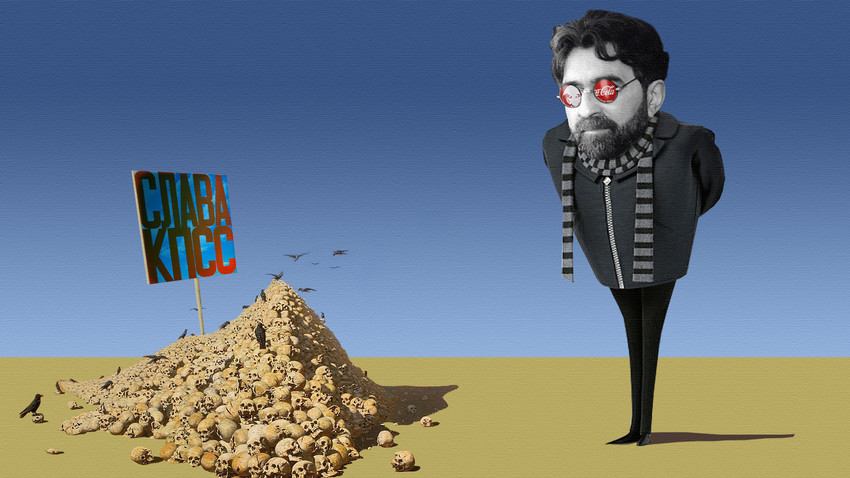

Considered one of the most successful and famous art groups today, AES+F has exhibitions all over the world. The multimedia installations and projects by Tatyana Arzamasova, Lev Yevzovich, Yevgeny Svyatsky and Vladimir Fridkes are devoted, primarily, to global culture and an analysis of modern values.
Their installation film “Inverso Mundus” (Latin for “inverted world”) was shown at the Venice Biennale and is still touring museums around the world.

No-one paints the sea like Ivan could! Painter Aivazovsky was revered as one of the most prolific artists, creating over 6,000 seascapes. Art historians and art critics consider ‘The Black Sea’ artwork to be his magnum opus, the result of the artist's rethinking of his life and career.
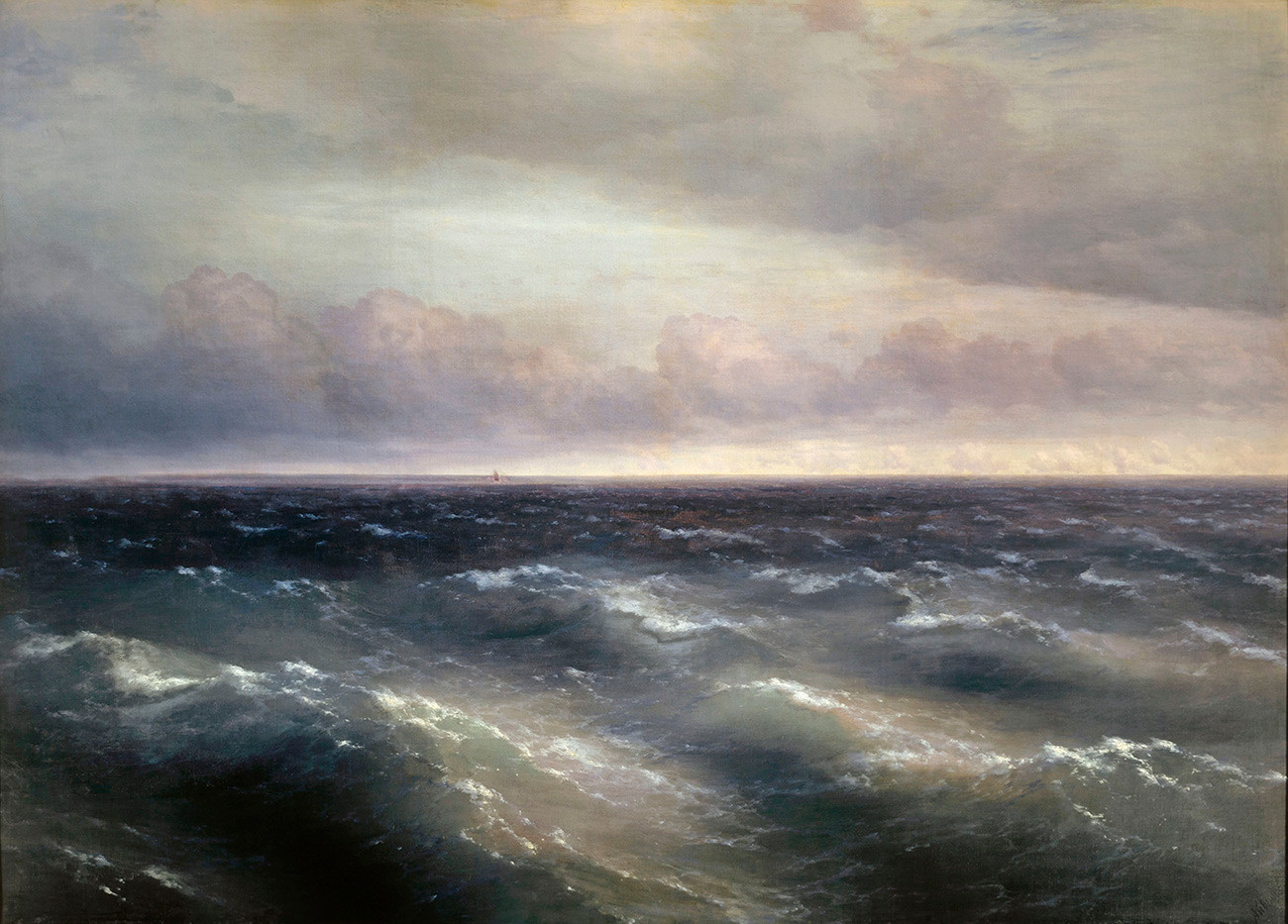
‘The Black Sea’, 1881
Ivan Aivazovsky / Tretyakov gallery
Ruslan Krivobok
SputnikAlbert’s famous artworks with text often become Internet memes, while his retrospective exhibition, "What did the artist mean by that?" at the Moscow Museum of Modern Art, remained in a state of permanent change throughout its duration. This is what Yuri Albert is all about. At the age of 15, this conceptualist artist found himself in the workshop of Komar and Melamid, under whose influence he began creating works that rethink the essence of modern art.
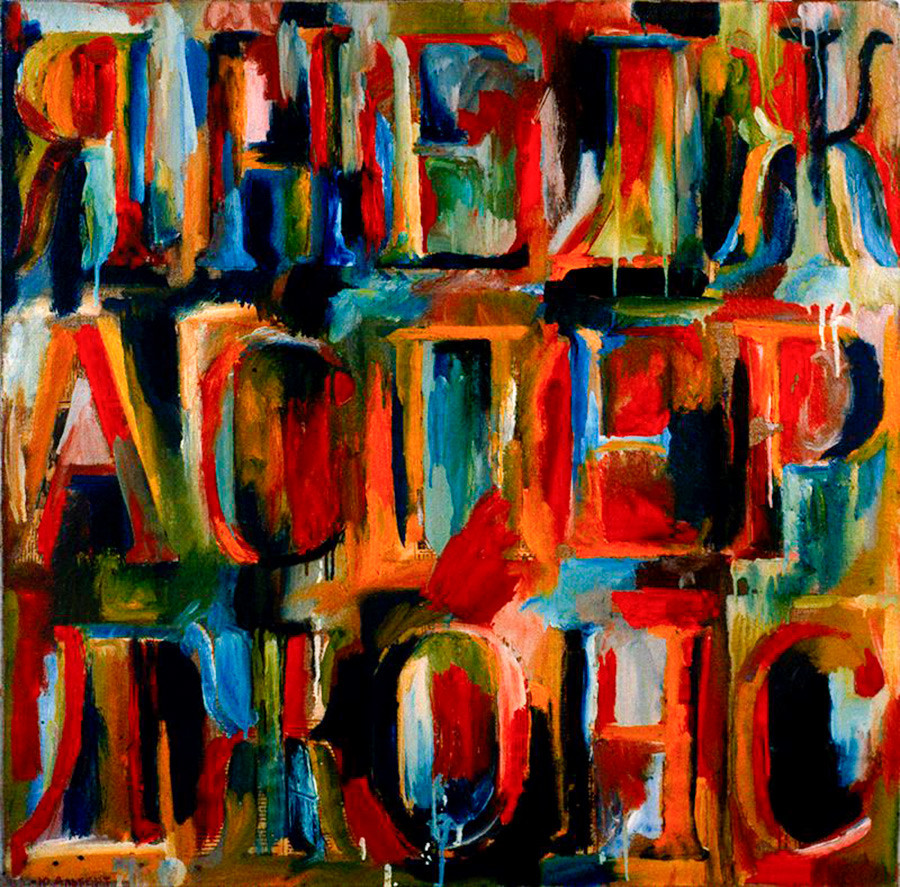
‘I am not Jasper Johns’, 1980
Sreda obucheniaAlbert's favorite trick is to take a well-known work, change it and turn it into his own, at the same time engaging in a polemic with the original. Take, for example, his landmark series of works in which the artist ironically compares himself with international art stars.

The European success of Sergei Diaghilev's famous Russian Seasons in Paris was largely due to Bakst. His sets and costume sketches for Ballets Russes productions became a sensation in their own right: they were even exhibited in the Louvre, while Bakst's Orientalist style set a fashion in Paris for turbans, wide trousers and colored wigs.
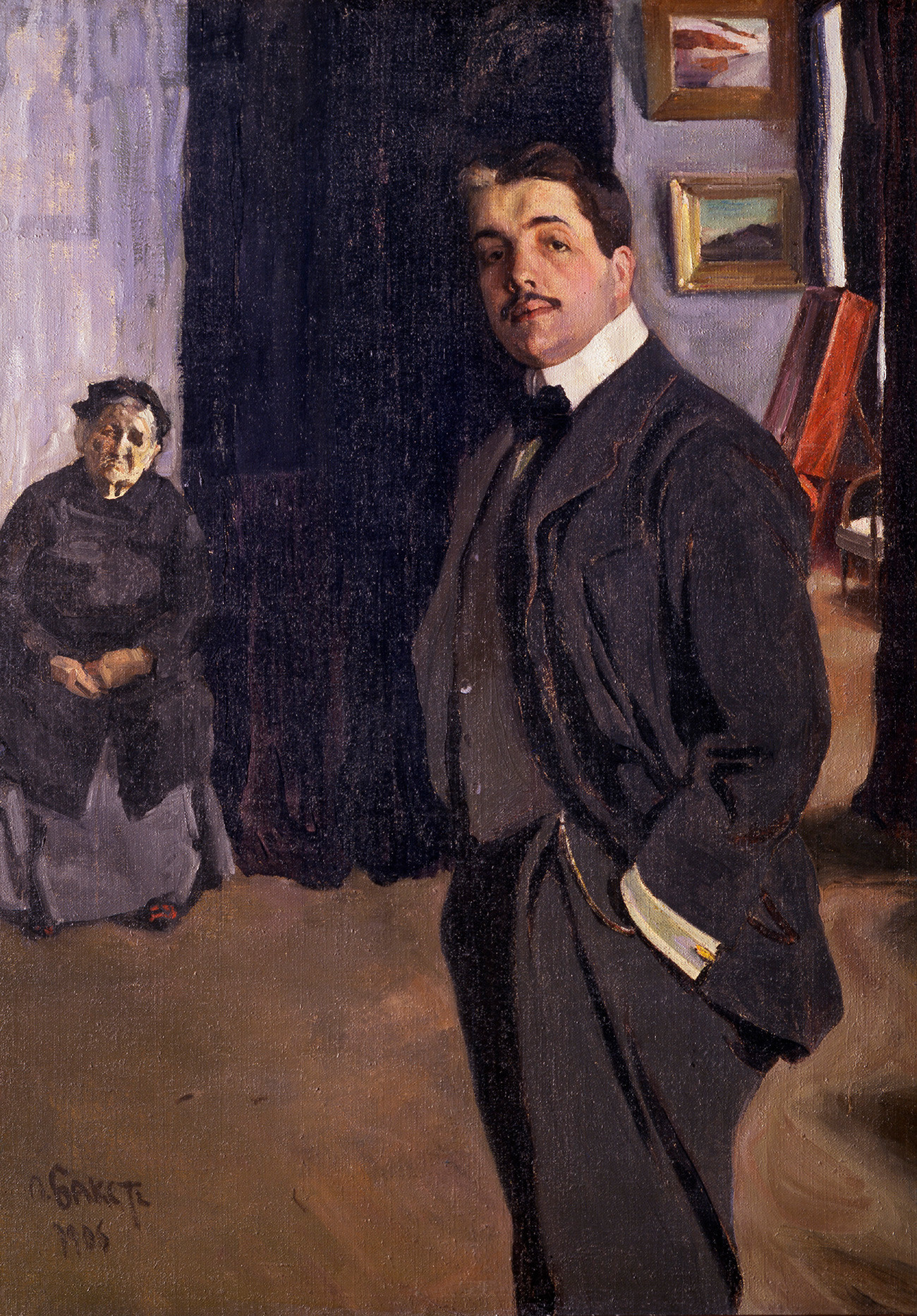
‘Portrait of Sergei Diaghilev and his Nanny’, 1906
Global Look Press
The eccentric Bartenev made a name for himself in the 1990s: his costumes made of any available materials, as well as performances and installations, became a symbol of the time.
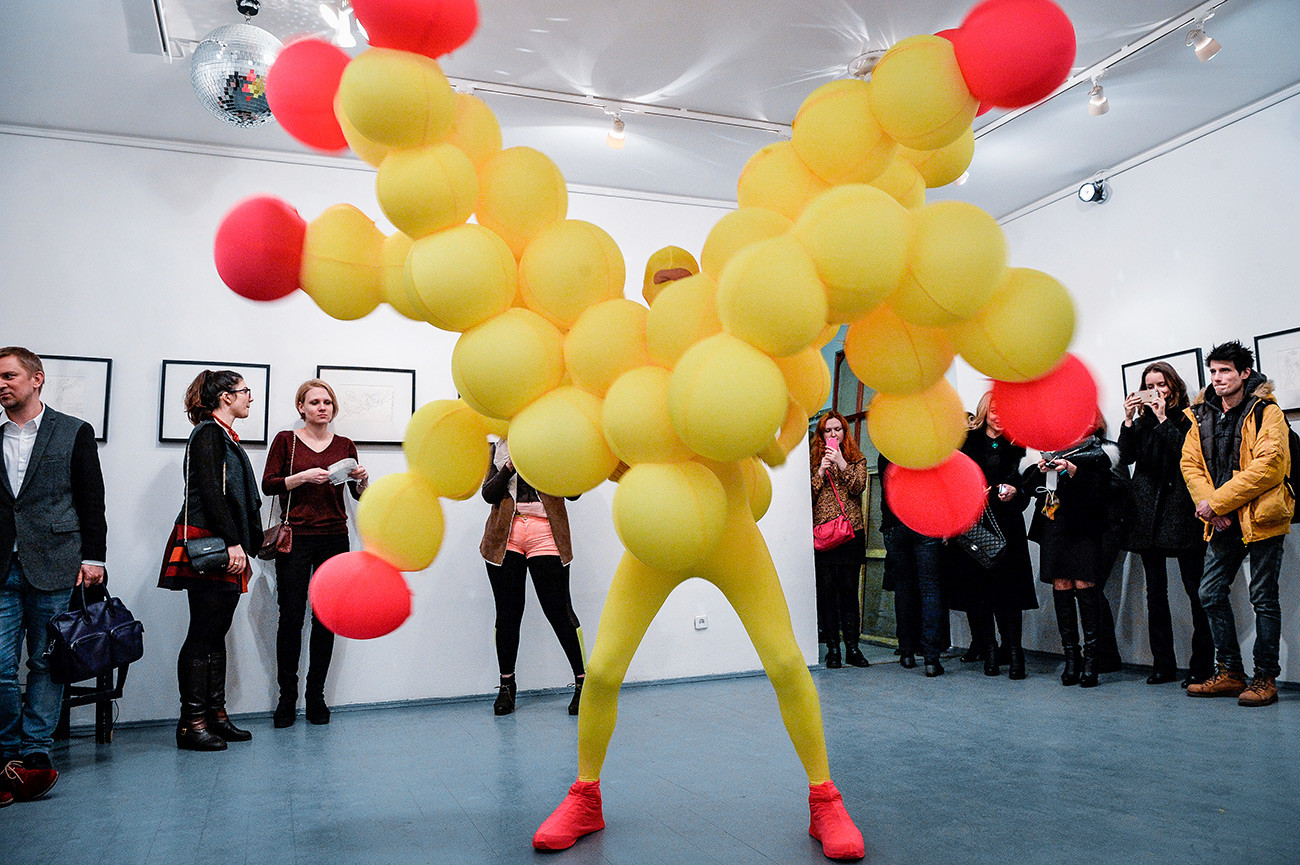
‘Bubbles of Hope’ performance, 2013
Evgeny Odinokov/SputnikSince then, he has become known as "a master of the outrageous", a one-man festivity and a walking performance: Bartenev stands out in a crowd thanks to his bright freakish costumes. They continue to be his way of exploring the world or rethinking familiar plots.

Avant-garde artist Bielutin had a reputation for experimentation and mystification. He set up a studio in Moscow and a kind of a school called New Reality, which united more than 3,000 artists. In 1962, works by his studio's abstract artists were exhibited at the Manezh exhibition hall in Moscow.
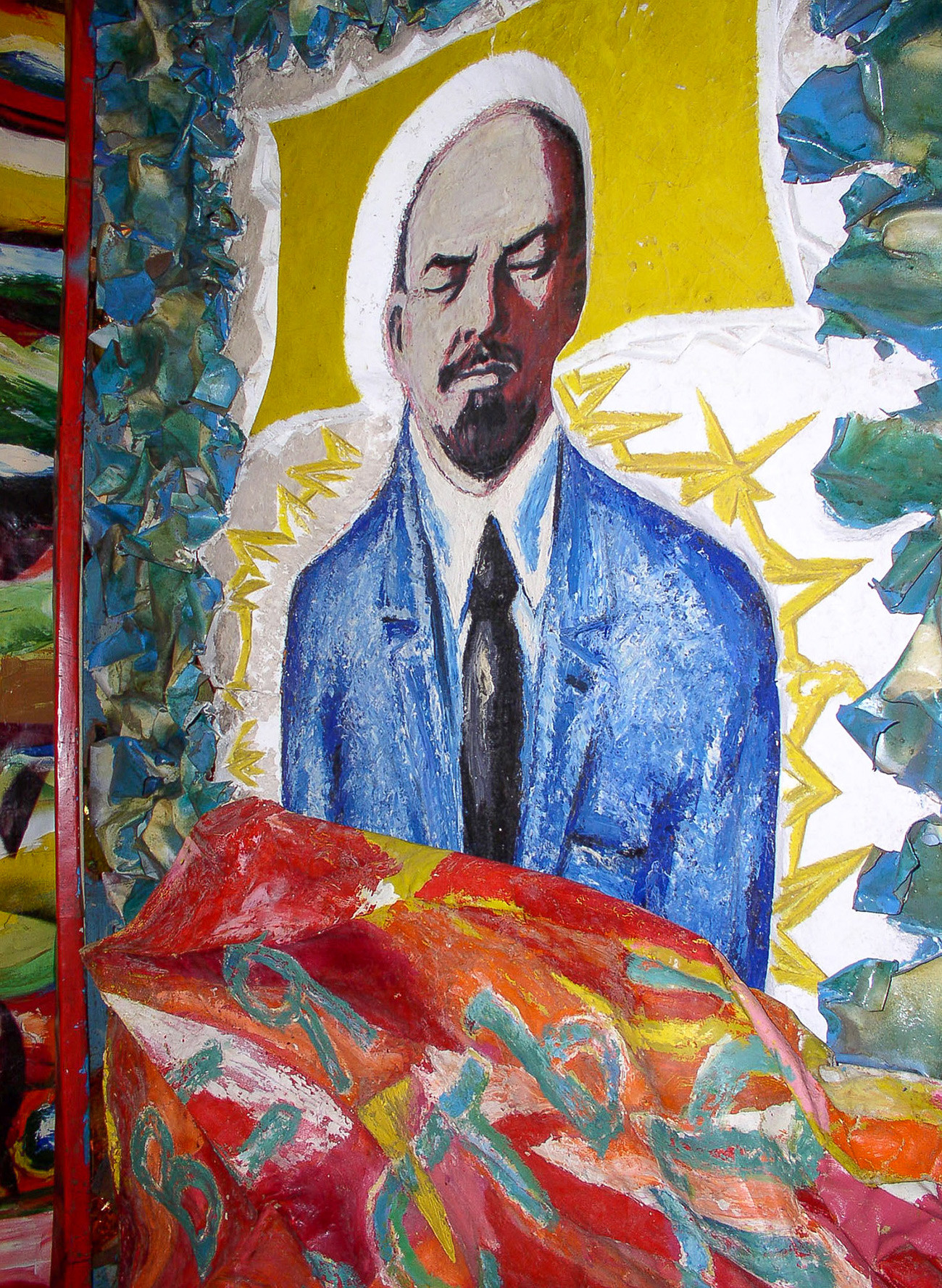
‘Lenin's Funeral’, 1962
Lyubov Chilikova/SputnikThe exhibition was visited by Communist Party Secretary-General Nikita Khrushchev, who hated what he saw, describing it "a mess". After that, New Reality was virtually banned, with Bielutin becoming a recluse and not displaying his works almost until perestroika.

Borisov-Musatov was a symbolist, who specialized in painting dilapidated old manors, garden tea parties and members of the Russian nobility at the turn of last century. They say that as a representative of the Silver Age, he tried to capture "the vanishing world" and the last echoes of an outgoing era.
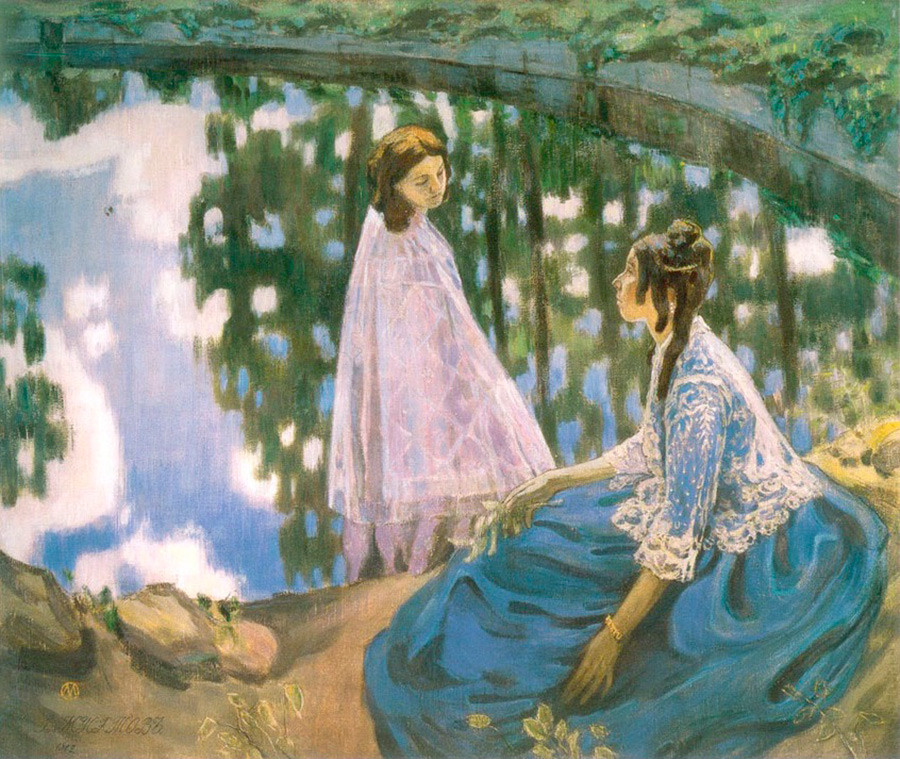
‘The Pool’, 1902
Victor Borisov-Musatov / Tretyakov Gallery‘The Pool’ was the starting point of his recognition as a symbolist artist: the painting depicts his sister and bride sitting by a country house pond. The picture became his wedding gift to his wife and his first significant success.

Bryullov was one of the best portrait painters of his time. He painted official and private portraits of the Russian aristocracy, attended imperial receptions and knew Alexander Pushkin.
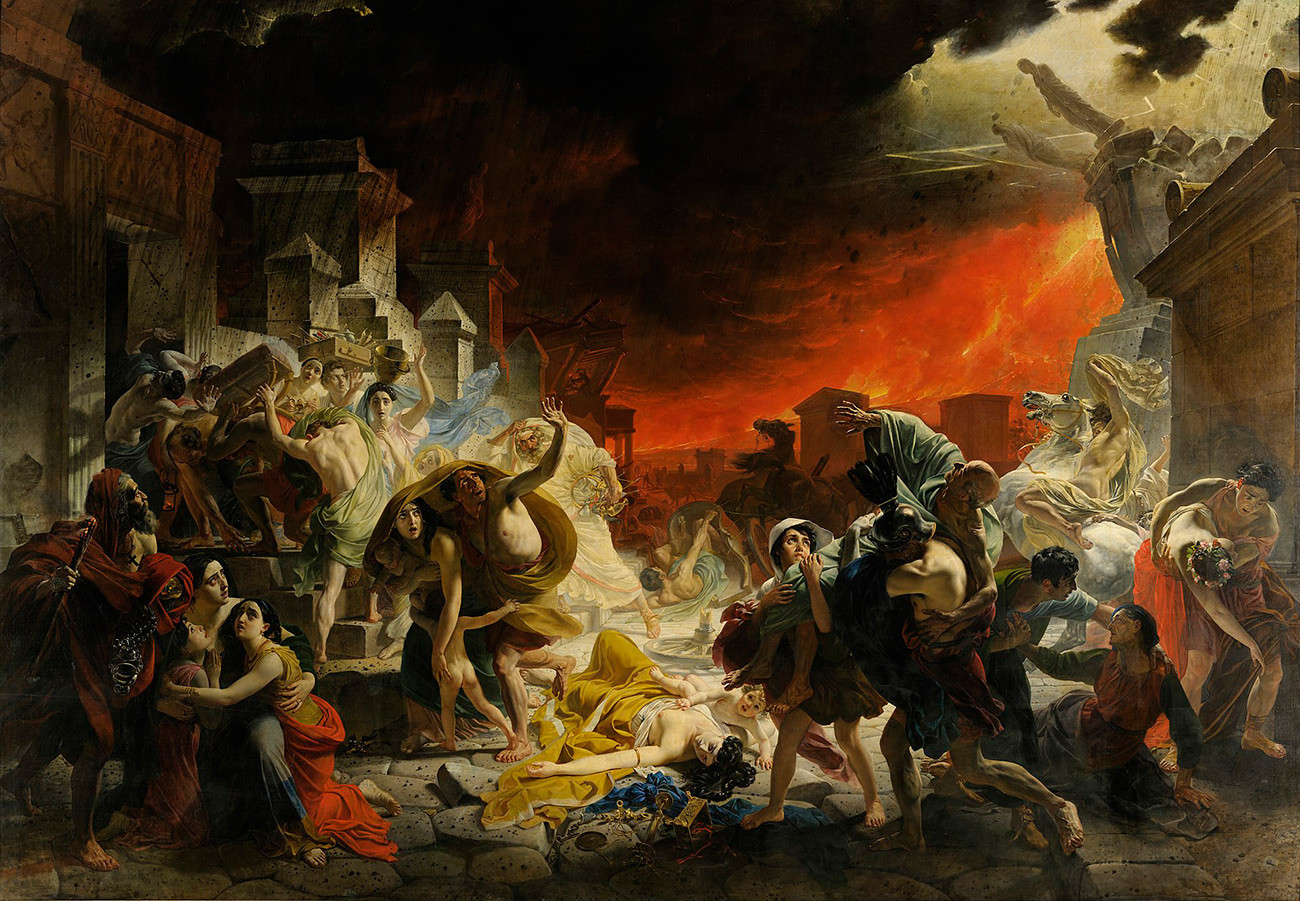
‘The Last Day of Pompeii’, 1833
Karl Bryullov / The State Russian MuseumBut all that came after 12 years living in Italy, six of which Bryullov had spent working on his monumental work ‘The Last Day of Pompeii’. For it, the artist received the Grand Prix at the Paris Exhibition and recognition in Europe and Russia.

He painted the Russian aristocracy, including the emperor, but is better known for his portraits of young ladies, which are displayed not only in the Tretyakov Gallery in Moscow but also at the Louvre in Paris. Borovikovsky's trademark achievement was his ability to express the distinct sensuality of his models.
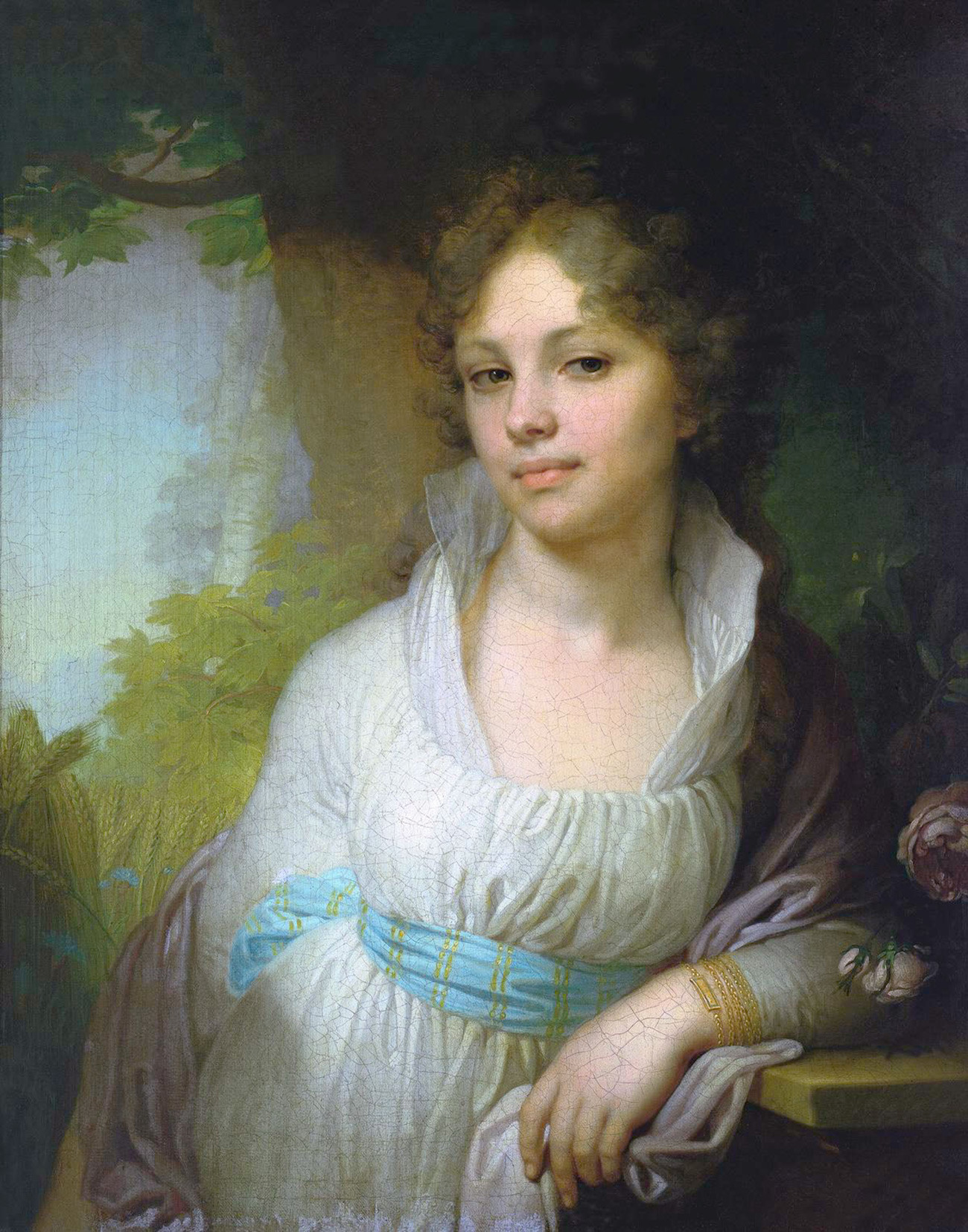
‘Portrait of Maria Lopukhina’, 1797
Vladimir Borovikovsky / Tretyakov Gallery
In the Soviet Union, his works were rejected, and he found recognition only with the start of perestroika. In 1988, at Sotheby's first and only auction in the USSR, his "Fundamental Lexicon" was sold to a Western collector for a (then) record-breaking $416,000 (following an interrogation by the KGB, the predecessor to the FSB). A couple of weeks later, Bruskin was in America, and his work has since been exhibited in the world's most famous museums.
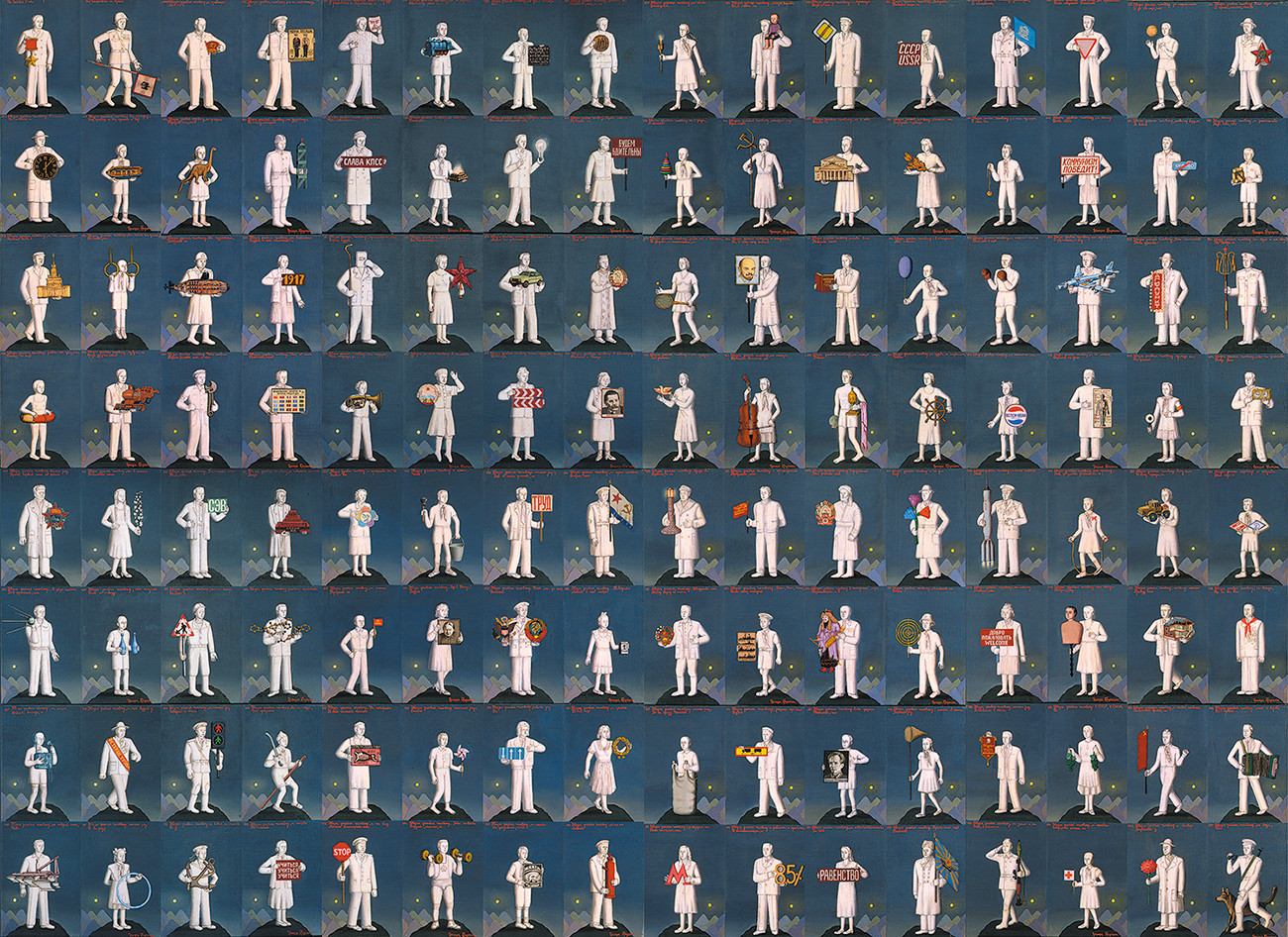
‘Fundamental Lexicon’, 1986
Press Photo‘Fundamental Lexicon’ is a series of canvases in which numerous plaster figurines - pioneers, athletes, proletarians, Komsomol members – are carrying the emblems of official Soviet culture, the visual code of Soviet mass agitation and propaganda.

Burliuk gained recognition as "the father of Russian futurism" both in Russia and abroad, in particular, in New York, where he settled in 1922 and was active in pro-Soviet circles. Burliuk promoted futurism and cubism by all means available to him: he published a magazine, printed brochures, wrote poems and reviews, and painted.
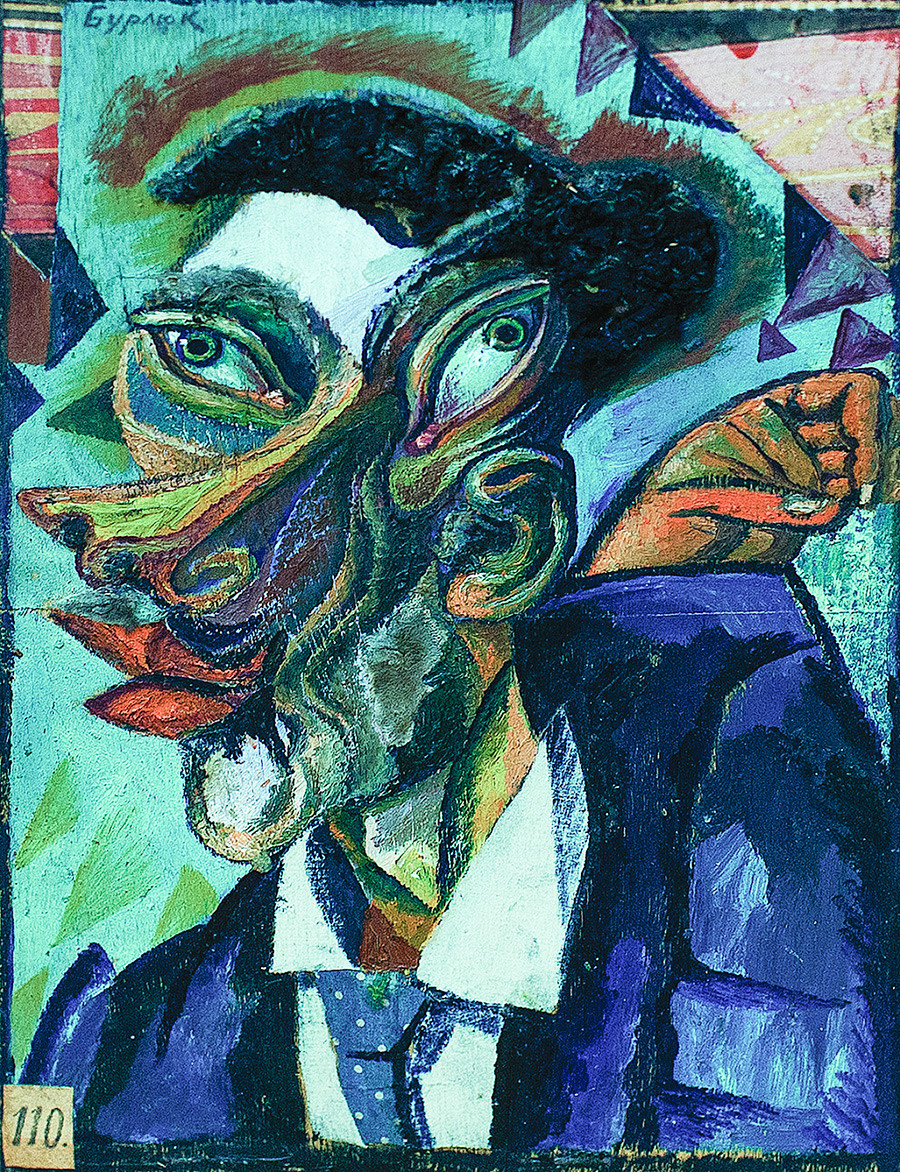
‘Portrait of My Uncle’, the 1910s
David Burliuk / Irkutsk Regional Art Museum after the name of V.P. SukachevGenuine success came to him with his ‘Portrait of My Uncle’, Burliuk's only painting that he managed to find a buyer for in almost every city. It became his manifesto of cubo-futurism. "The artist created [the portrait] quickly in a hotel, by gluing newspaper clippings into an angle-torn face, which had three eyes, two noses and so on," his friend and fellow artist Yevgeny Spassky recalled.

Bulatov was one of the founders of Sots Art, along with Komar and Melamid. His solo exhibitions are held in leading museums and galleries around the world.
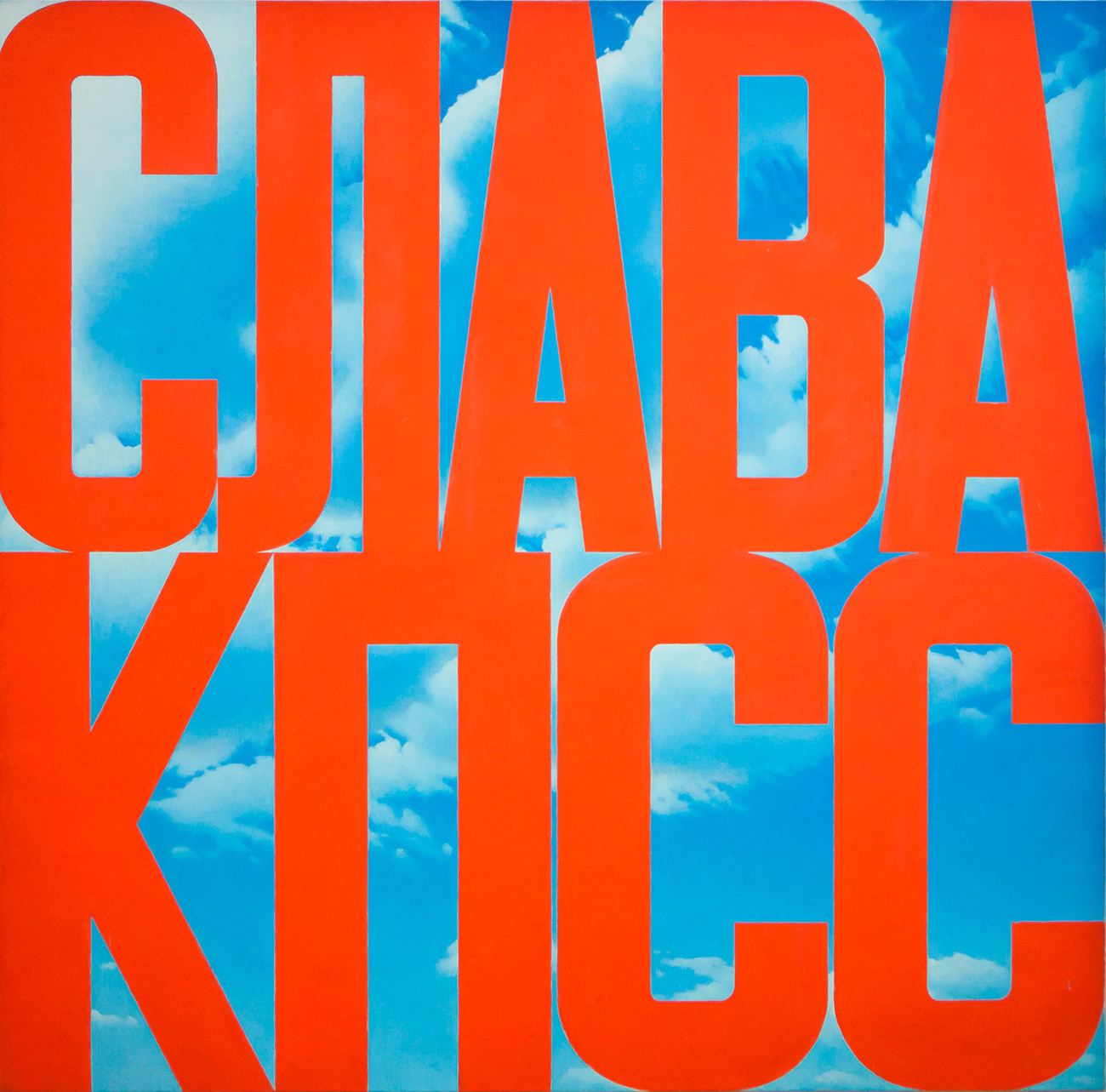
‘Glory to CPSU II’, 2002-2005
Legion Media"Space is freedom," Bulatov used to say. Literally, ‘Glory to the CPSU’ is a Soviet slogan set against the background of a blue sky. Metaphorically, it is freedom that is seeping even through the grid of communist ideology.

One of the leaders of the Russian avant-garde, Marc Chagall created his unique, inimitable style. His most famous work depicts everything that the artist had at that moment in his life: himself, his wife and everlasting muse Bella and the houses of his native Vitebsk.

‘Over the Town’, 1918
Tretyakov GalleryThis composition stayed with Chagall in emigration in France too, except that he replaced himself and his wife with a newlywed couple, and Vitebsk with Paris.

Chernysheva is one of the most internationally sought-after Russian artists of today. Her paintings, videos, graphics and photographs were presented at several Venice Biennales and are exhibited in museums from Vienna to New York.
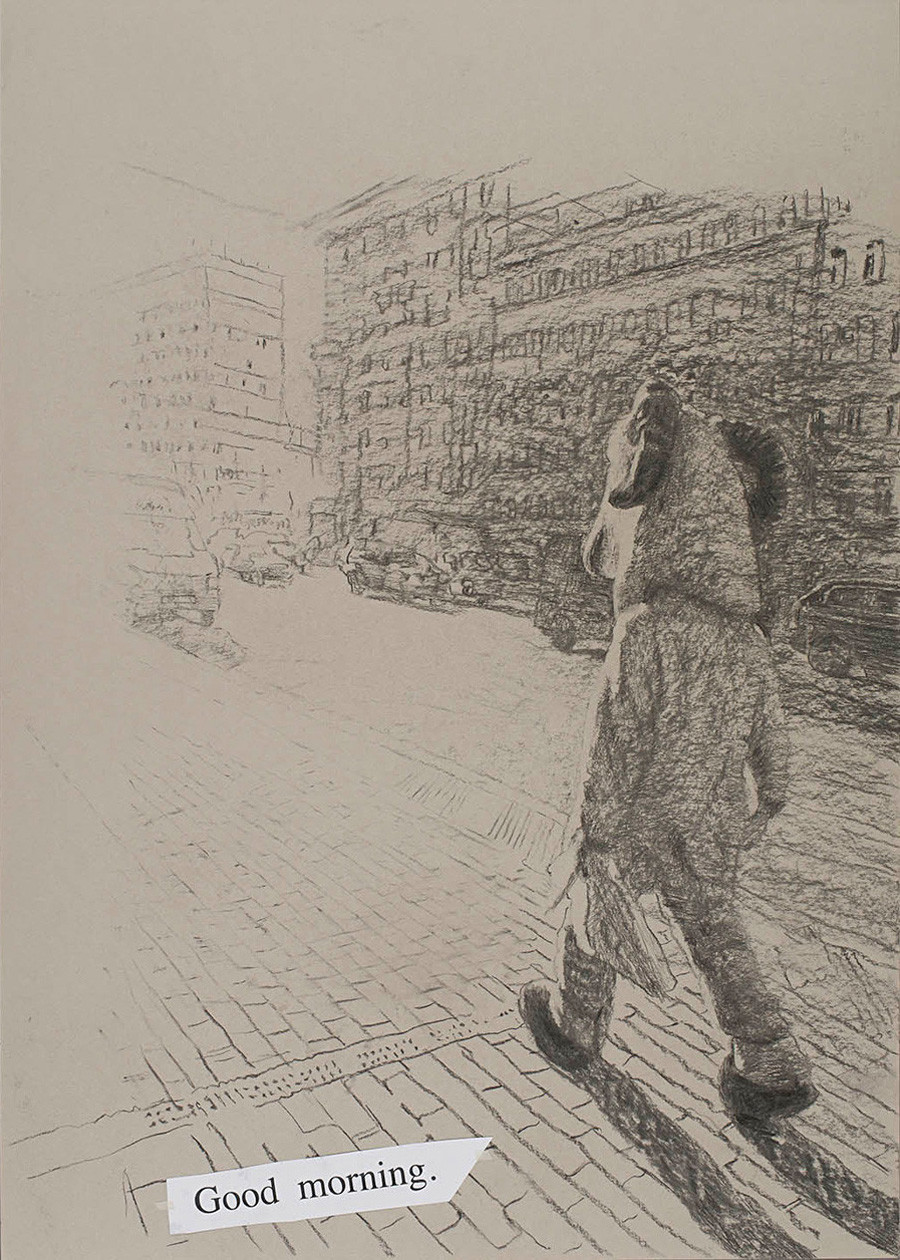
‘Untitled. Good Morning’, 2014
Olga ChernyshevaShe is a stranger to monumentality, and is inspired by the small artifacts of life: mundane occurrences, like a song on the subway or homeless people sleeping on a bench. She uses these everyday scenes to create an image (and a very intimate one) of modern Russia.

Another hero of the Soviet artistic underground, Chuikov is fascinated by the idea of combining illusion and reality, different styles and languages. This is how his ‘Windows…’ series came about. For example, in his "Roman" profile, one can decipher Piero della Francesca's famous portrait of Federico da Montefeltro. But for Chuikov, it is only a silhouette and a red dot. What is it really? The sun? Or a red dot laser sight pointing at the temple of a classic being ridiculed by postmodernism?
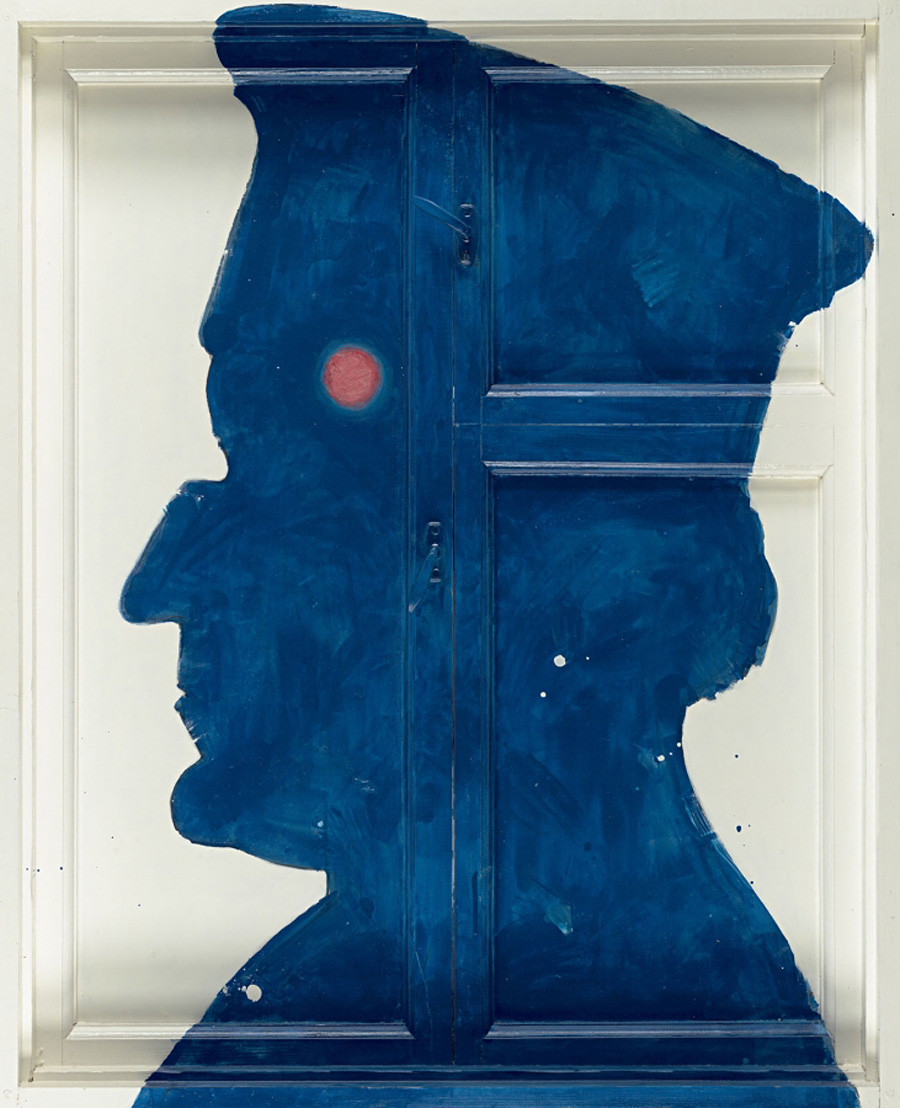
‘Window LXIV’, 2002
Moscow Museum of Modern ArtChuikov's works can be found at the Centre Pompidou, the Zimmerli Art Museum, the Russian Museum, and the Tretyakov Gallery.

This major figure in Soviet official art was one of the pillars of socialist realism, celebrating good health, sports, labor, and the new, Soviet, way of life. He polished this style to perfection: his strong, pumped-up men and women tirelessly, and with a smile on their faces, defend cities, work in factories and glorify the party.
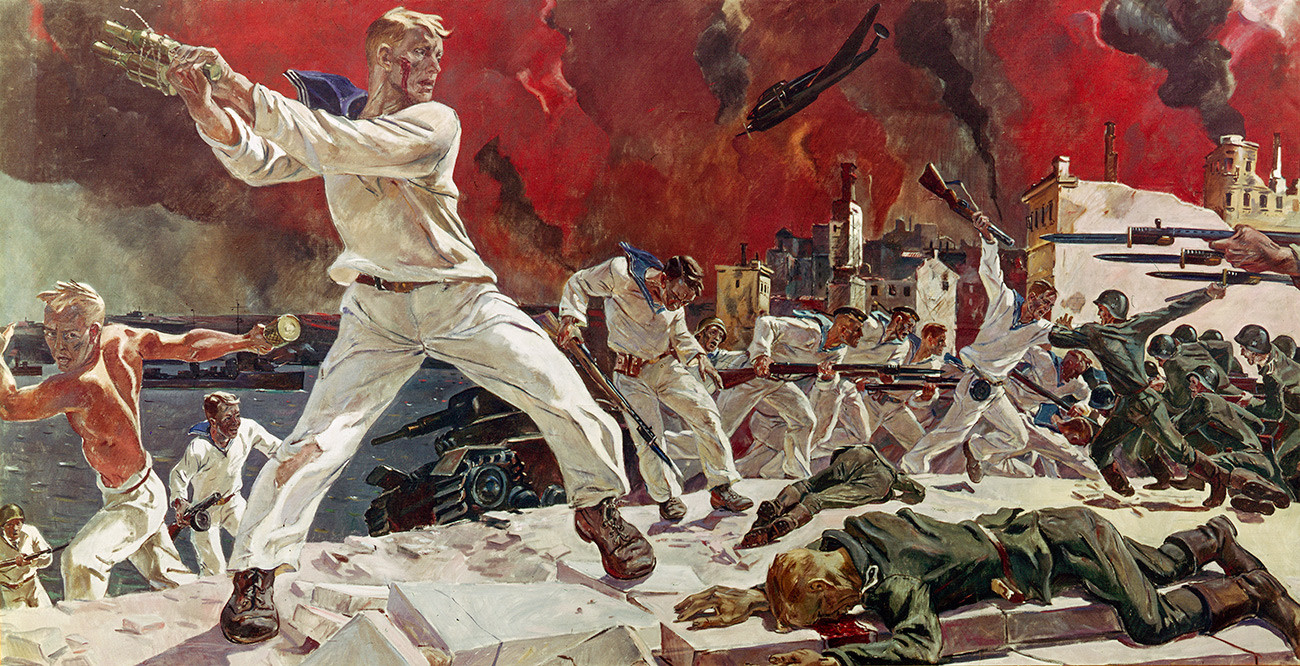
‘The Defense of Sevastopol’, 1942
I. Kogan/SputnikDeyneka's contemporaries either idolized or hated him: where he depicted heroism in the name of communism, others saw deprivation and lack of choice. After all, his utopian projects were created against the backdrop of mass poverty and reprisals.

This duo of Moscow Conceptualists, already considered living legends of contemporary art, experiment with the creation of social utopias with the help of fictional characters.
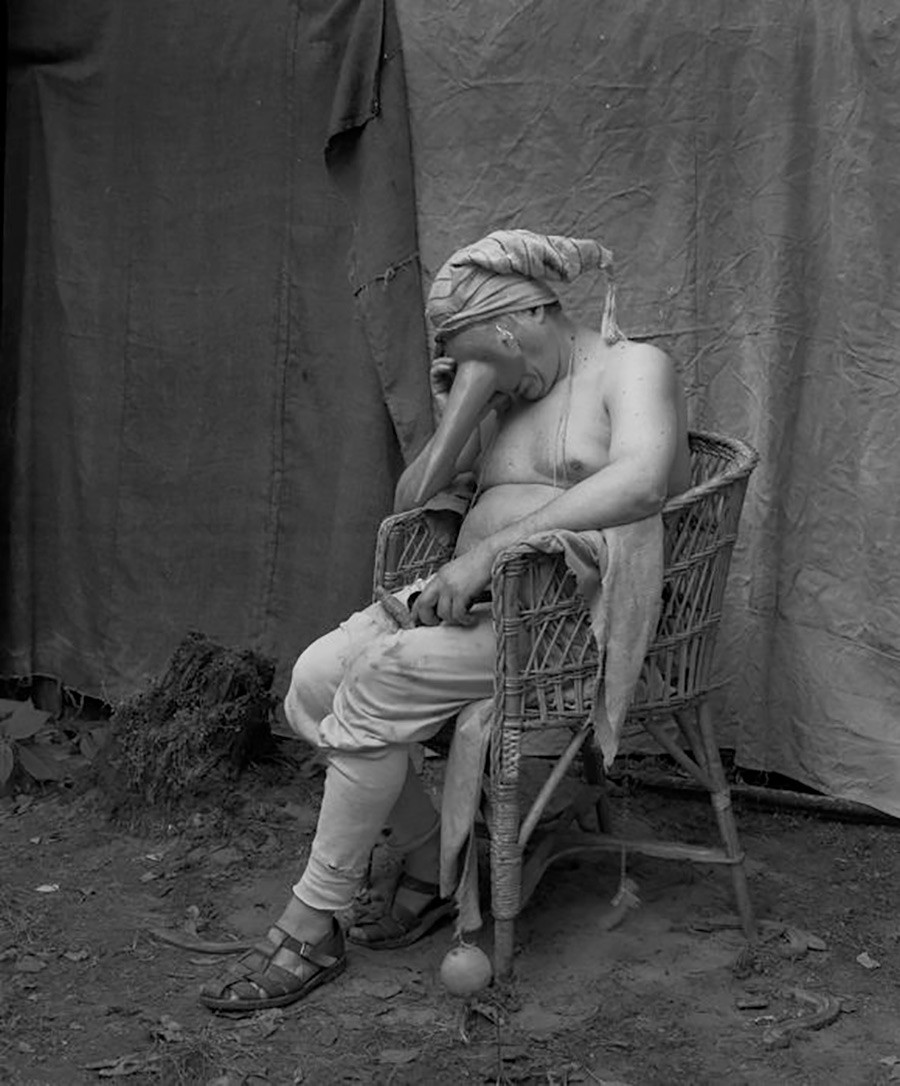
‘Homo Lignum’, 1996 - …
Igor MakarevichOne of the most complex and longest of them, the ‘Homo Lignum’ project, is still ongoing. It tells the story of a humble accountant, Nikolai Ivanovich Borisov, who has a manic desire to become a tree.

Ekster was one of the "Amazons of the avant-garde" and a fixture at all major exhibitions of the new art of the early 20th century. In 1907, she left for Paris for a while, where she made friends with Pablo Picasso, Fernand Leger, Guillaume Apollinaire and many others, after which she began promoting their works back home, helping Russian avant-garde artists to adapt their techniques to their work.
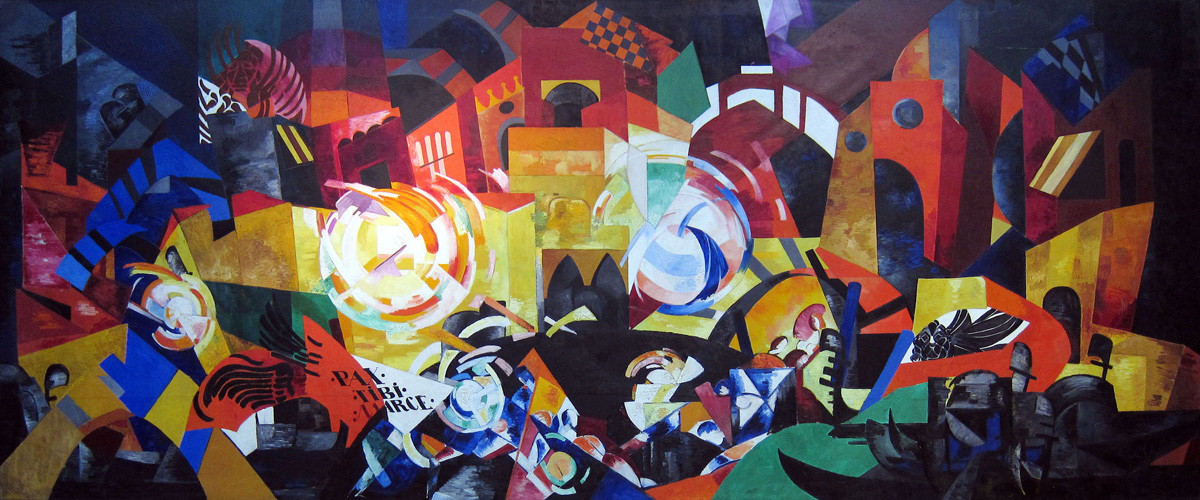
Venice, 1918.
Tretyakov GalleryEkster herself was a follower of futurism and, more specifically, of its peculiar Russian form, cubo-futurism. She illustrated futurist magazines, designed theater sets, costumes, pillows and even a uniform for the Red Army. But in 1924, she went to the Venice Biennale and never returned to Russia.

A master of photo-realism, Faibisovich paints mainly Moscow. Furthermore, as his subject matter he chooses the city's less attractive features: shabby courtyards, wastelands, kiosks, stray dogs, guest workers, homeless people, ordinary passersby. Yet, it is exactly for this reason that Faibisovich's works are believed to be capturing the elusive nature of time. And they are sold at over $400,000 by the world's leading auction houses.
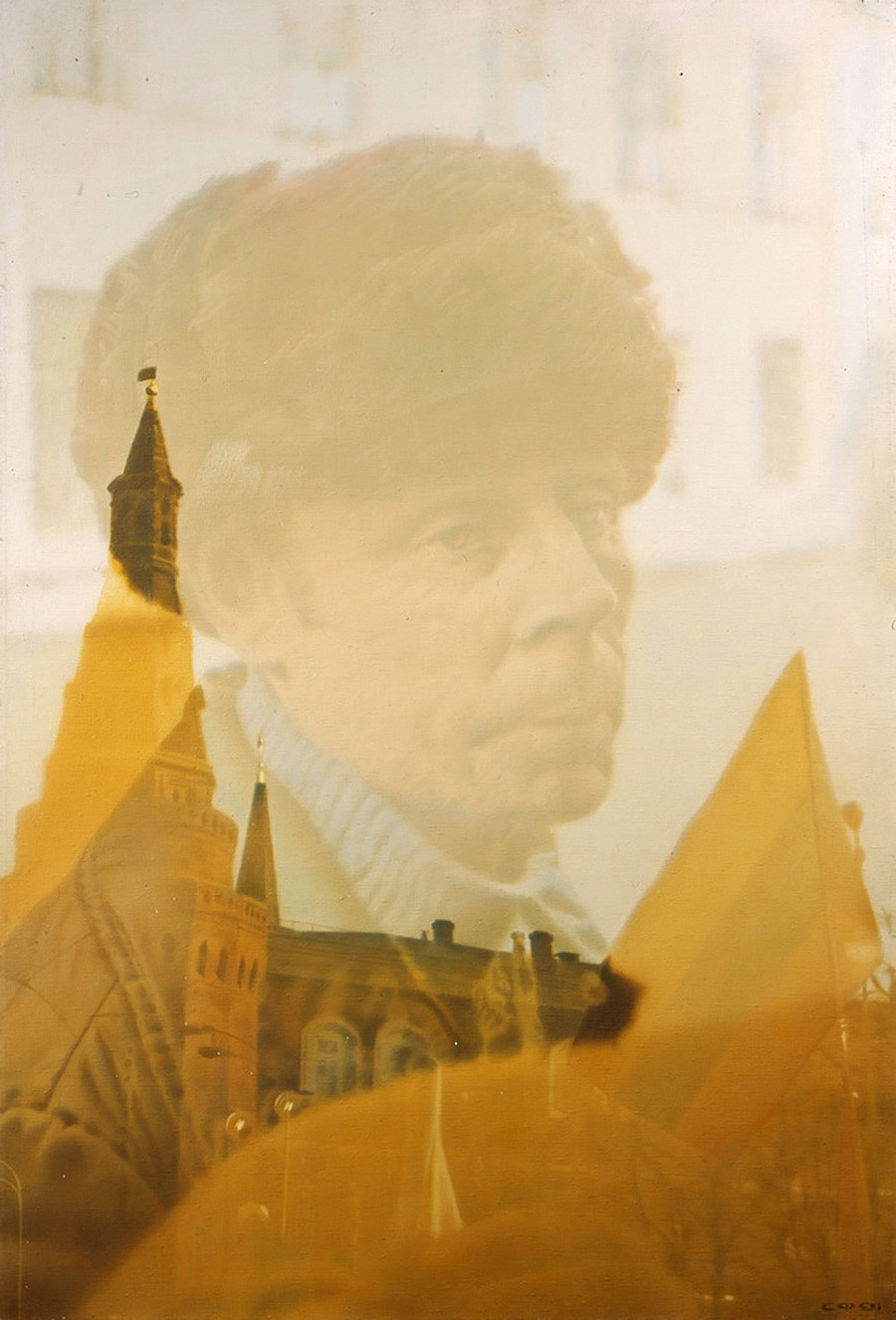
‘Russian’, 1991
Tretyakov gallery
Having rejected the Revolution, Fechin emigrated to the USA in 1923, where he lived happily for 30 years. That is why there are so many of his works in American museums and private collections abroad.
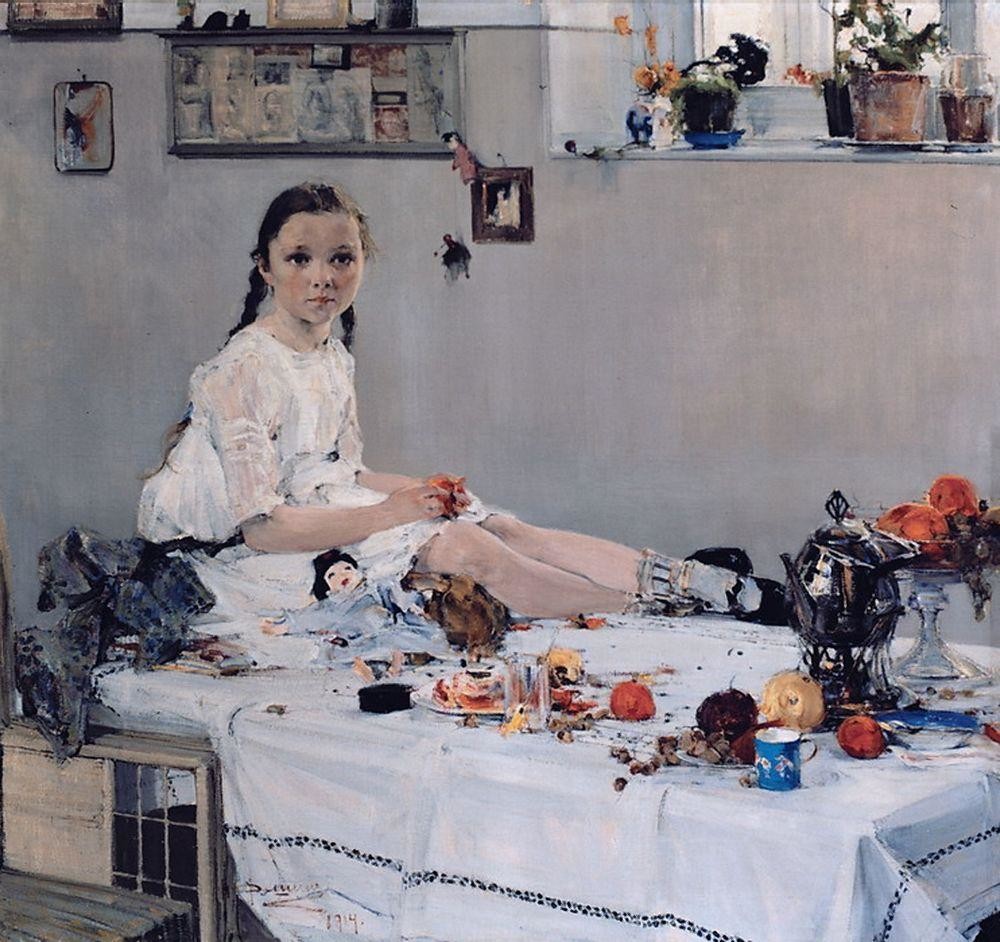
‘Portrait of Varya Adoratskaya’, 1914
Tatarstan State Museum of Fine ArtsHowever, before he left Russia, he managed to create one of his most significant paintings, the portrait of a young Varya Adoratskaya, which is often compared to Serov's ‘Girl with Peaches’.
These days, Fechin is among the most expensive Russian artists: in 2010, his canvas was sold for $11 million at a MacDougall's auction.

In the Russian Empire, marriage was often not for love. Society did not look favourably on unequal marriages, but many people in the mid-19th century still considered it a great way of improving one's financial situation and social status. This is what one of the most famous paintings by a leading genre artist, Fedotov, is about.
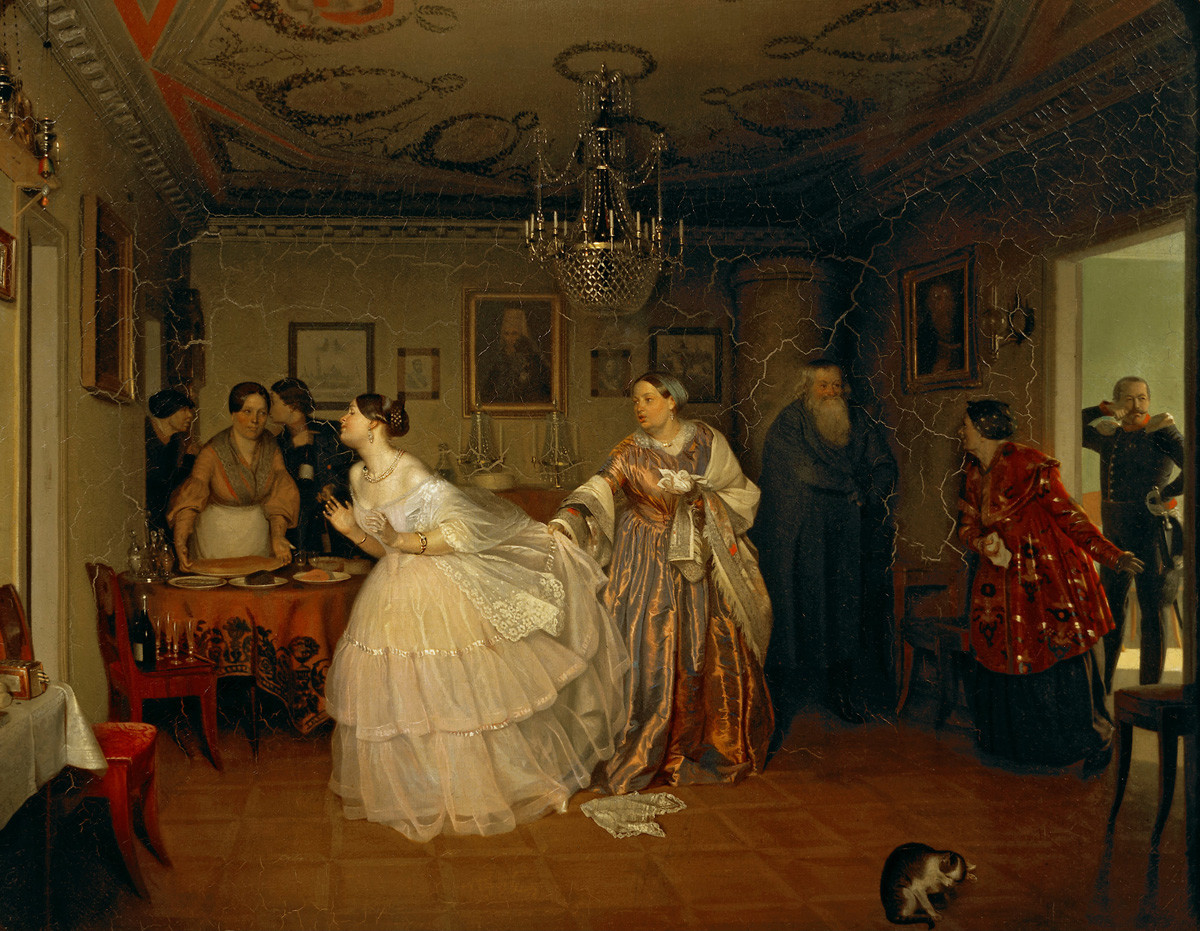
‘Major's Marriage Proposal’, 1848
Tretyakov galleryIn its time, the picture caused quite a stir: a merchant marries a daughter off to a bankrupt officer; the bridegroom will receive a dowry, while the merchant will become related to nobility.

Like many 19th century artists, Flavitsky spent time studying in Italy and is remembered for a single masterpiece.
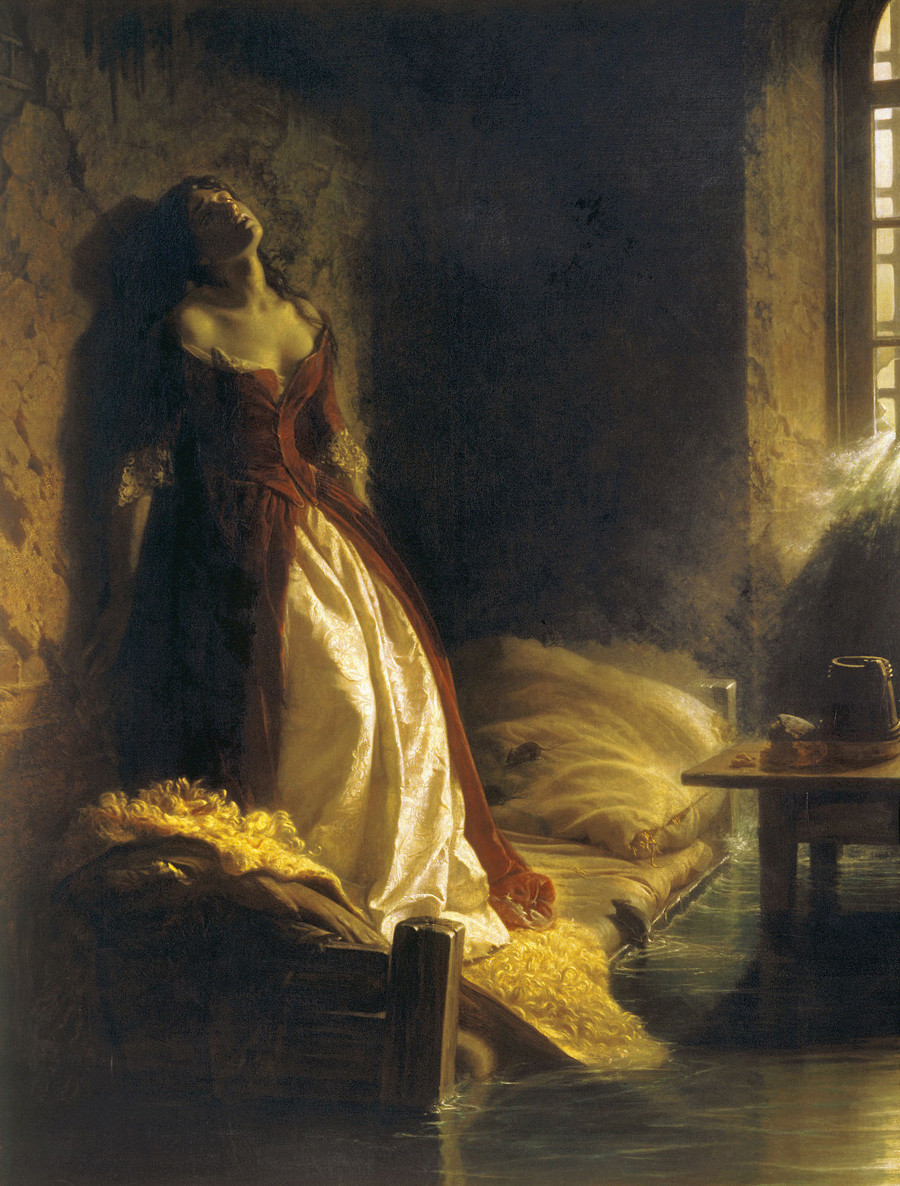
‘Princess Tarakanova’, 1864
Tretyakov galleryHis earlier paintings were dismissed by critics as "an imitation of Bryullov", but the artist still managed to leave a trace in history. The actual death of Princess Tarakanova (her real name remains unknown), who claimed to be the daughter of Empress Elizabeth, was not exactly as depicted - she died a political prisoner, except not in a flood, but of tuberculosis. Not that it mattered particularly: ‘Princess Tarakanova’ became Flavitsky's triumph. However, shortly after creating the painting, he died of consumption, which he had contracted in Italy.

Avant-garde artist Filonov considered himself a Communist through and through and believed that the people needed his art. He used the term "analytical art" to describe his multi-dimensional images and refused to sell his works to anyone. This was what killed him in the end: during the Siege of Leningrad, he sat in an ice-cold attic guarding his paintings and developed pneumonia, which killed him.
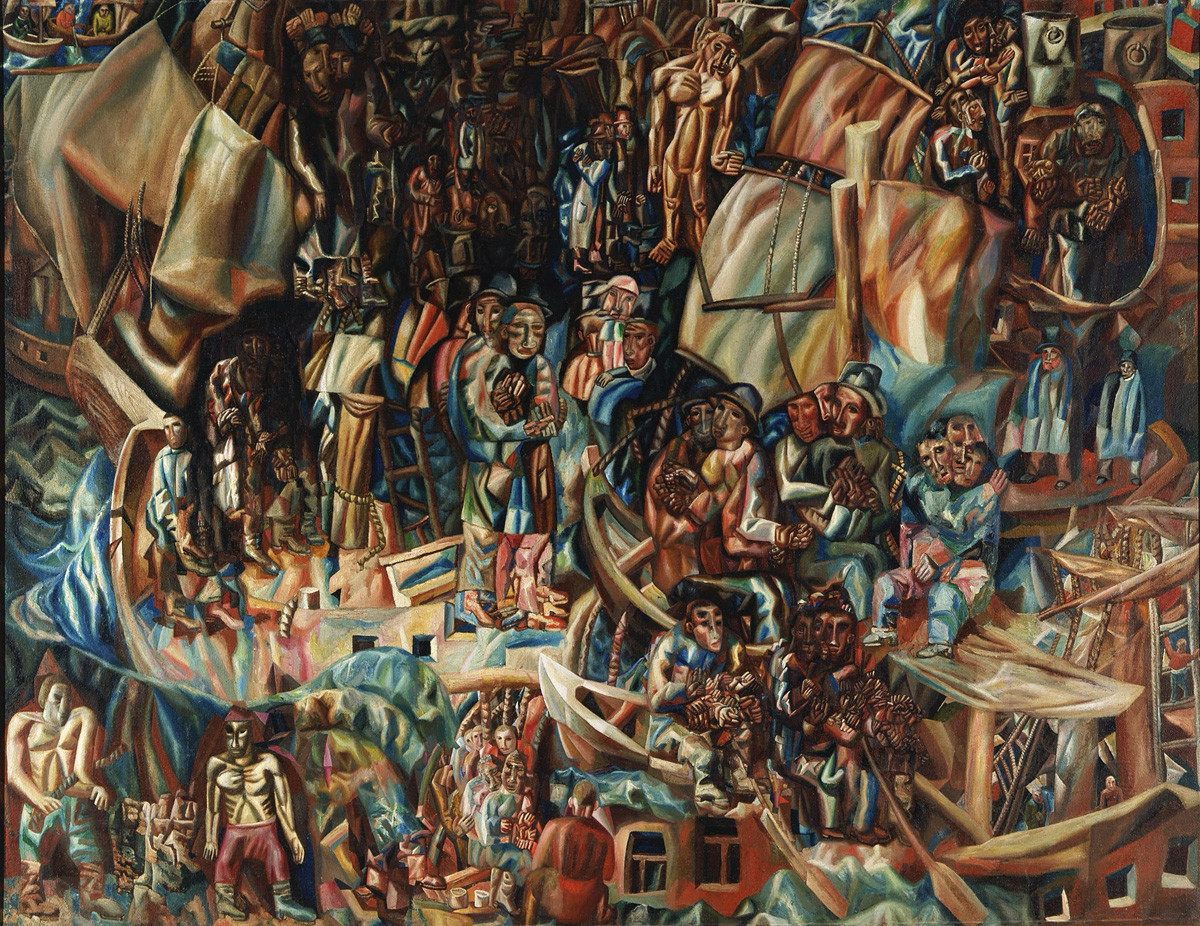
‘Ships’, 1913-1915
Tretyakov gallery
Ge offered an interpretation of religious storylines that ran counter to the established canon, for which he often fell foul of church censors. However, he was convinced that this was the way to find true emotions and meanings in well-known plots.
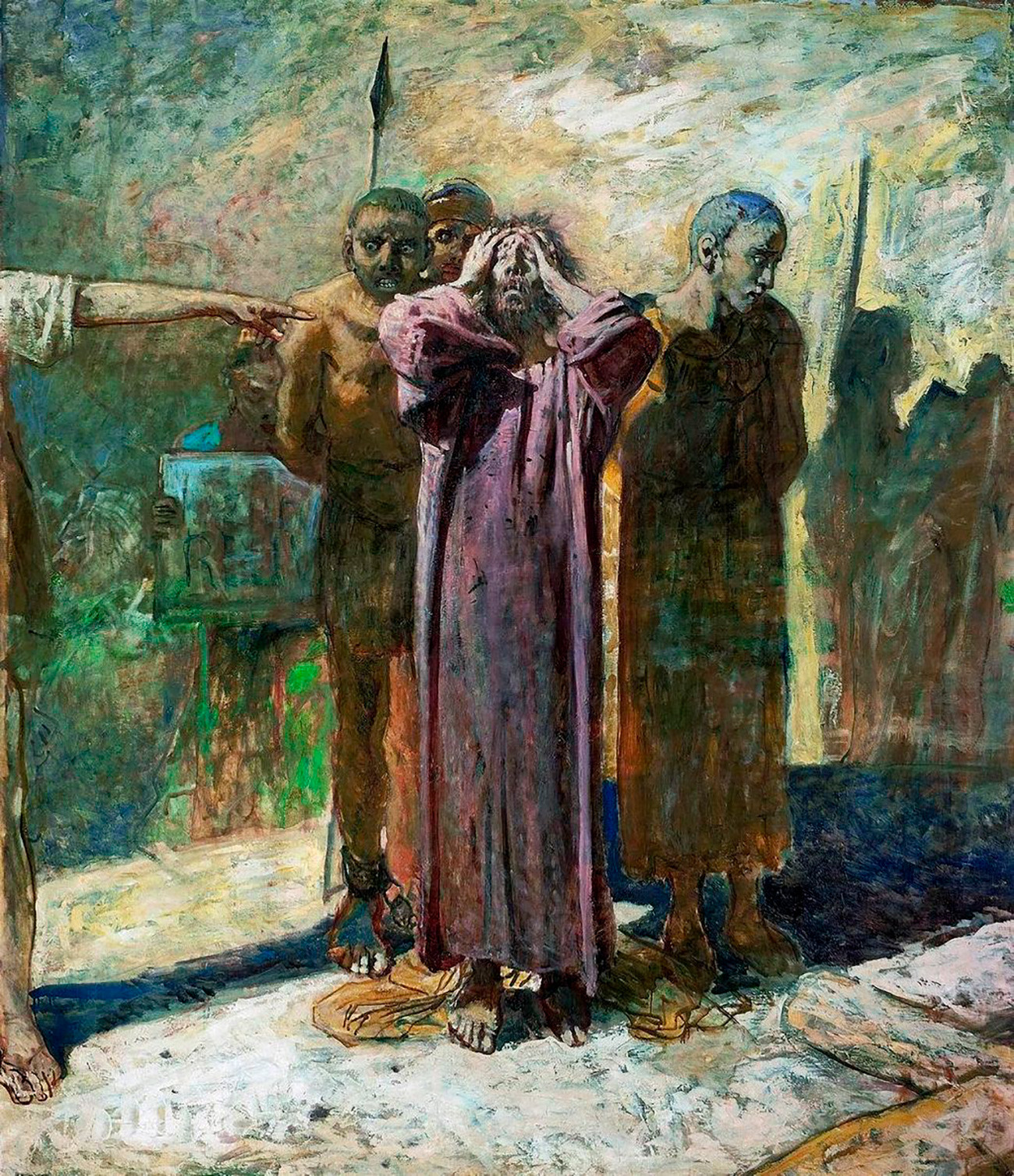
‘Golgotha’, 1893
Nikolai Ge / Tretyakov GalleryGe painted his famous ‘Golgotha’ a year before his death. "Yes, this painting tormented me terribly,” he wrote to his friend Leo Tolstoy. “Yesterday, I found the final thing that I need, a form that is quite alive. I found a way to depict Christ and the two thieves together on Golgotha, without the crosses... In a word... three souls alive on the canvas. I myself am crying when I look at this picture."

Goncharova, together with her husband Mikhail Larionov, was among the pioneers of the Russian avant-garde. From 1914, she worked on Diaghilev's Russian Seasons in Paris, where she remained until her death in 1962.
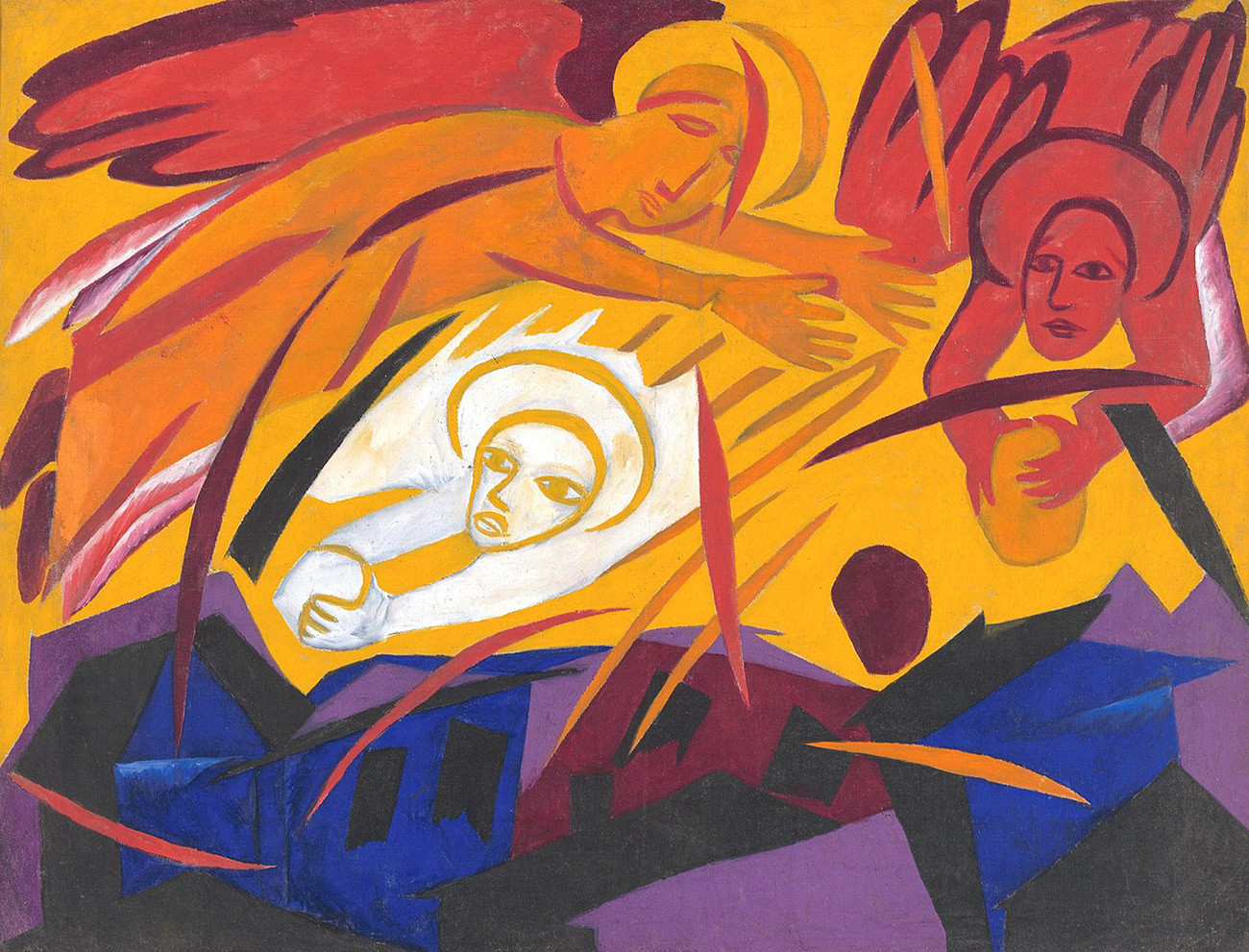
‘Angels Throwing Stones on the City’, 1911
Natalia Goncharova / Tretyakov GalleryToday, her works can be found in the world's leading art collections, including the Tate Modern in London and the Centre Pompidou in Paris. In 2010, Christie's sold a painting of hers for $9 million, making her the most expensive (at the time) female artist in history.

A leading Old Rus’ painter, Theophanes the Greek, is the creator of one of the holiest objects in Russian Orthodox Christianity. His Icon of the Virgin with the baby Christ in her arms is considered to be miraculous: according to legend, it often helped in battles.

‘Our Lady of the Don’, 1380
Tretyakov Gallery / Theophanes the GreekThis image, like Andrei Rublev's ‘Trinity’, has become part of the Russian cultural code.

Gutov belongs to the generation of artists who came into their own in the early 1990s. He creates new readings of canonical objects in culture, the Russian language, Russian icons and classical art in the belief that their essence can be conveyed in a matter of minutes. His most recognizable art objects are metal panels with a version of Rembrandt and old Russian icons. Once the viewer moves a little to the side, the image is distorted. The idea is that this distortion goes through all stages in the development of the 20th century, from cubism to expressionism to abstraction.
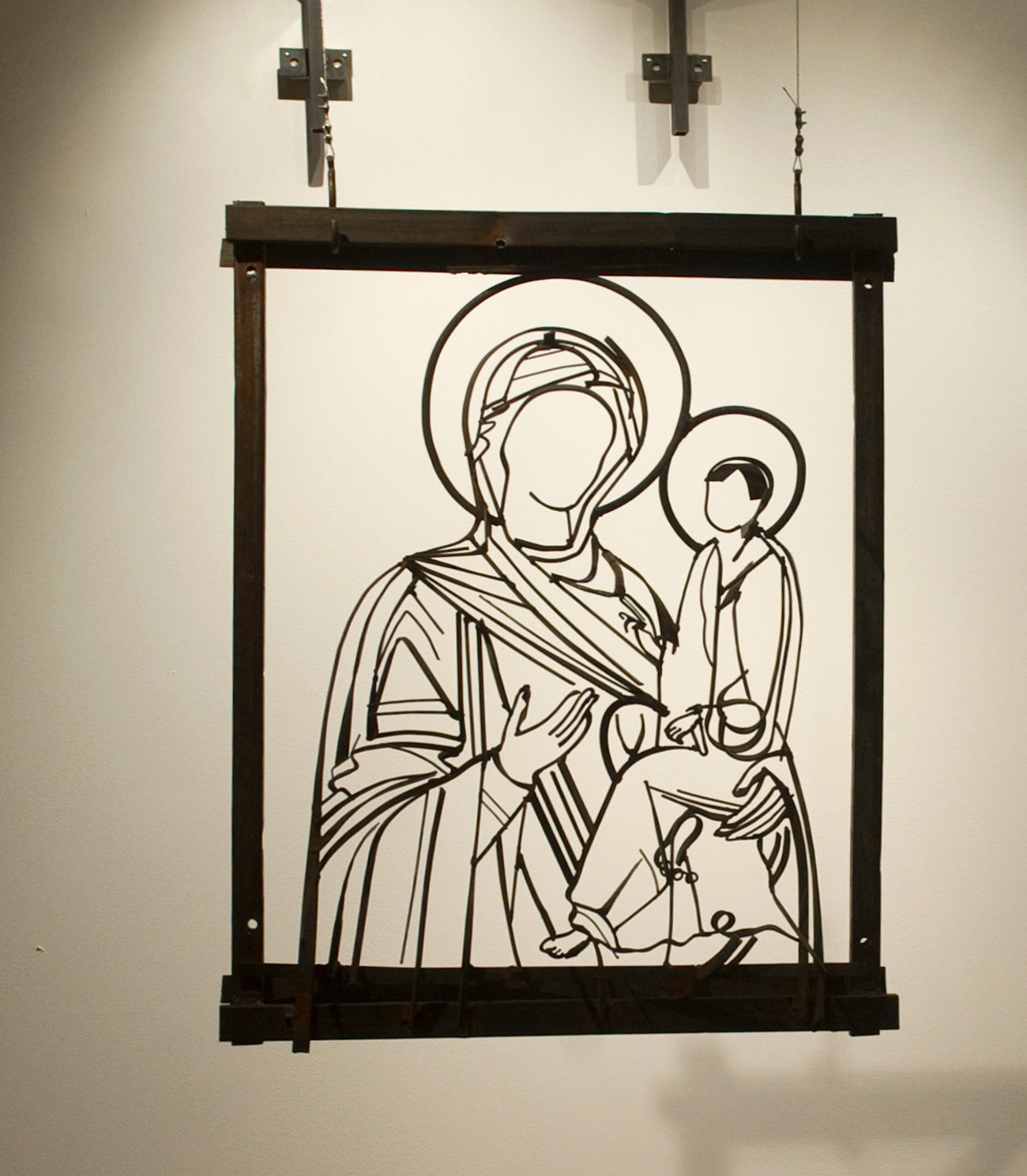
‘E’IK’ΩN’ project, 2012
Kirill Kallinikov/SputnikThe list of art venues where the artist has ever exhibited is practically endless, from the Venice and Sydney Biennale and Documenta in Kassel to the Guggenheim Museum.

Ivanov was an artist close to the emperor. He was particularly well-known for his paintings inspired by biblical and mythological plots. The Society of Artists even financed his trip to Italy "for further improvement".
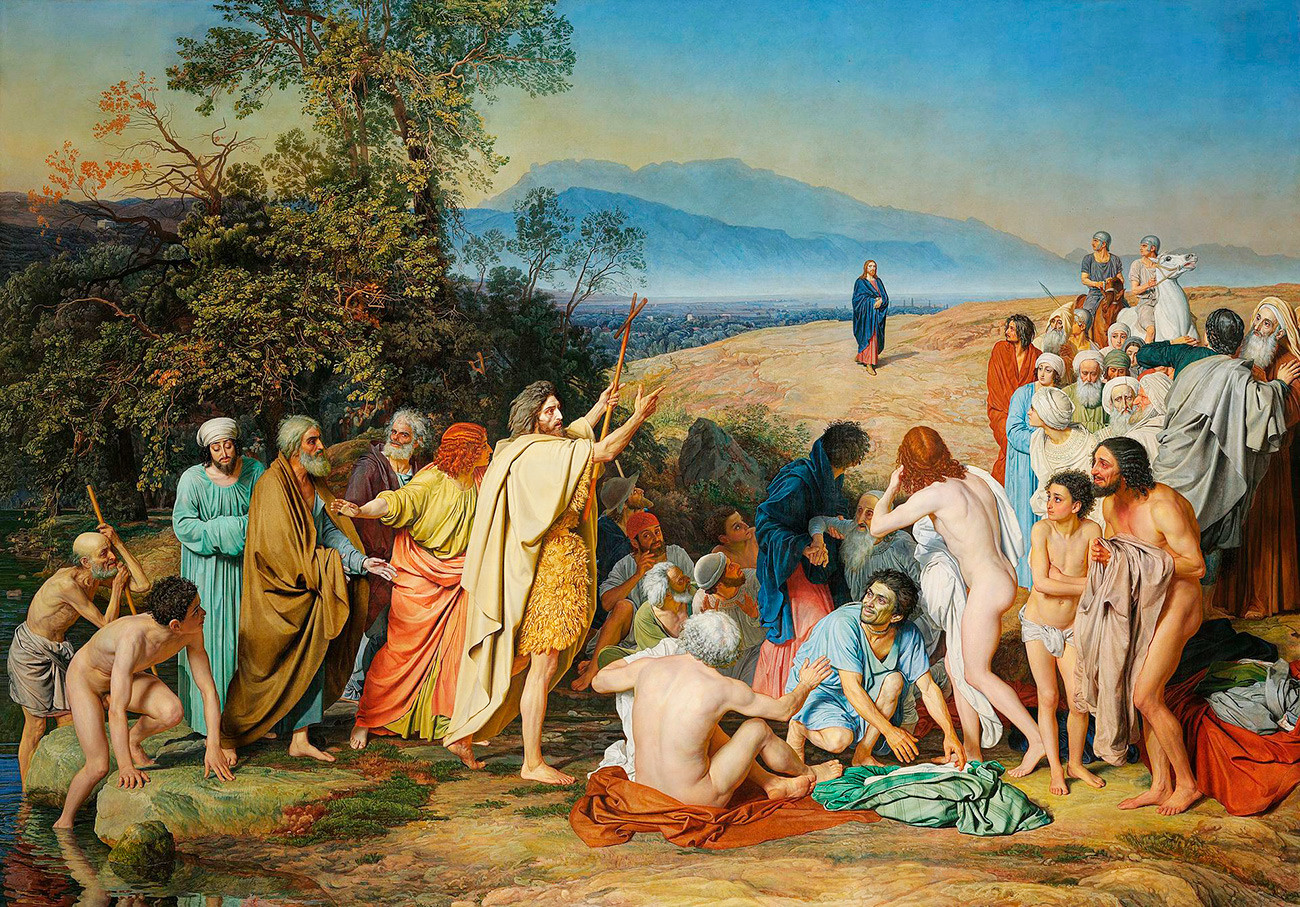
‘The Appearance of Christ before the People’, 1837-1857
Alexander Ivanov / Tretyakov GalleryIvanov returned from Italy only after he had completed his main opus about the appearance of the Messiah. It took him 20 years and 600 sketches. The huge canvas was bought and brought to St. Petersburg by Emperor Alexander II. To accommodate the painting, a dedicated building had to be constructed.

Born in Russia to the family of a Spanish political émigré, Infante became the most famous representative of Russian land art and kinetic art. The artist calls his abstract installations "artifacts" - he places mirrors and moving structures in natural landscapes, making nature an integral part of a work of art.
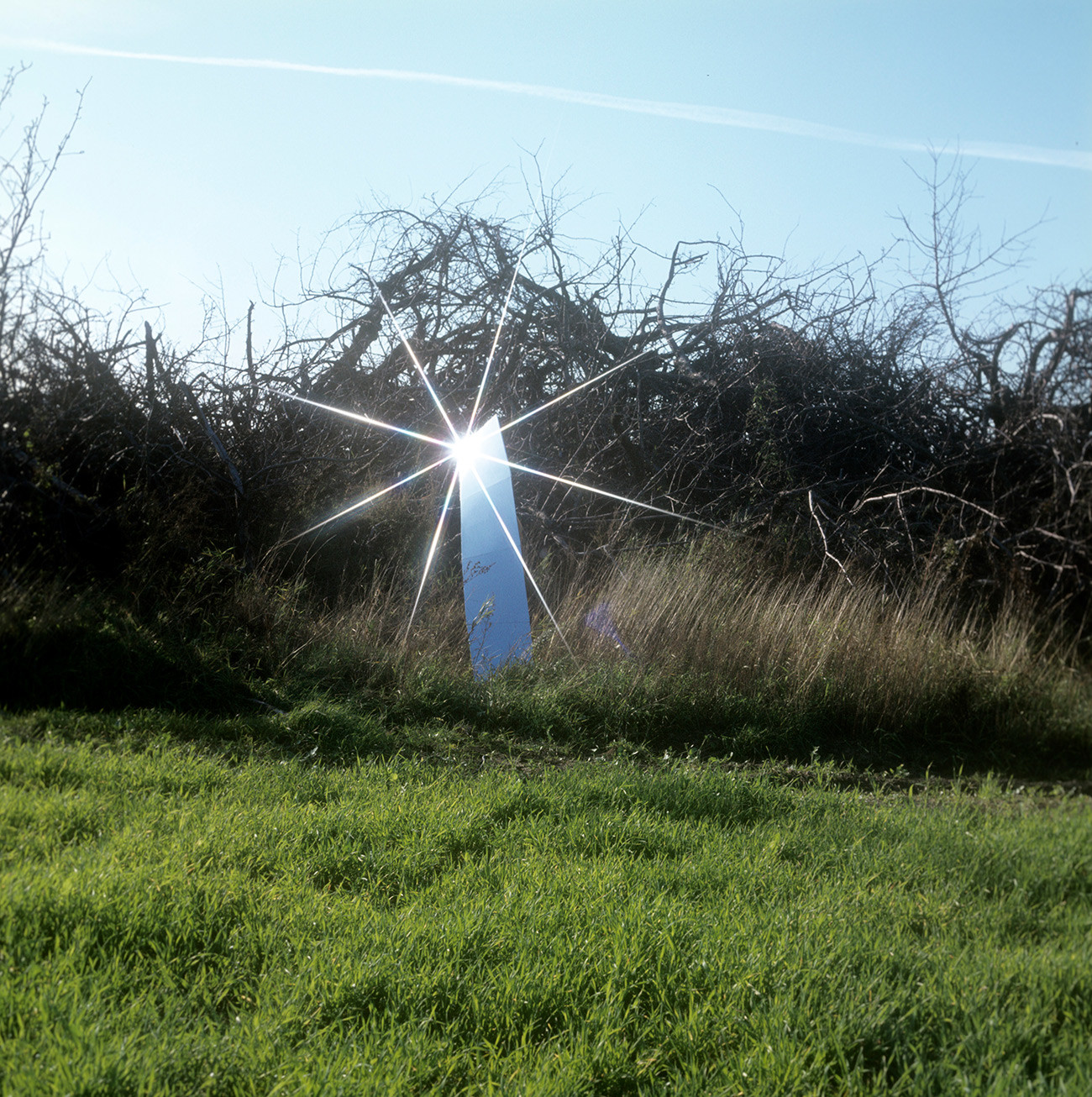
‘Seat of Deformed Space’ series, 1979
Francisco Infante/SputnikInfante is considered a successor to the traditions of the Russian avant-garde, especially Malevich and Tatlin. His works can be found in more than 30 museums and private collections around the world.

An expressionist artist who was born and grew up in Russia, but became famous in Germany. A fan of Van Gogh, Gauguin, Cezanne and Matisse, a close friend and ally of Wassily Kandinsky, Jawlensky was close to abstraction, but remained somewhere on the border between it and figurative art. The largest collection of his works can be found in Wiesbaden.
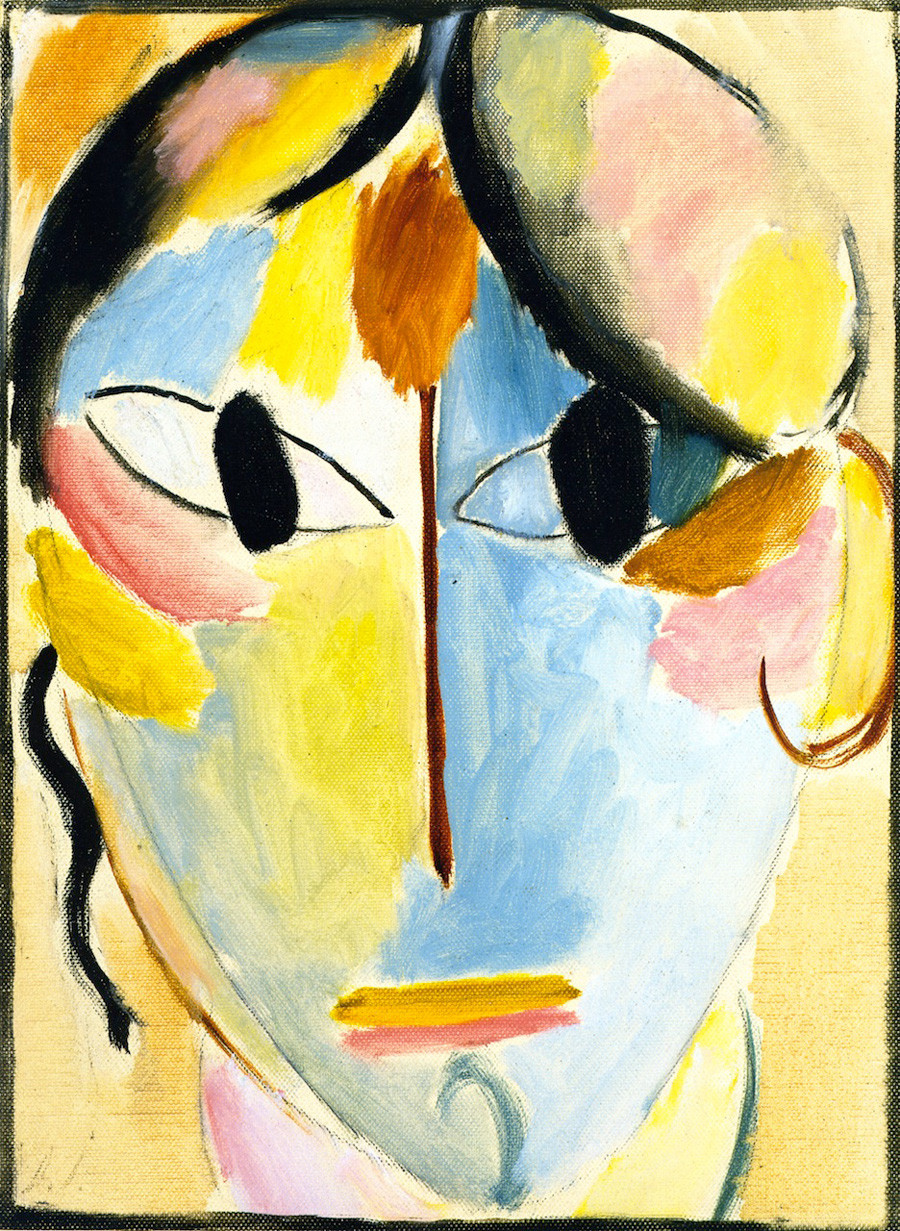
‘Heads’ series
Private collection
The inventor of abstractionism, Kandinsky was among the pioneers of the Russian avant-garde. Together with his fellow artists - Malevich, Chagall, Goncharova, Larionov and others - he ruthlessly broke away from the traditions of realistic painting.
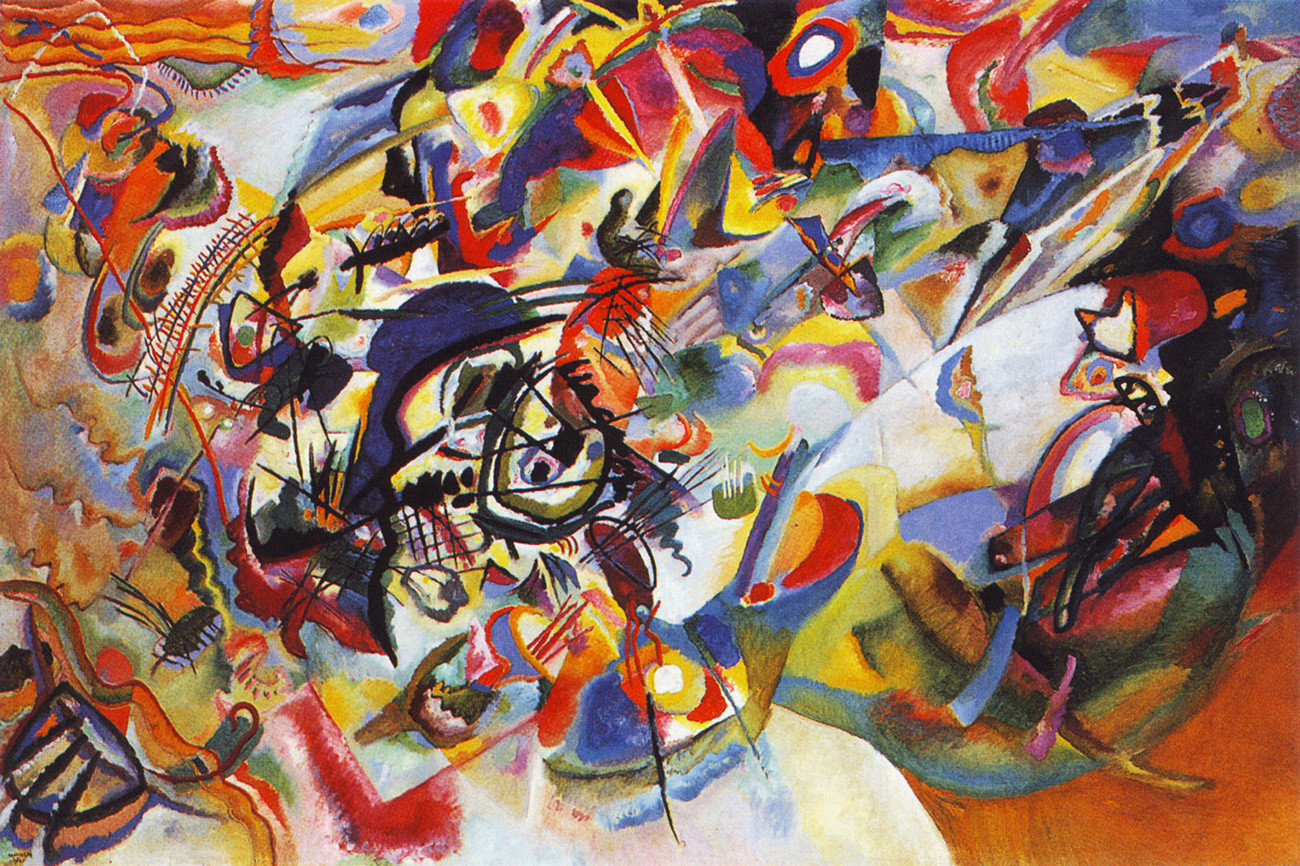
‘Composition VII’, 1913
Wassily Kandinsky / Tretyakov GalleryHis ‘Composition VII’ is considered the pinnacle of his work in the period before the First World War. Can you make out the Resurrection, Judgment Day, the Flood and the Garden of Eden in it? This is what Kandinsky depicted in it, according to his notes.

The Kabakovs are the main stars of unofficial Soviet art and the modern art scene. Thanks to Ilya and Emilia, Moscow Conceptualism has become the most famous contemporary Russian art movement in the world. The couple have lived on Long Island in New York since the late 1980s, and have their exhibitions at the Museum of Modern Art in New York, the Centre Pompidou in Paris, Tate Gallery in London and the Hermitage Museum in St. Petersburg.
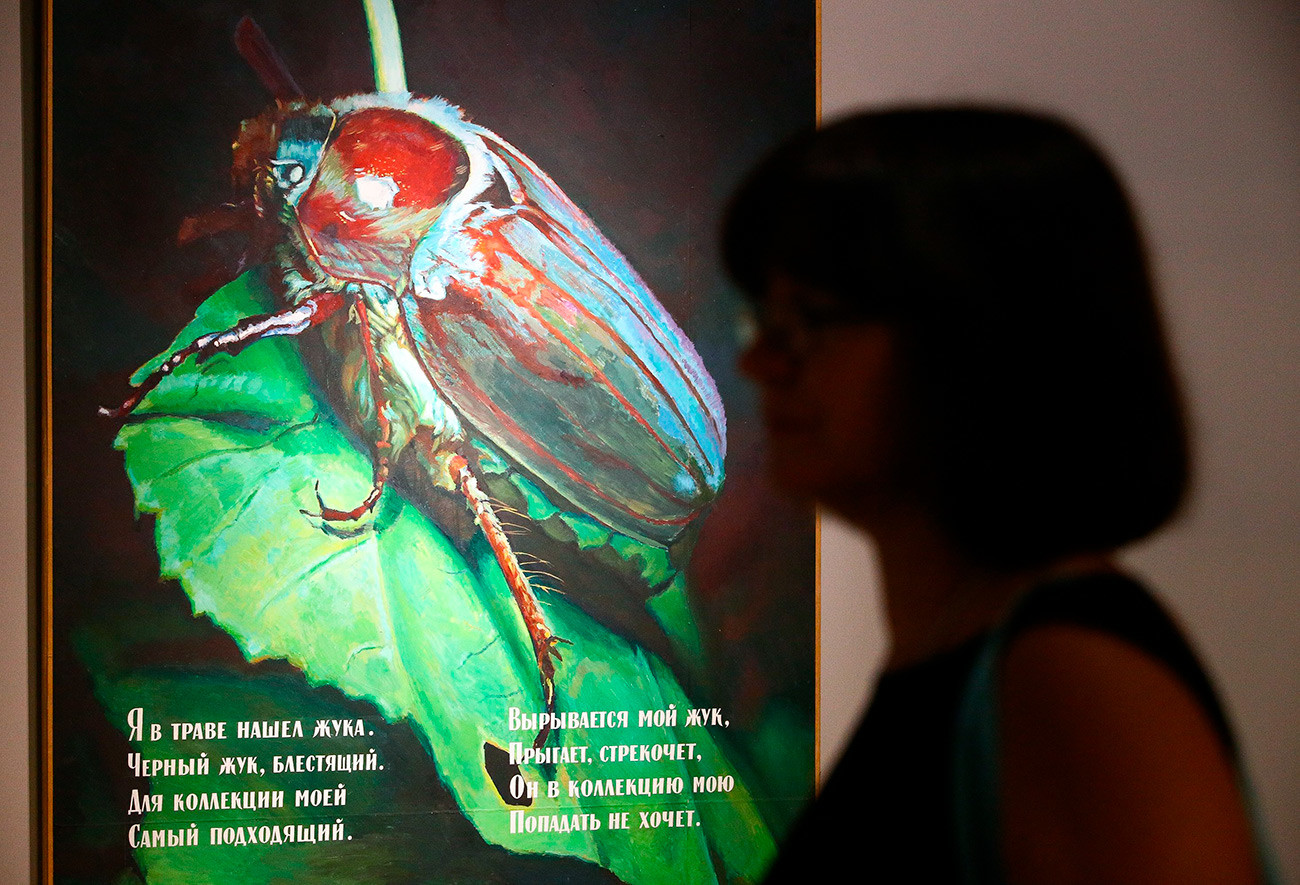
‘The Beetle’, 1982
Moskva AgencyIn 2008, ‘The Beetle’ broke a price record: it was sold for £2.6 million (almost $6 million), and Kabakovs’ work became the most expensive of the living Russian artists. They have since remained at the top of this list.

When Kiprensky finished the portrait of the great poet Alexander Pushkin, the latter dedicated a poem to him, which said, "Thus, from now on, my look will be known in Rome, Dresden, and Paris."
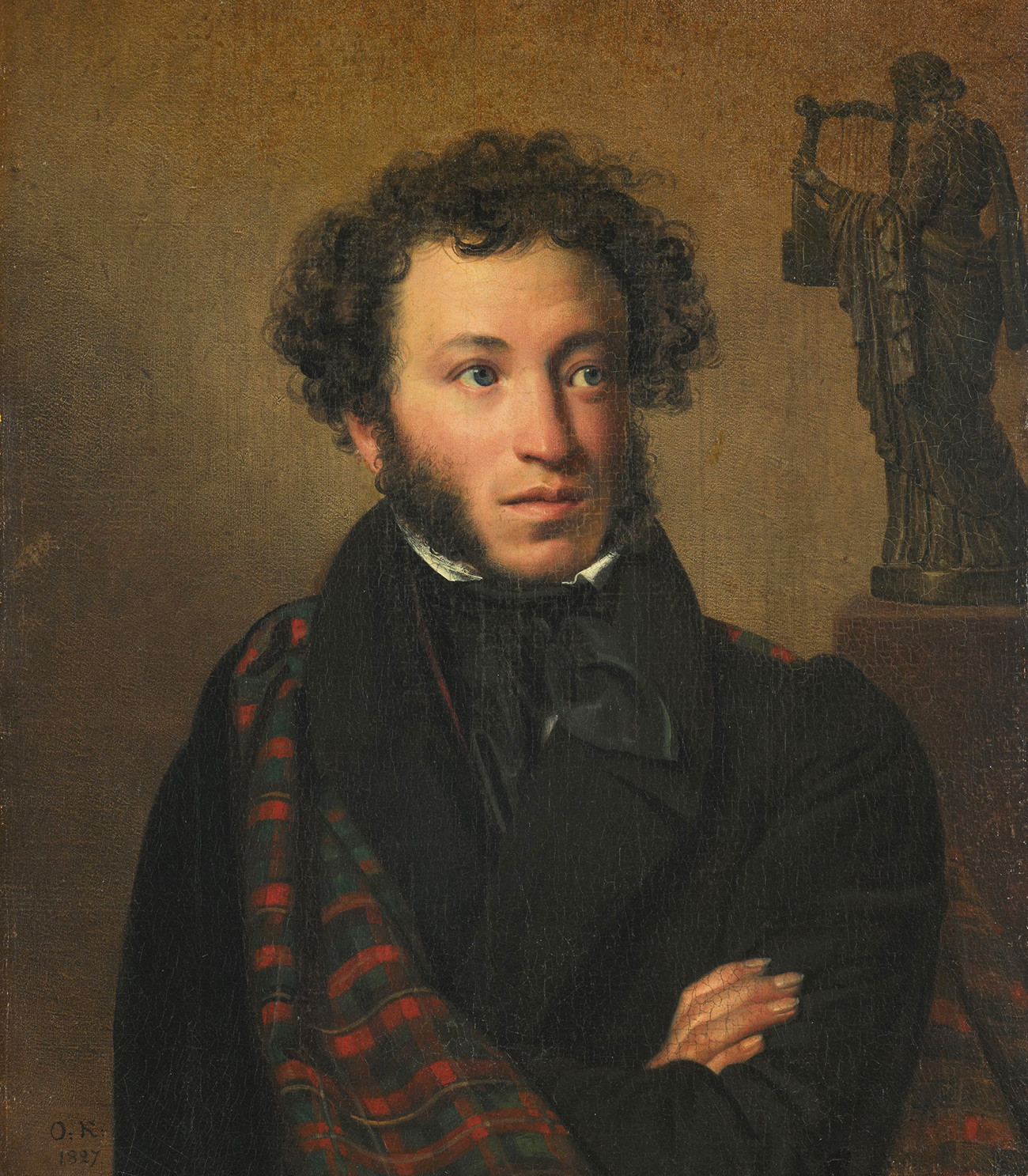
‘Portrait of Alexander Pushkin’, 1827
Orest Kiprensky / Tretyakov GalleryThe poet's prophesy turned out to be right. The portrait painter Kiprensky, who in the West was compared to, and sometimes even confused with, Rembrandt and Rubens, created what has become the most famous depiction of Pushkin in popular culture: this is what the great poet looks like to people in Russia and the rest of the world.

It has still not been established who this young woman, depicted by the ideologist of “Russian Peredvizniki” artists, is. Kramskoi chose to keep the secret and did not reveal her identity, even in the diaries and notes found after his death. These days, one of the most emblematic portraits in Russian art is dubbed "the Russian Mona Lisa".

‘Portrait of an Unknown Woman’, 1883
Ivan Kramskoi / Tretyakov Gallery
A prominent representative of "Russian impressionism", Korovin was inspired by the city of Paris and painted many of his best landscapes there. It is, therefore, not surprising that he was a huge success in France: there he was presented with the Légion d'Honneur and received gold and silver medals for his works.
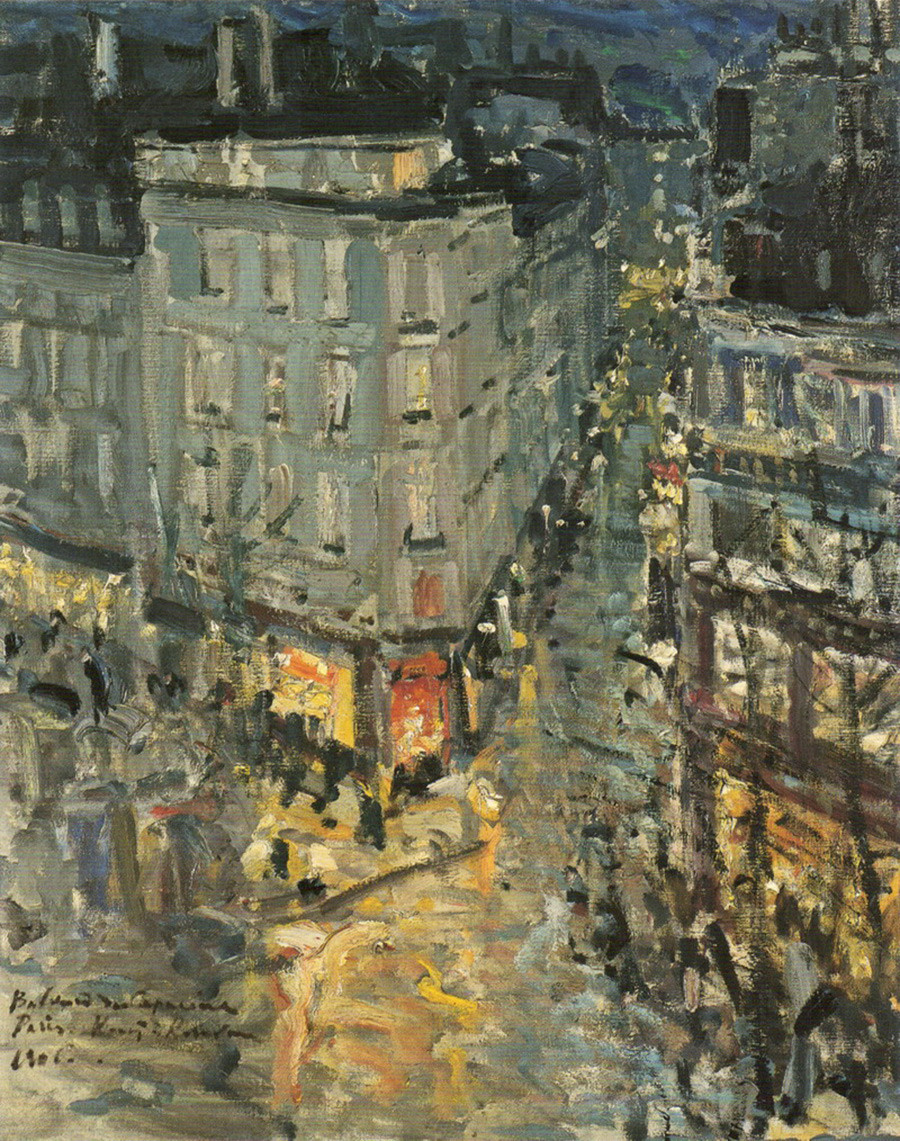
‘Paris. Boulevard des Capucines’, 1906
Konstantin Korovin / Tretyakov GalleryAfter the Russian Revolution, the artist decided to flee from the country of the Soviets: he found the new government's policies oppressive. In 1922, he received permission to leave - for medical treatment and holding of a personal exhibition - but never returned. Not surprisingly, he settled down in Paris.

Coca-Cola vowed to destroy Kosolapov. He caught the attention of the FBI, his exhibitions in Russia were canceled, and some of his works even went on trial. His method consists of combining things that cannot be combined, like, for example, Lenin's profile with the famous company's logo.
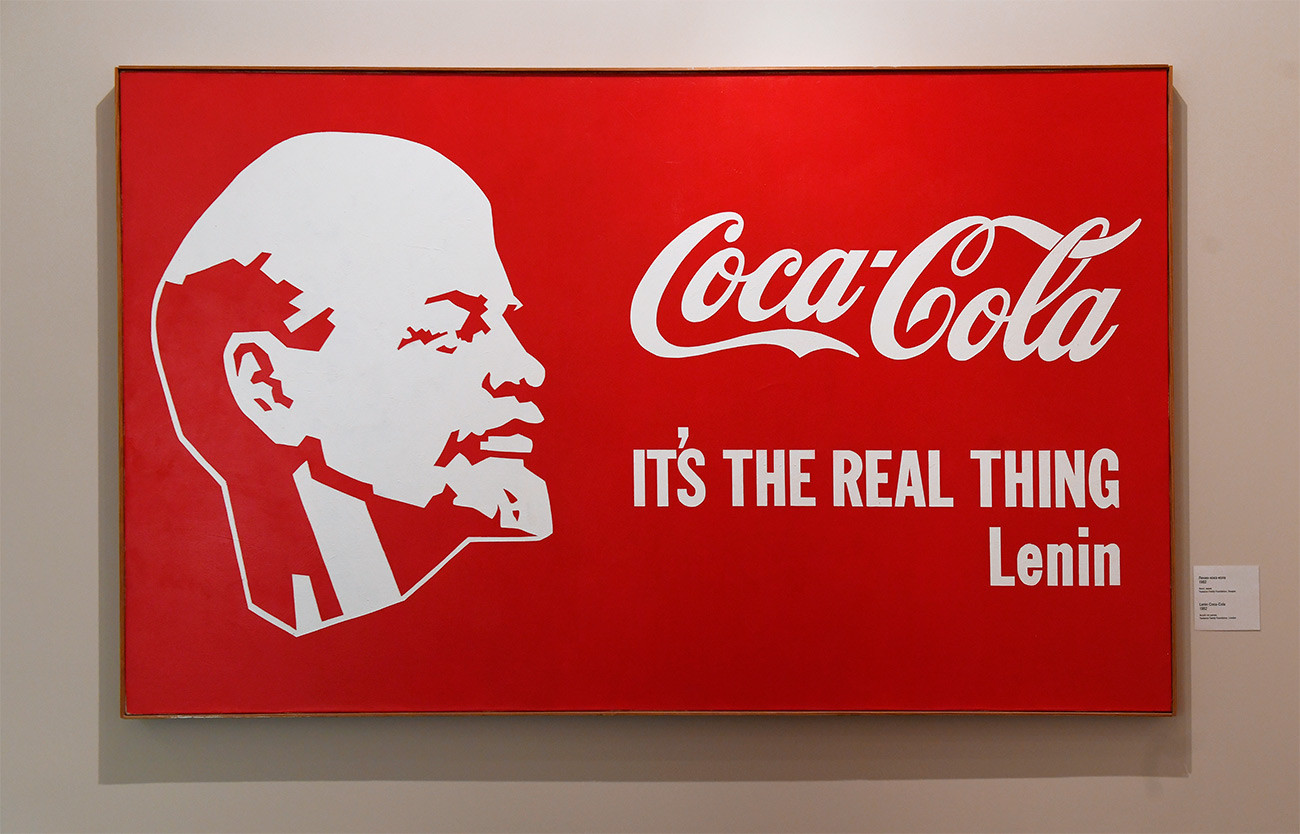
‘Lenin and Coca-Cola’, 1982
Ekaterina Chesnokova/SputnikIndeed, Kosolapov's art is provocative and often scandalous, but this does not prevent him from remaining a respected master of Sots Art (the Soviet version of pop art), whose works can be found in the collections of the best museums in the world.

For Korina, a participant in the main project at the 2017 Venice Biennale, even the most seemingly insignificant details of everyday life, from the Moscow street illumination to funeral wreaths to scaffold netting, are a matter for reflection. She is described as a master of total installation. Korina's latest solo exhibitions were held at the GRAD foundation in London, the Brooklyn Academy of Music in New York and at the Steirischer Herbst festival in Graz, Austria.
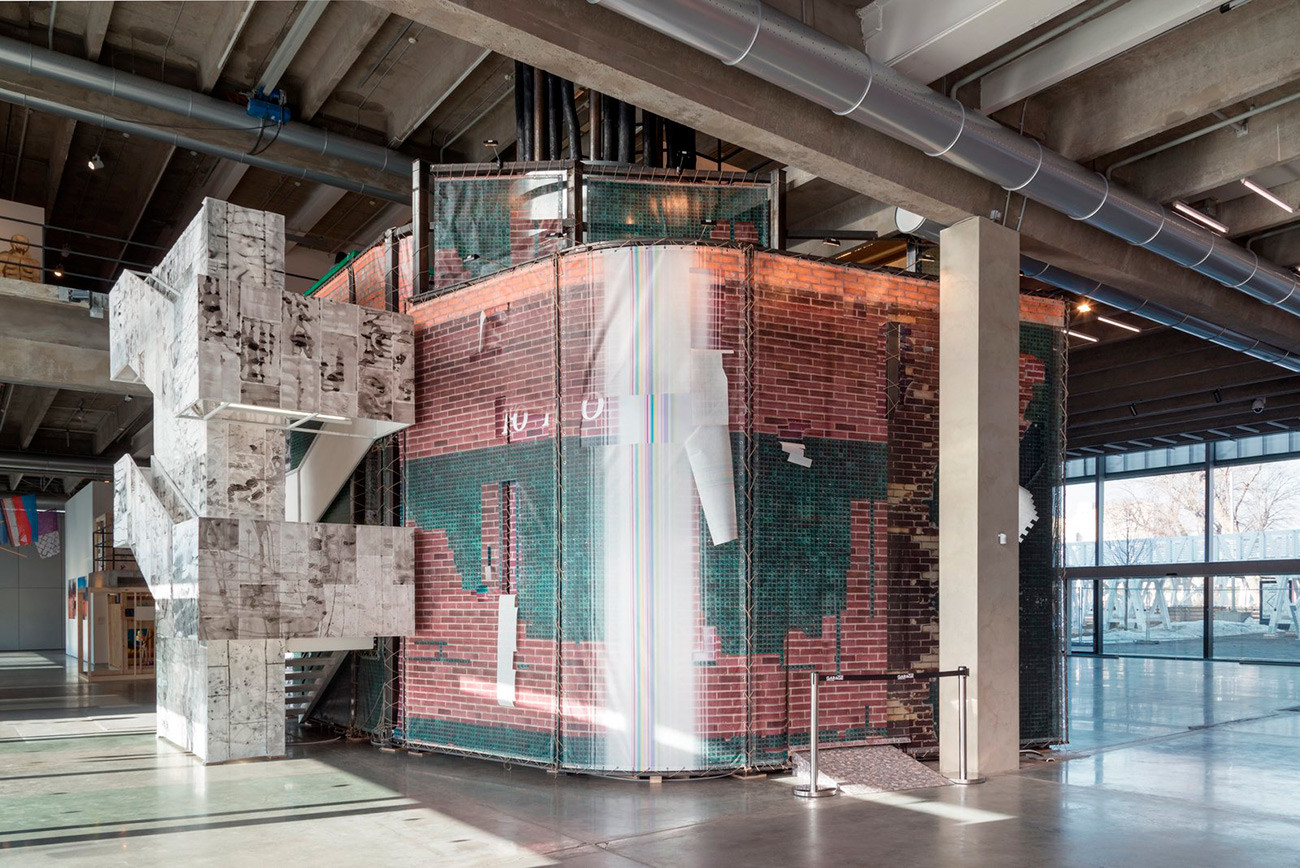
‘The Tail Wags the Comet’ installation, 2017
Irina Korina / photo by Aleksey Naroditsky / Garage Museum of Contemporary Art‘The Tail Wags the Comet’, a huge three-story tower, appeared at the Moscow Garage museum and has become a collection of quotes from her career.

He is known as "the main Russian Cézannist", the main "Russian impressionist" and one of the most “expensive” Russian artists at international auctions. Despite having borrowed a lot from French artists, Konchalovsky, nevertheless, managed to find his own style, which Western critics often described as "Slavic".
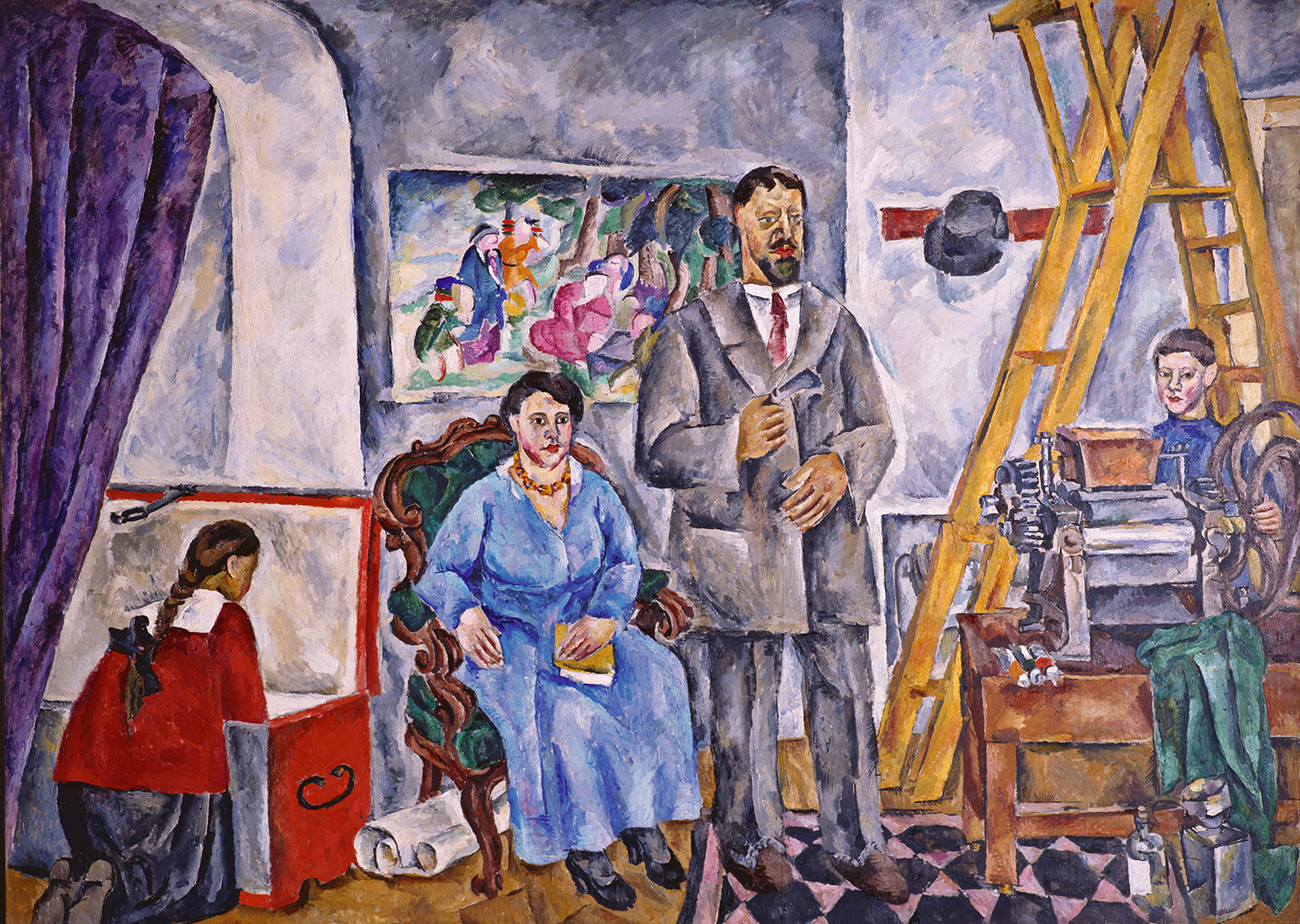
‘Family Portrait (against the Background of a Chinese Panel)’, 1911
P.KonchalovskyAt home, Konchalovsky's contemporaries rejected his art so much that they even refused to exhibit their works next to his. Yet, when in 1924 the USSR for the first time took part in the Venice Biennale, those were Konchalovsky's paintings – 13 of them – that were displayed at the Soviet pavilion.

The main "trolls" of official Soviet art have created their own unique genre of Sots Art, the Soviet equivalent of pop art. They made cutlets from the Soviet mouthpiece, the Pravda newspaper, depicted themselves as Lenin and Stalin, signed main Soviet slogans with their names and placed Lenin against the McDonalds logo.
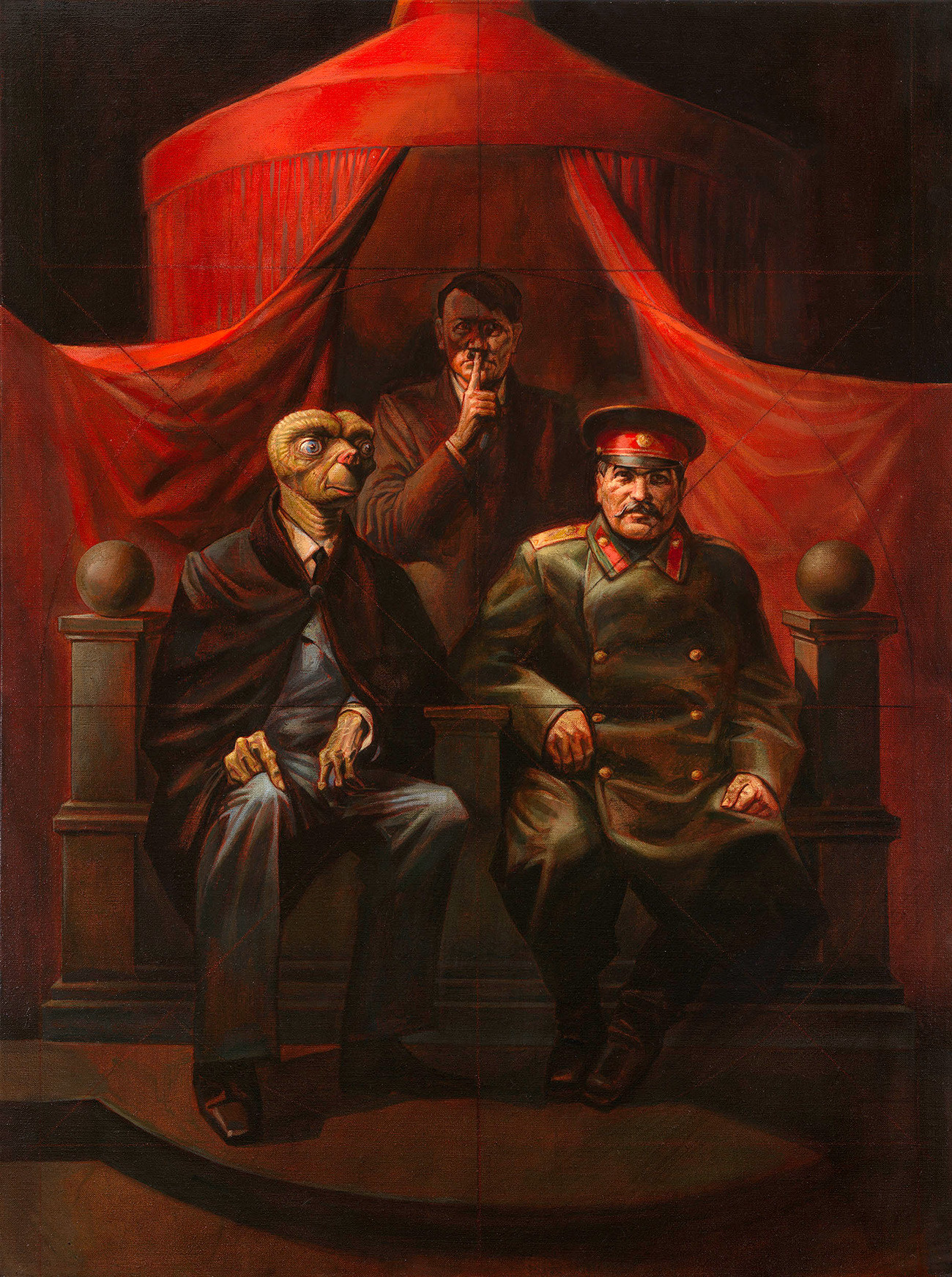
‘Yalta Conference’, 1982
Komar & MelamidEven having left the USSR, the artists did not stop their caustic trolling. The list of their targets included Andy Warhol (whom they call "an idiot") and Gerhard Richter ("this is how an animal would paint if given a brush").

Koshlyakov's paintings have a number of striking distinctive features: they are almost always painted on textured corrugated cardboard and almost always his urban landscapes are "streaming" down the canvas surface. Images of the past, ruins, Greek mythology, memory – these are his timeless topical characters.
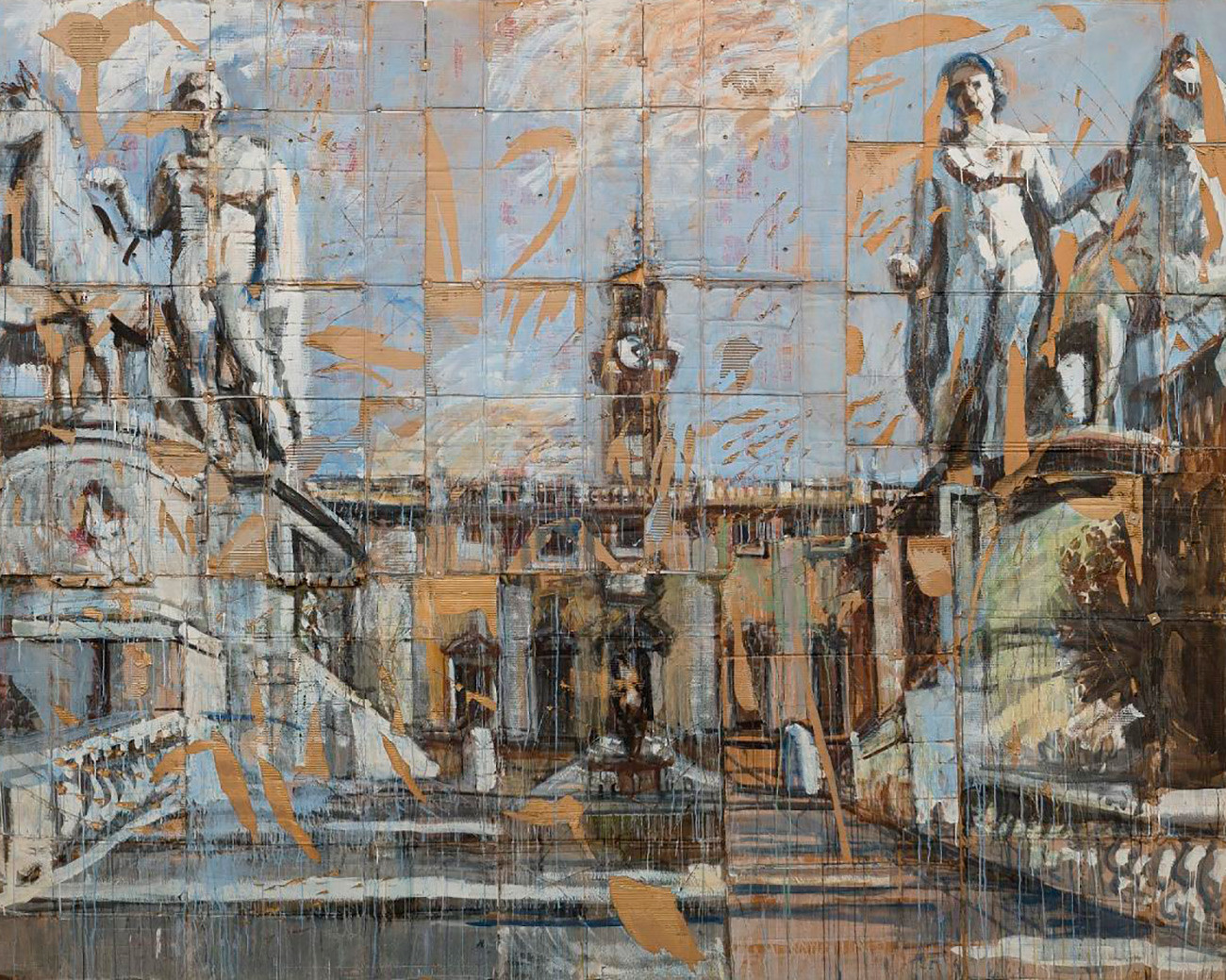
‘Roman Prisoner’ series, 1991-1994
V.KoshlyakovKoshlyakov currently lives in Paris and is in great demand: he has exhibited at the Louvre, the Guggenheim Museum, the Biennale in San Paolo and Venice. Yet, even these days, he likes to recall with a sense of irony that his first exhibition was held in a provincial public toilet.

Korzhev, jokingly, called himself an "old socialist realist". Art critics have labeled him "a representative of the austere style". Yet, Korzhev's art has gone beyond those boundaries: despite holding quite senior posts in the Soviet Artists' Union, he managed to escape from political commissions into a sensual, sometimes surrealistic sphere. He is above all an artist of strong human emotion, for which the war, the revolution, and the Soviet "construction projects of the century" were just a background.
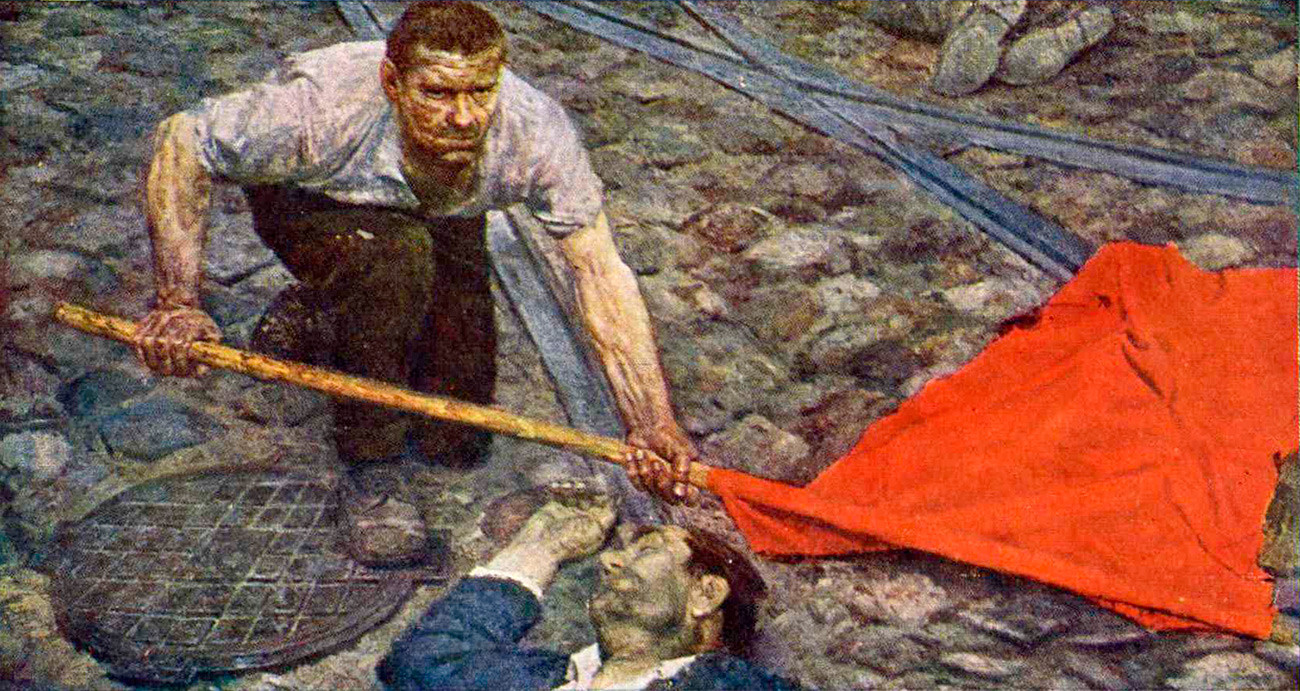
‘Raising the Banner’, 1960
Gely Korzhev / Russian MuseumHe was often accused of employing various ploys, like using hidden devices to light his paintings. Conversely, his well-wishers called him "the Russian Monet" for his masterly work with colors. His ‘Moonlit Night…’ with the moonlight reflected in the Dnieper River became a sensation. All the more so, since it was the first time in the history of Russian art that an exhibition consisted of a single work.
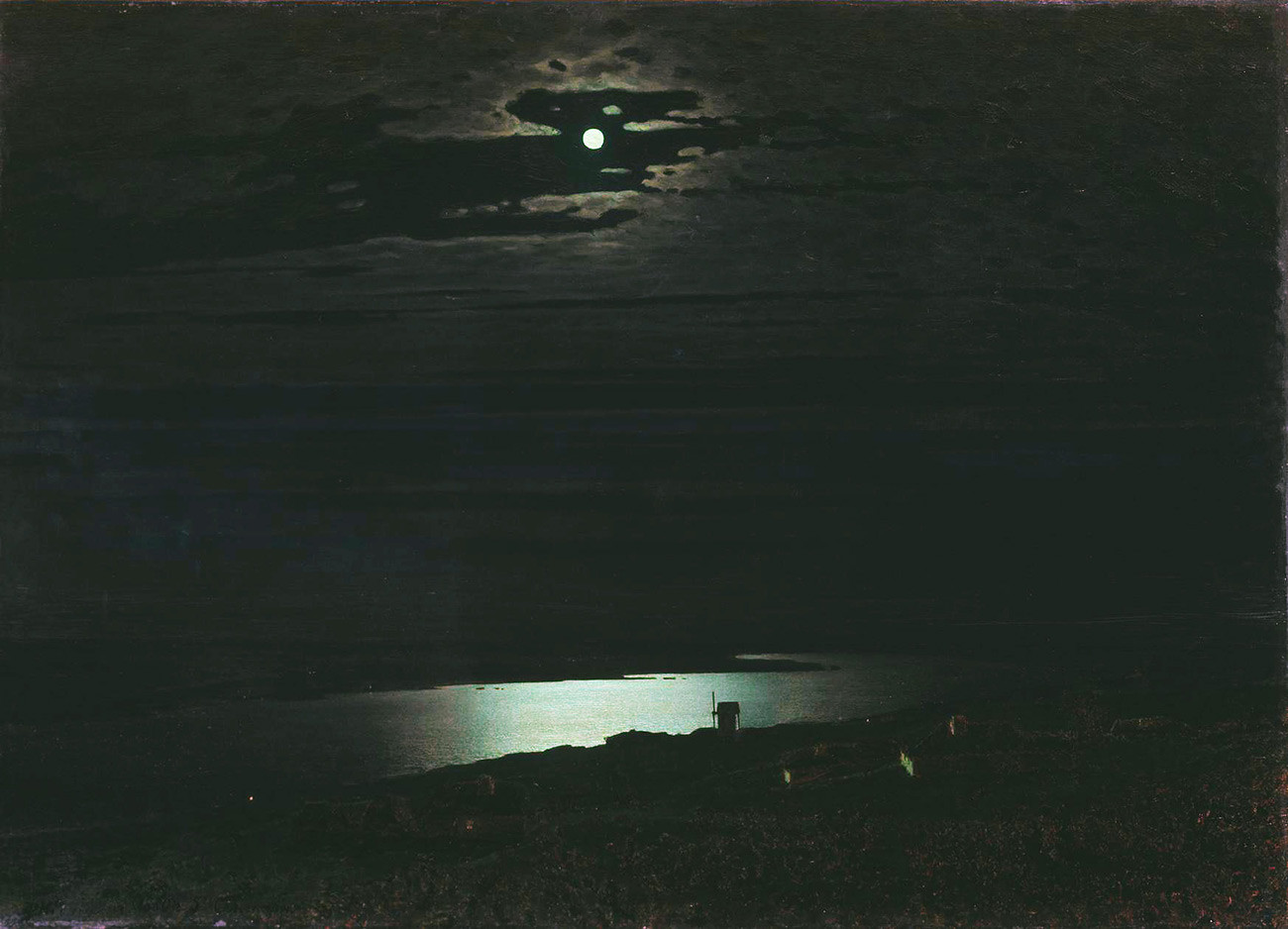
‘Moonlit Night on the Dnieper’, 1880
Arkhip Kuindzhi / The State Russian MuseumIts success was such that Kuindzhi went into a voluntary exile for 30 years: the critics did not accept works that followed ‘Moonlit Night…’, and the artist spent a long time struggling with it.
The national flavor, from samovars and fairs to plump tradeswomen in colorful dresses, is what attracted Kustodiev and distinguished him from other artists of his time. He is the only Russian artist to have ever won a gold medal at the Venice Biennale.
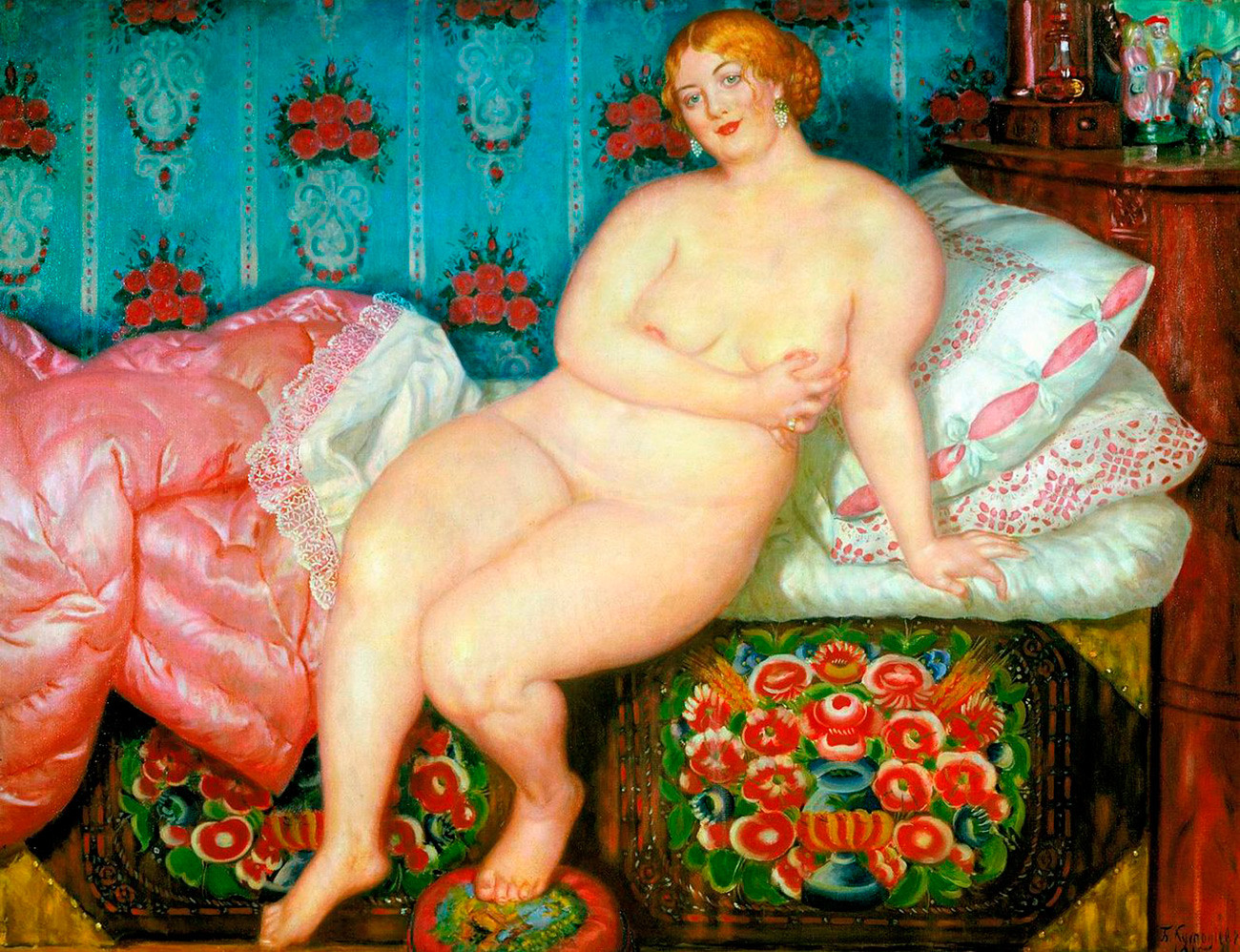
‘The Beauty’, 1915
Boris Kustodiev / Tretyakov Gallery‘The Beauty’, a depiction of a Russian merchant's wife, became his manifesto and the result of a search for a unique style. "Slim women do not inspire one to creativity," he used to say. The artist created this and other famous works while being already paralyzed - he had had several operations on his spinal cord.

‘Mad Dog’ was Oleg Kulik's first performance: naked, he crawled on all fours and attacked passers-by. Its main character became one of the symbols of the crazy 1990s, and Kulik - one of the founders of Moscow action art.
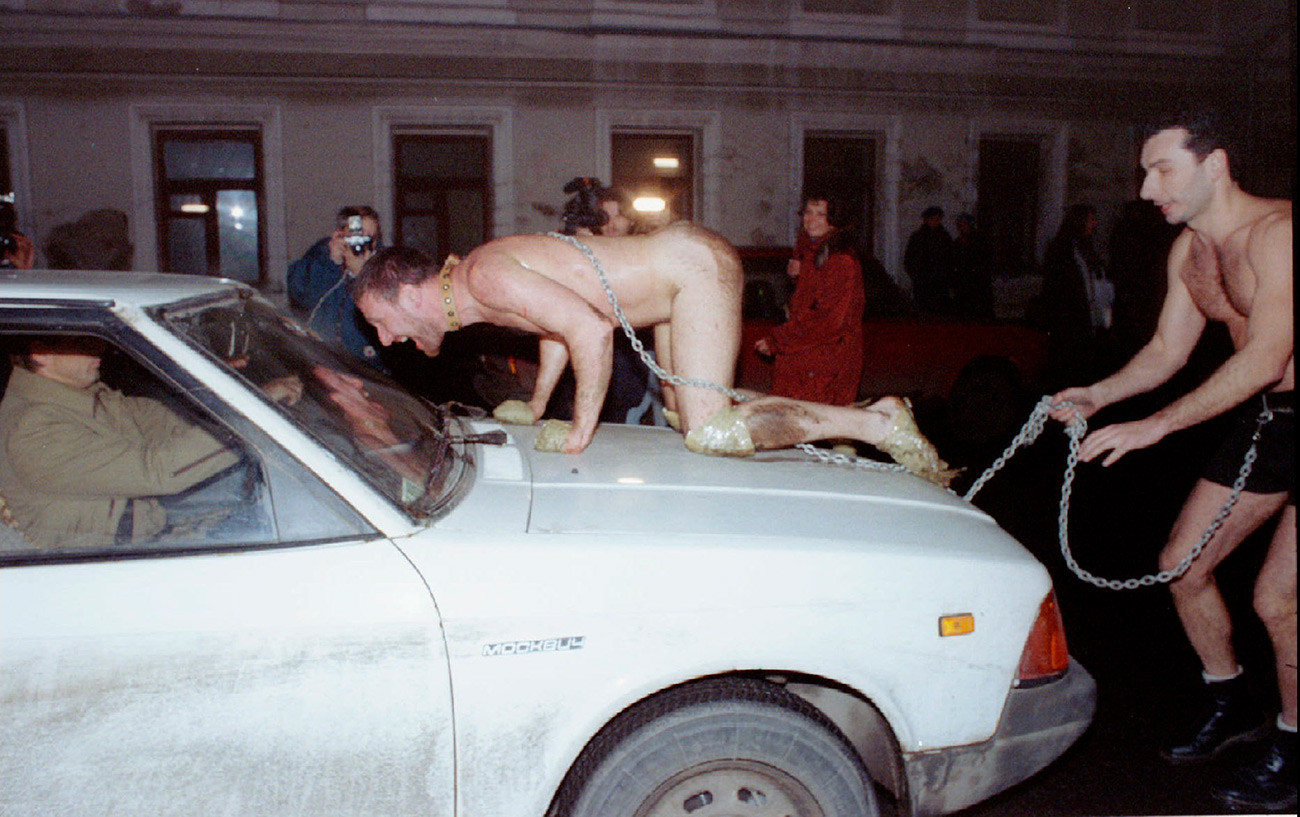
‘Mad Dog’ performance, 1994
ReutersLater, the artist tried himself in a variety of styles and techniques, from sculpture to painting, and continues to experiment till present day. His works can be found at the Centre Pompidou in Paris and Tate Modern in London.

A person perceives not an object but a cluster of rays coming from a source of light and reflected from this object - this is how Larionov explained Rayonism, an avant-garde abstract art movement he had invented.
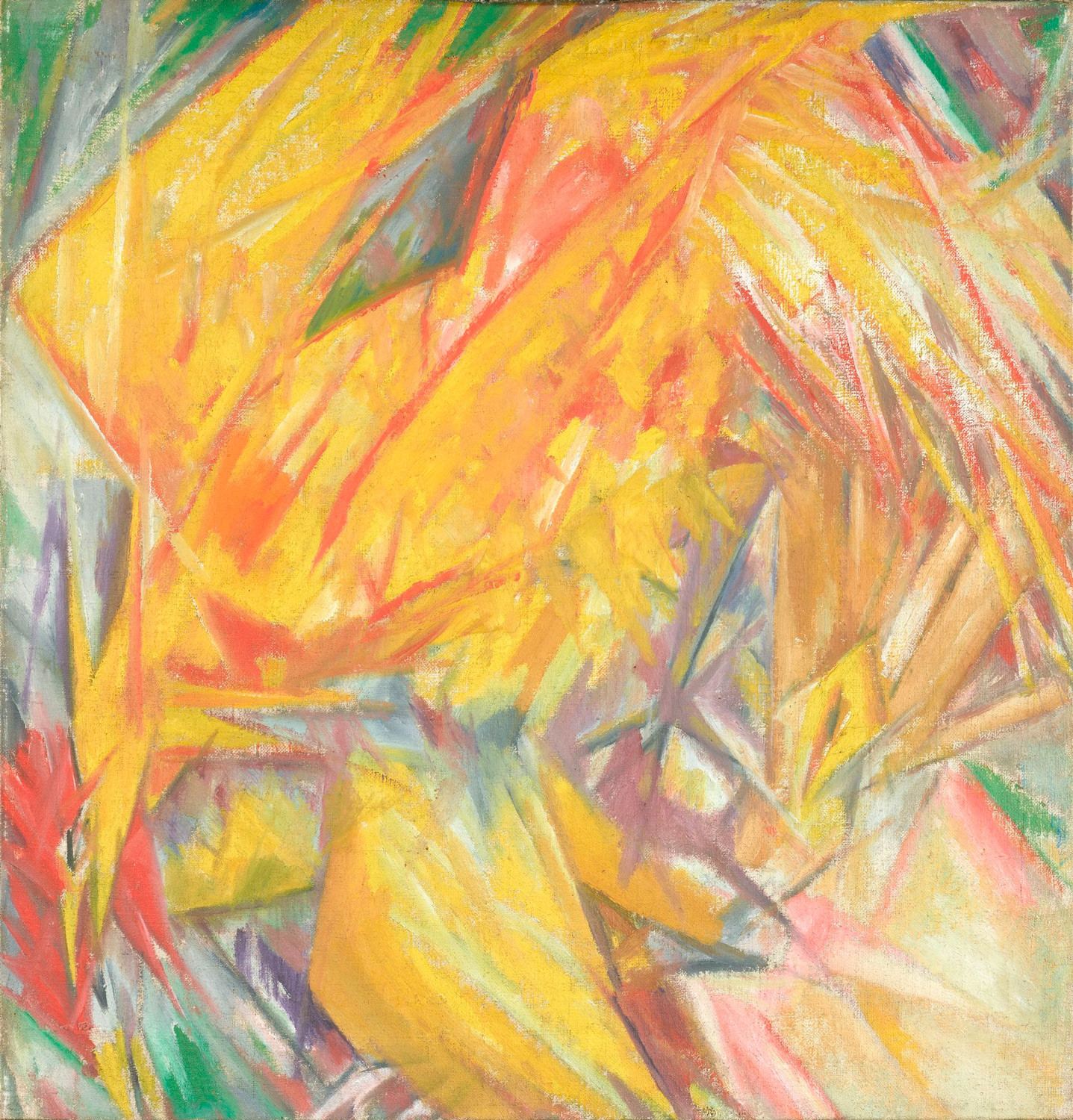
‘Rooster. A Rayonist Sketch’, 1912
Tretyakov GalleryAt the same time, Larionov himself constantly balanced between representational and abstract art, and left quite a diverse legacy. He was married to "the Amazon of the avant-garde", Natalia Goncharova, but, unlike his wife, while in emigration in France for the last 30 years of his life, he did not create anything significant.

Lentulov boldly juggled different styles: his works were influenced now by symbolists and impressionists, now by cubists and abstractionists. But he was one of the first to build his art around color, rather than an object.
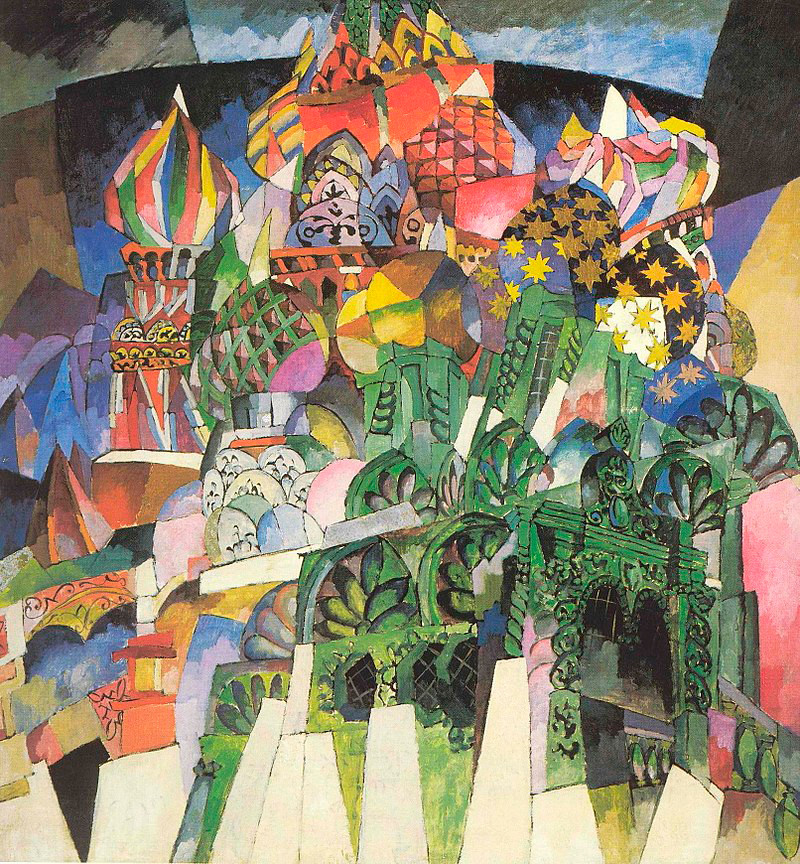
‘Saint Basil's Cathedral’, 1913
Tretyakov GalleryThe riotous colors of his various works earned him the nickname of "an artist of the sun". To give just one telling example from Lentulov's life: on the anniversary of the October Revolution, he painted the trees and the lawn on Teatralnaya Square (next to the Kremlin) in a violent purple color.

This is what a propaganda poster looks like if it is created by a fierce supporter of suprematism. The red triangle symbolizes the Red Bolshevik Army, which crushes the defenses of the imperialist White Army with a wedge.
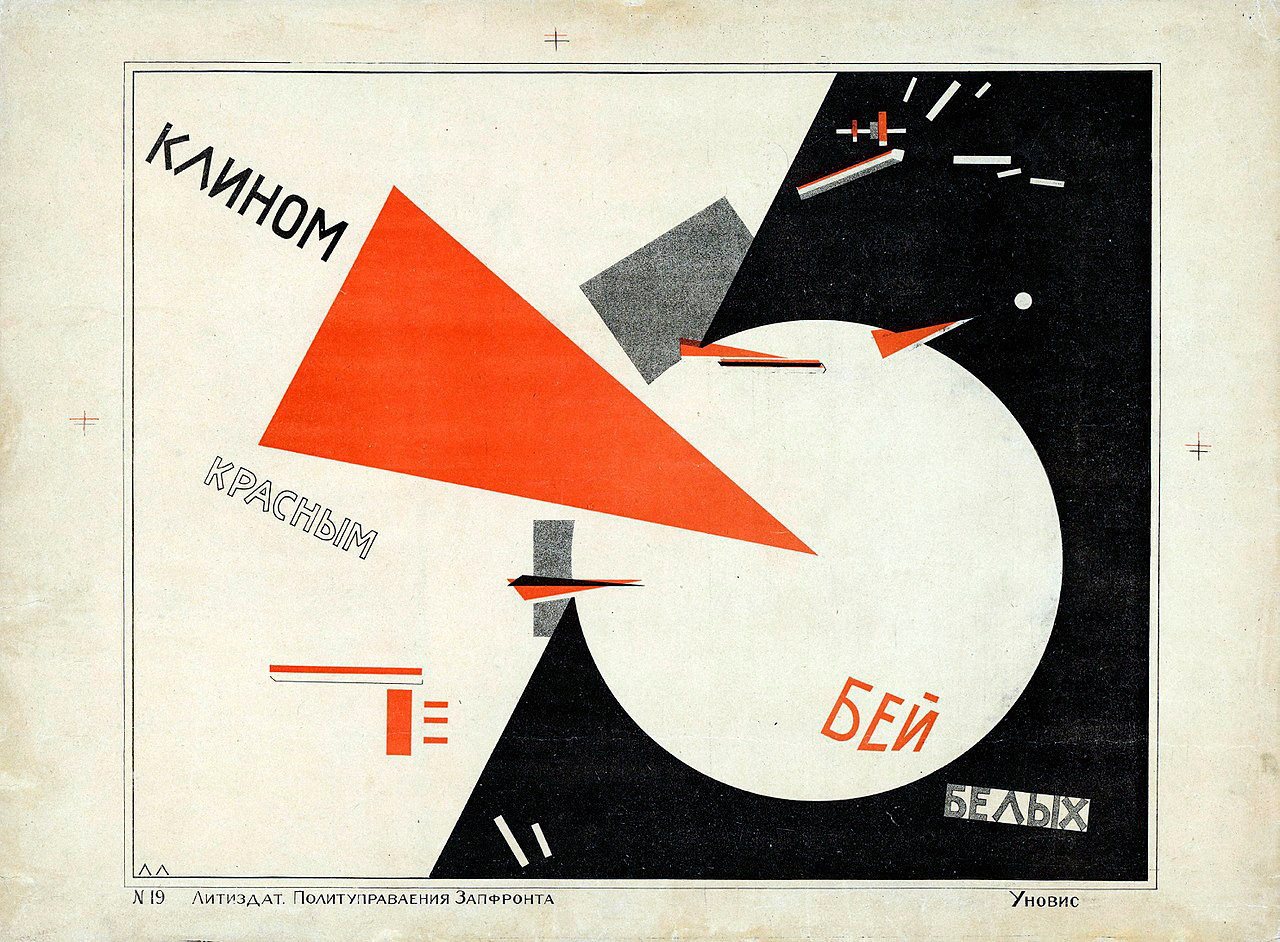
‘Beat the Whites with the Red Wedge!’, 1919-1920
Public domainEl Lissitzky was an associate of Malevich and contributed to the development of the ideas of avant-garde art. For instance, it was thanks to him that suprematism made its way into architecture.

Levitan was in love with the Russian countryside and became a master of the "mood landscape". In the end, that was what secured him membership of the Academy of Arts. The Jewish artist had to come a long way to achieve this accolade: some of Levitan's teachers believed that a Jew should not touch the Russian landscape, as only ethnic Russian artists could depict Russian nature. Furthermore, Levitan was expelled from the capital, by a royal decree, because he was a Jew.
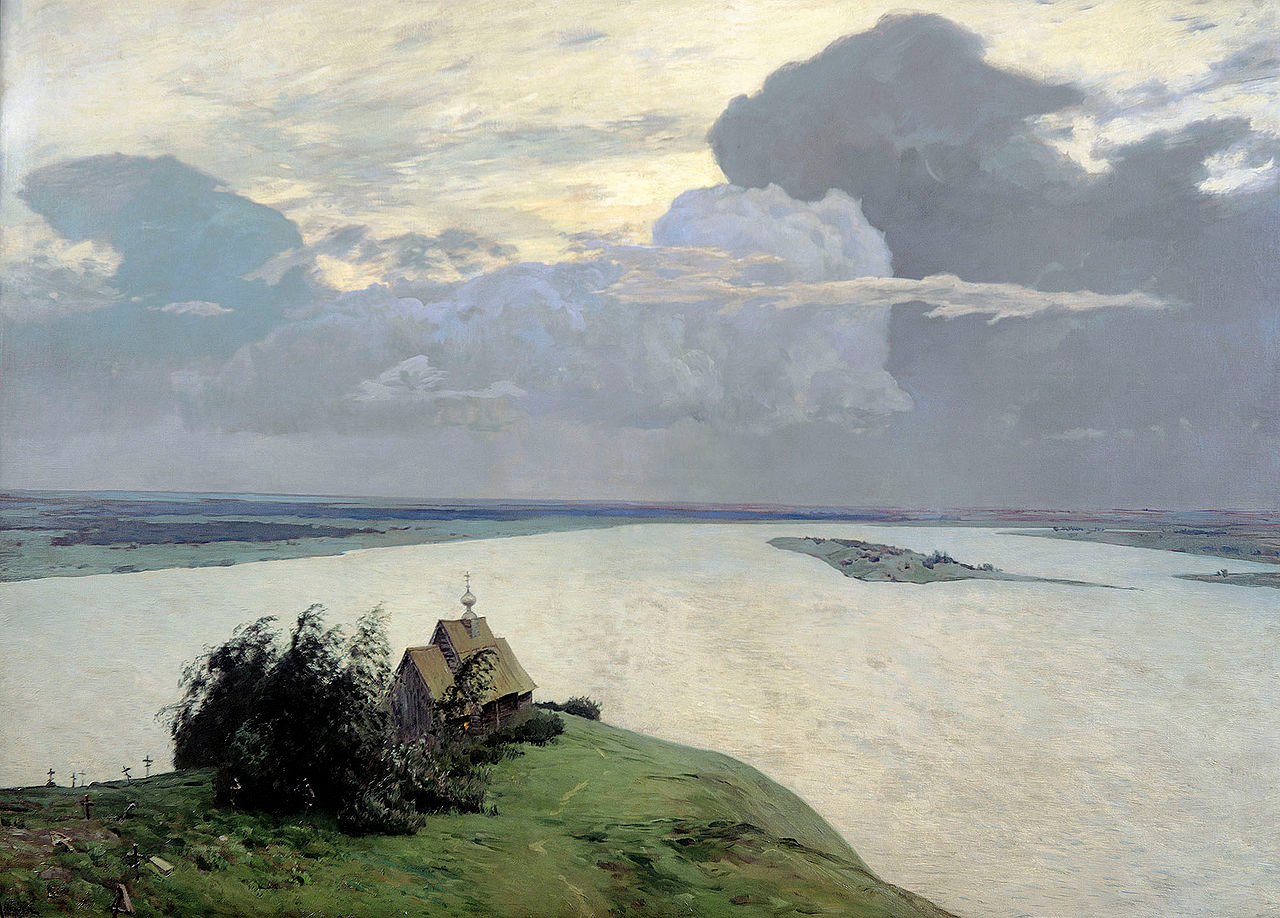
‘Above the Eternal Peace’, 1894
Tretyakov GalleryYet, time has set everything straight: there is a widely held opinion that ‘Above the Eternal Peace’ is "the most Russian" of all paintings on the Russian theme.

Here is another 18th century master of the official portrait. His talent is manifest by the illustrious circle of his sitters, from Empress Catherine the Great and French philosopher Denis Diderot to Prokofiy Demidov, a mining magnate.
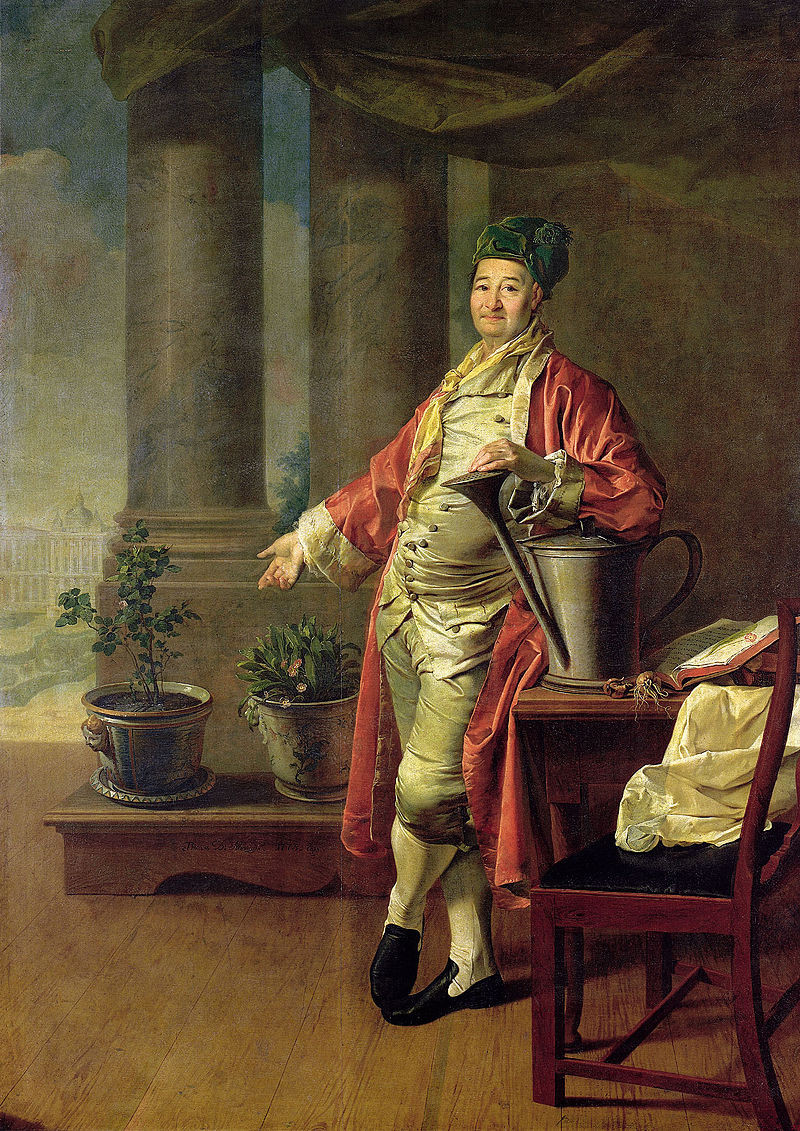
‘Portrait of Prokofiy Demidov’, 1773
Tretyakov GalleryDemidov had the reputation of an educated tycoon and an eccentric. For example, once he bought all the hemp fiber in St. Petersburg usually reserved for the British to teach them a lesson, who during his stay in England had forced him to pay an exorbitant price for a commodity he needed. And for his official portrait, Demidov chose to dress not in his uniform with all his awards, but in a dressing gown and a night-cap...

Malevich is the main symbol of Russian avant-garde, while his ‘Black Square’ is a pictorial manifesto of Suprematism. Malevich believed that after Suprematism there was no art, so he suggested burning all paintings and displaying their ashes in museums. Tragically, this is what partially happened in the first months after the 1917 Bolshevik Revolution.
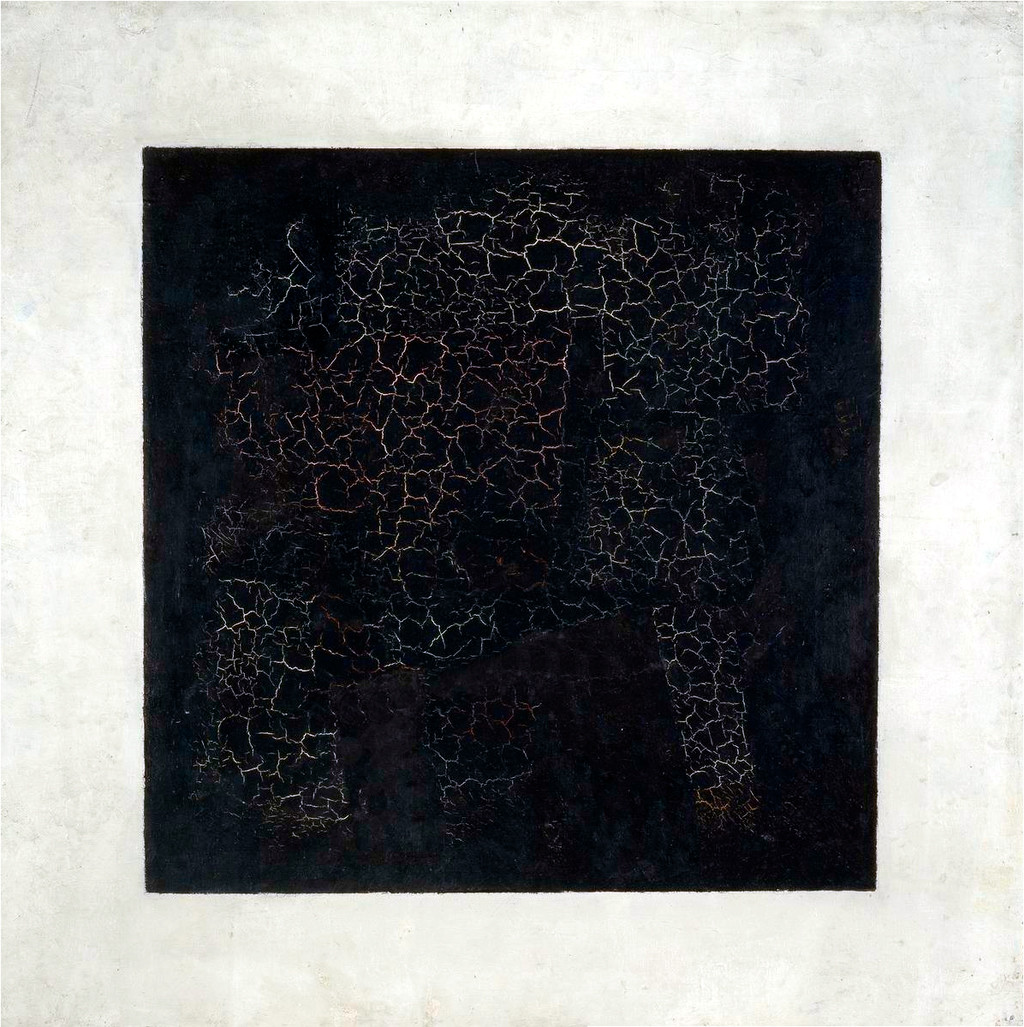
‘Black Square’, 1915
Tretyakov Gallery
"Hollow!" This is how the Petersburg Academy of Arts responded to expressionist Malyavin's graduation work ‘Laughter’. The graduate did not despair, and two years later took his laughing peasant women with him to Paris. There, the canvas caused a sensation at the World Fair: the artist was presented with a gold medal, and the painting was bought by the Italian government for a modern art gallery in Venice.
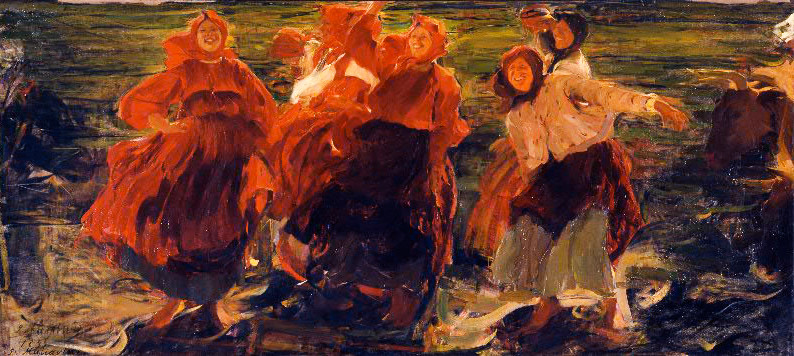
Needless to say, Malyavin returned to Russia a celebrity. All the criticism of ‘Laughter’ was promptly forgotten and in 1906 he became a member of the Academy.

A master of reinvention, he turned his life into a lifelong performance. Practically the only representative of travesty art in Russia, Mamyshev-Monroe explored the personalities of famous figures in world history and pop culture, trying on their images for himself.
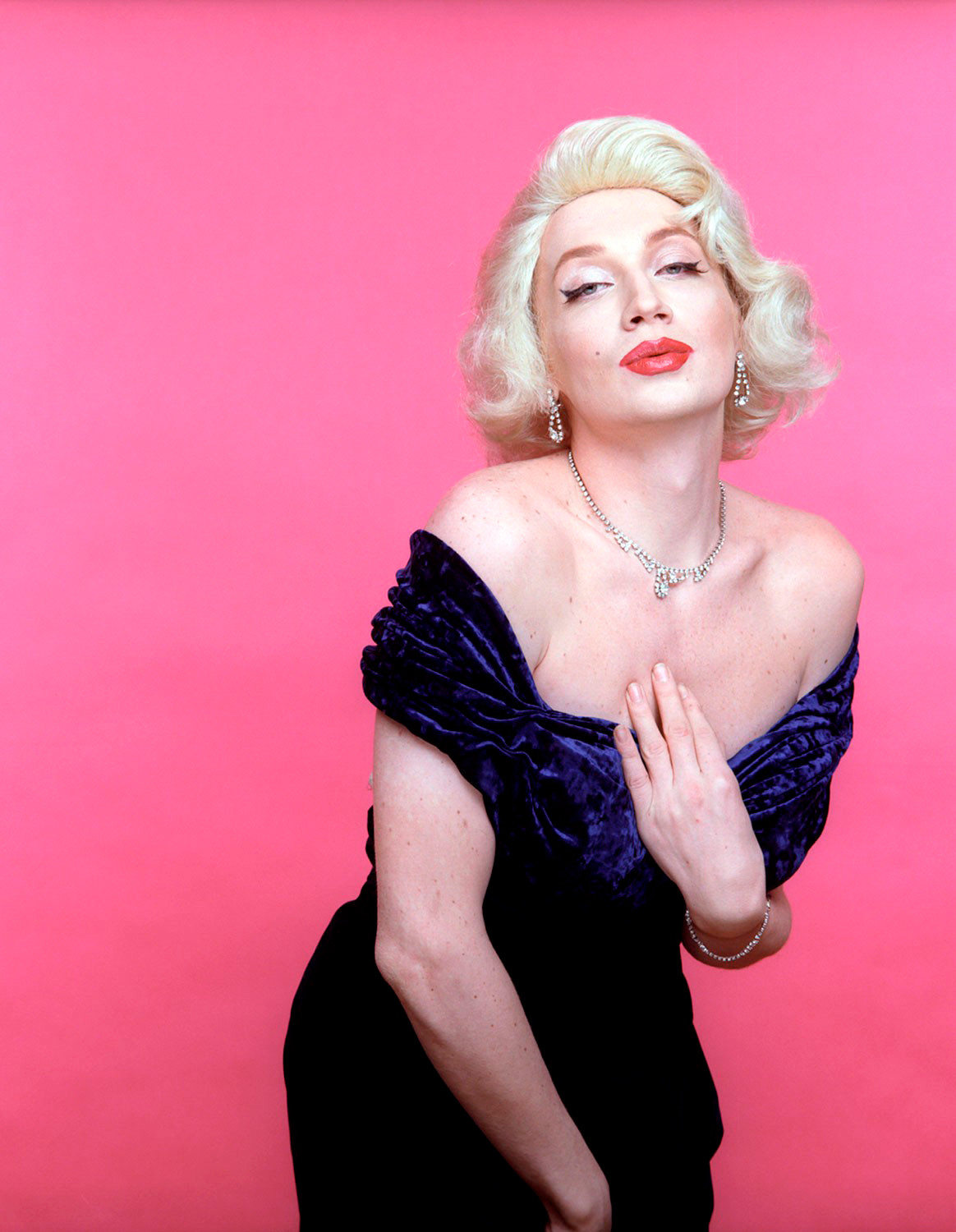
‘The Life of Illustrious People’ series, 1996
МАММDuring his short life (he died at the age of 44), the artists tried on a multitude of famous personalities, from Marilyn Monroe and Hitler to Jesus Christ and Lenin to Andy Warhol and Vladimir Putin.

In the late 19th century, Makovsky was considered a fashionable and expensive portrait painter and author of historical paintings. He also had a big gold medal of the Paris World's Fair to his name.
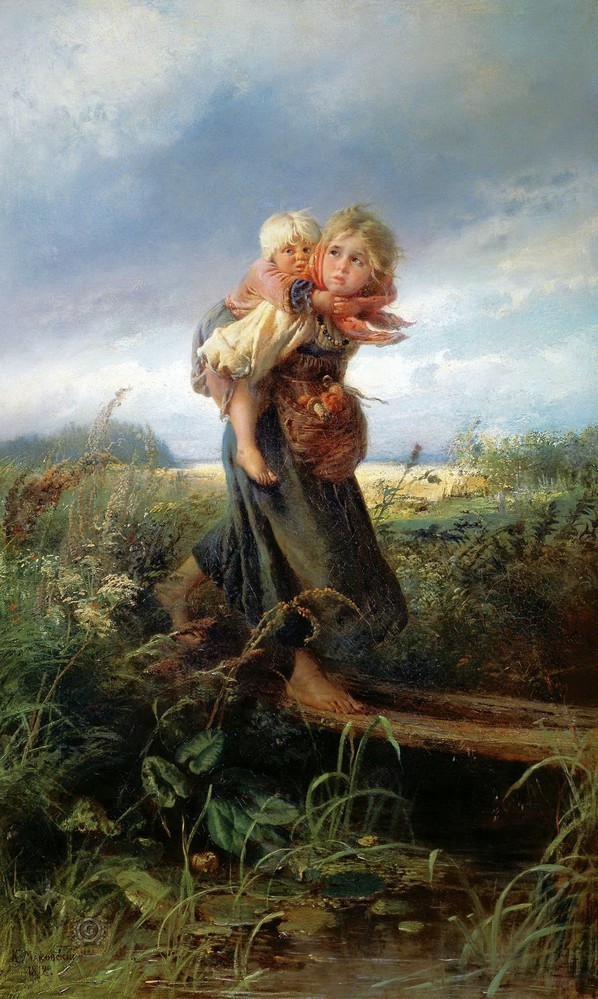
‘Children Running from the Storm’, 1872
SputnikYet, Makovsky often painted touching and sentimental pictures about hard rural life too. His barefoot girl running with her brother from a thunderstorm is a real scene from life observed by the artist during one of his trips to the Russian provinces.

One of the main symbols of the Soviet era and monumental propaganda, the 24-meter-tall ‘Worker and Kolkhoz Woman’ was created for the 1937 World's Fair in Paris. The author, Vera Mukhina, wanted to depict the two figures naked, however, the party demanded that they be "dressed". That detail, however, did not detract from the effect that the monument produced: the French even wanted to buy it, but the Soviet Union refused.
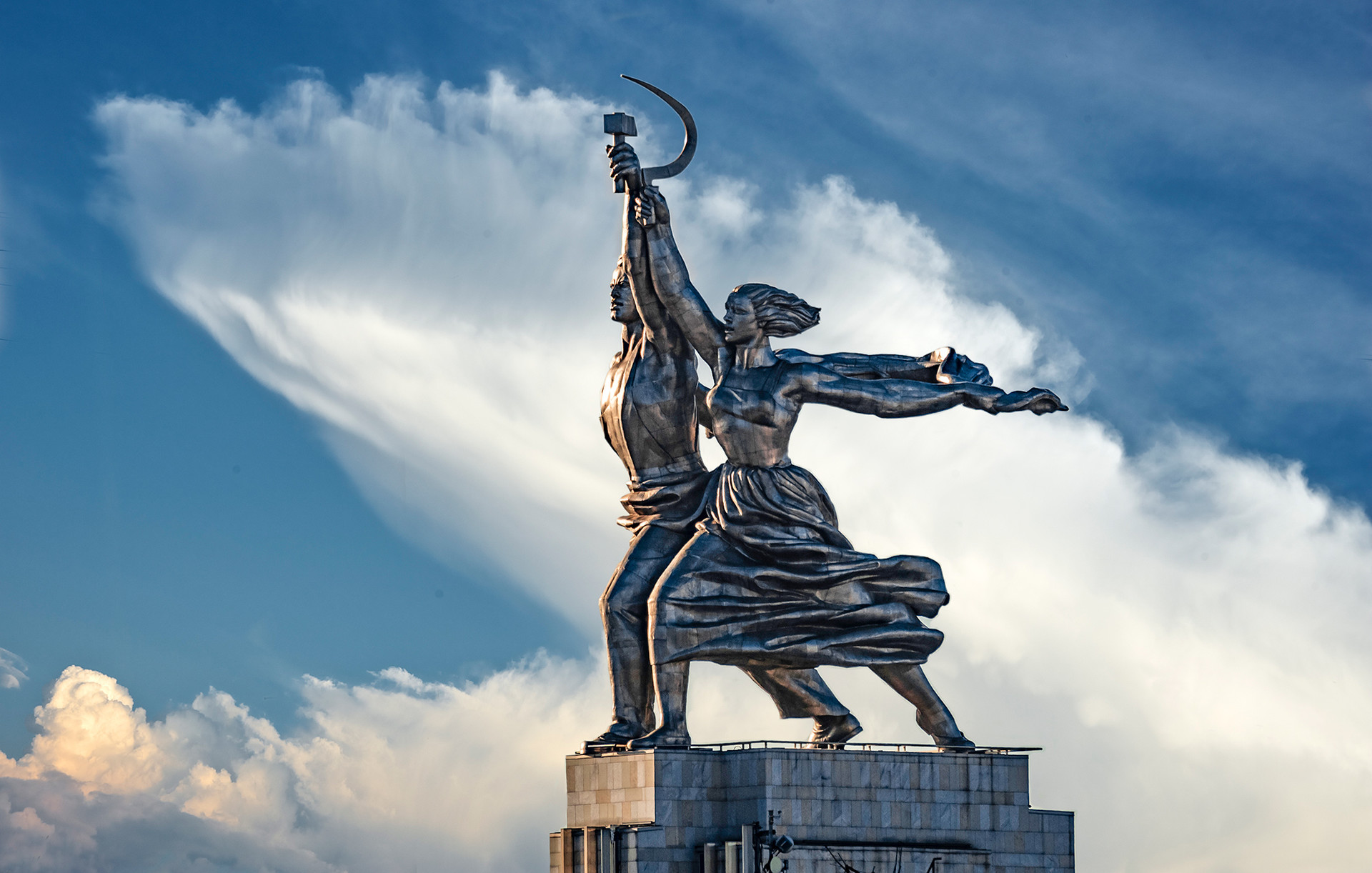
‘Worker and Kolkhoz Woman’, 1937
Global Look PressVera Mukhina had been fulfilling state orders for monuments since 1920, but despite numerous awards (she had four Stalin Prizes alone), she was never commissioned to make sculptures of either Lenin or Stalin. The reason was that Mukhina was not considered to be reliable enough. In the early 1930s, she was even expelled from Moscow, and after the Paris exhibition, an order was issued to never allow her to go abroad.

Conceptual artist Nakhova is considered the author of the first “total installations” in Russian contemporary art. In the mid-1980s, she changed one of the rooms in her flat beyond recognition, thus becoming simultaneously the author of her work and a character living inside it. Thus, for several years her apartment served as a testing ground for her experiments. In 2015, Nakhova became the first female artist to be exhibited in the Russian pavilion at the Venice Biennale.
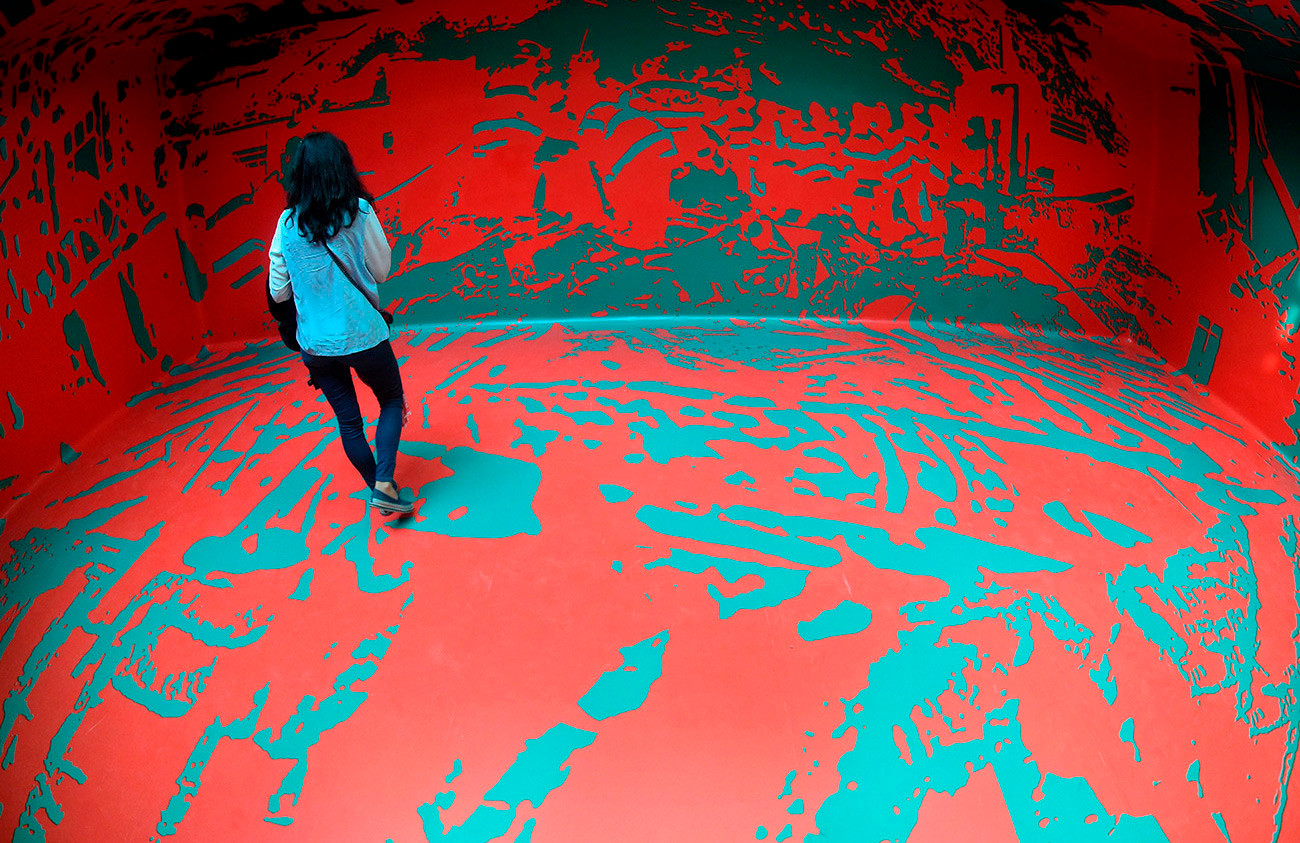
‘Rooms’ project, the 1980s
Global Look Press
Neizvestny created monumental works that can be seen today in Russia, Ukraine, the USA, Egypt, Sweden and the Vatican. However, in the Soviet Union, the sculptor was subjected to harsh ostracism. Because of disagreements with the official cultural style - socialist realism - he was savaged by newspapers; beaten on the street, and summoned for chats with party officials. The then head of state, Nikita Khrushchev, called his works "degenerate art". Ironically, when Khrushchev died, his family commissioned the tombstone from Ernst Neizvestny (and he made it from two marble blocks — white and black — symbolizing Khrushchev's internal contradictions).
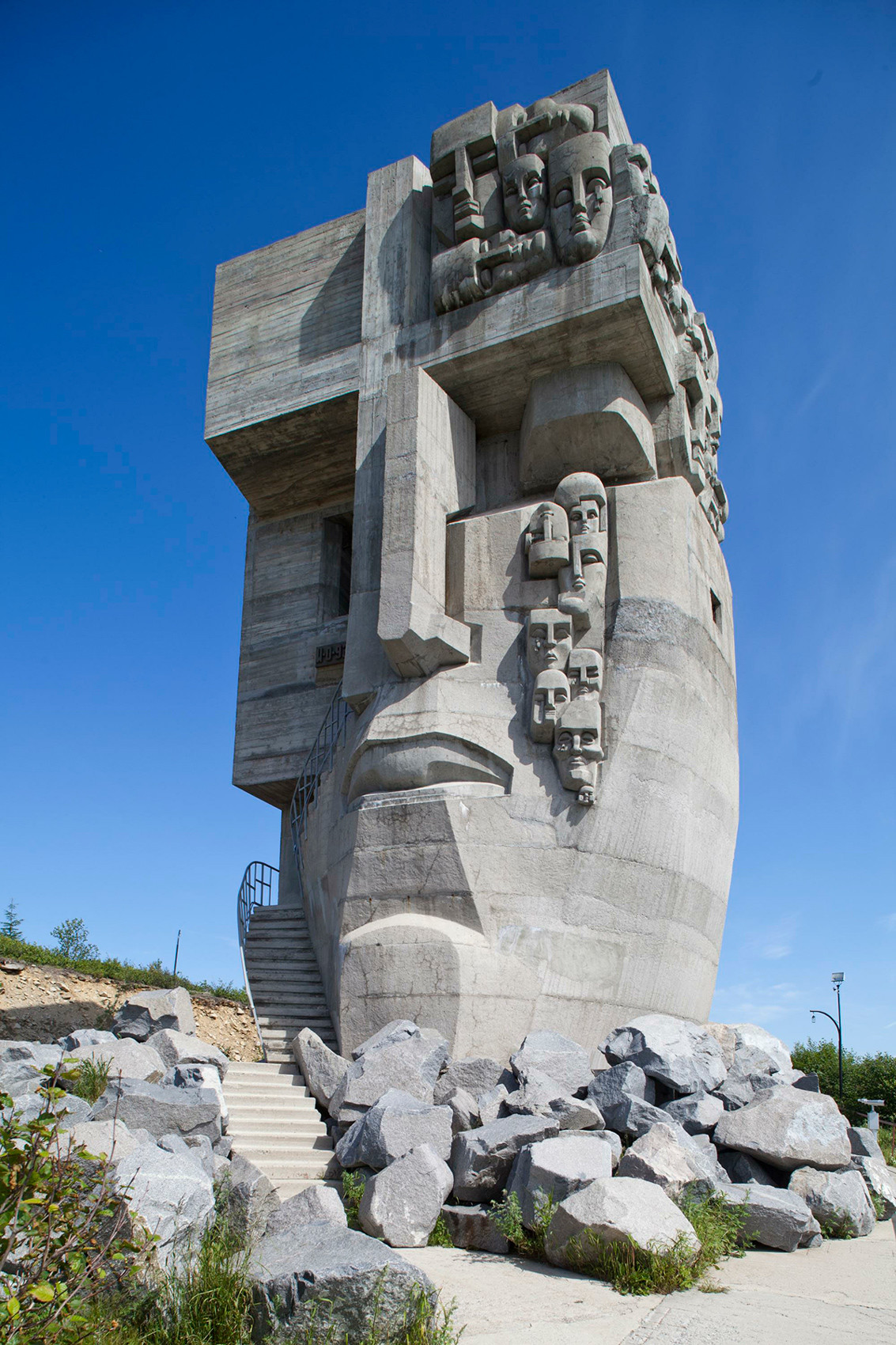
‘Mask of Sorrow’, 1996
Global Look PressPerhaps his most famous work is ‘Mask of Sorrow’, a 15-meter monument in Magadan, dedicated to the memory of victims of political repression. It is standing at the site of a Stalin-era transit camp, from where prisoners were sent to Kolyma labor camps.

Nemukhin is one of the most important representatives of Soviet Nonconformist Art. He was expelled from the art institute for his radical language and was officially banned, although he enjoyed popularity among the public during the period of the Khrushchev Thaw.
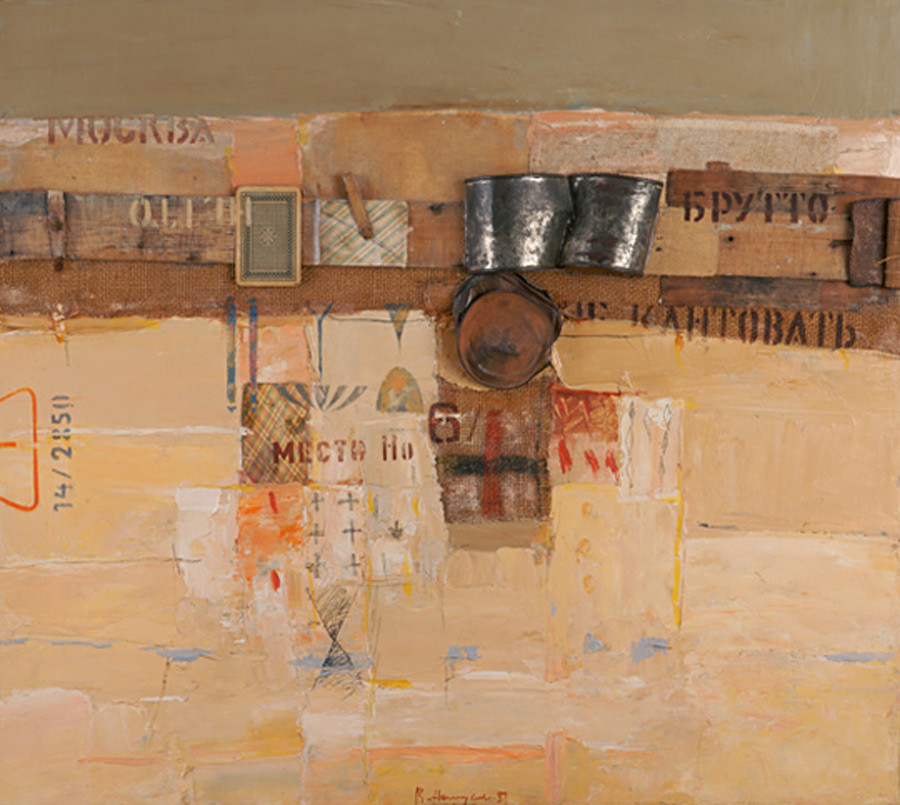
‘Cans. Playing Cards on the Beach’, 1989
Victor Mincin's collectionIn 1956, he met Oscar Rabin and joined the Lianozovo Group. For many years, his favorite trick, his "signature" and the subject of many of his works were playing cards. They were always present in his works – as a single card, in pairs or in solitaire - becoming a symbol of the uncertainty of the future.

Religious artist Nesterov created the image of "the Russian Christ" through the image of Sergius of Radonezh, a Russian Orthodox Church saint and ascetic. Nesterov dedicated a huge cycle of paintings to him, but considered ‘The Vision to the Youth...’ his best work ever.
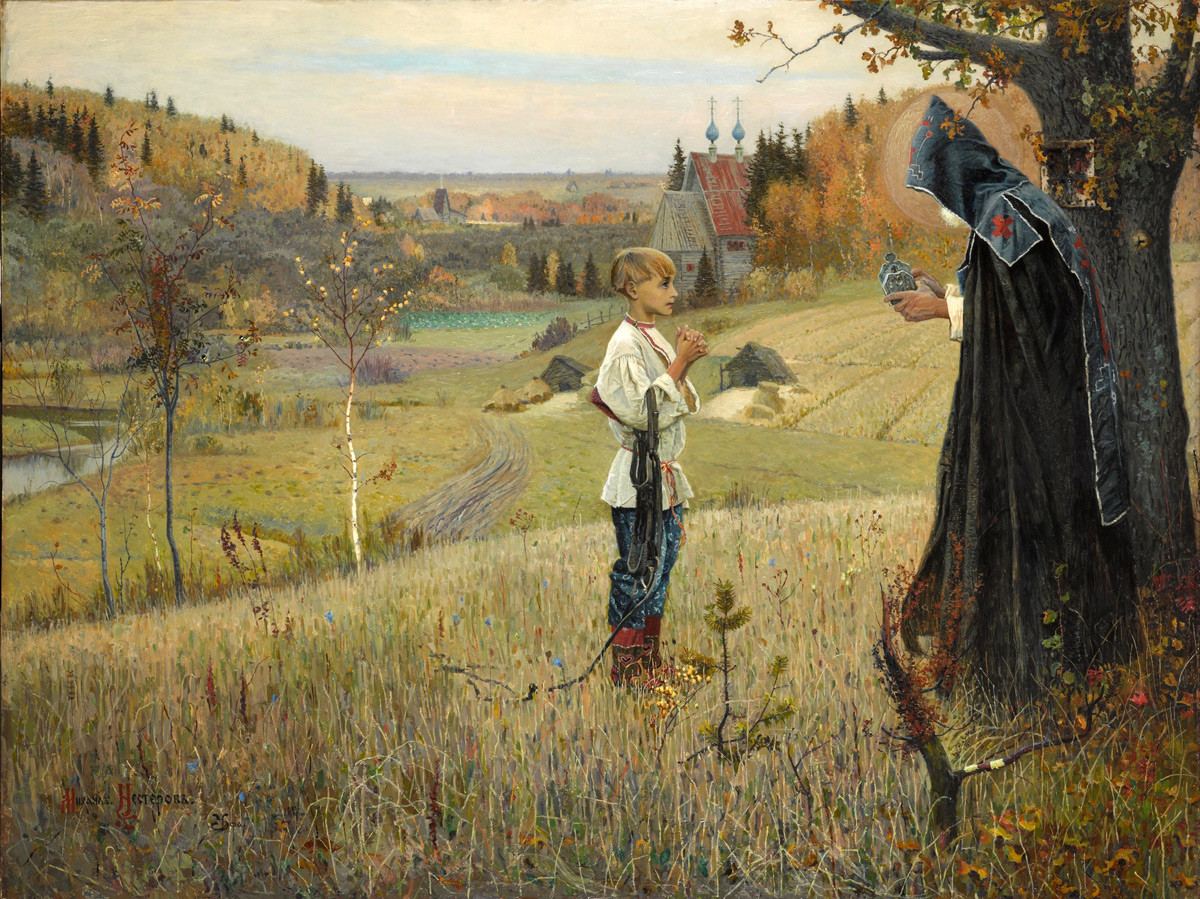
‘The Vision to the Youth Bartholomew’, 1890
Tretyakov galleryAnd yet, Nesterov (who was rarely satisfied with his works and often destroyed them) damaged this canvas, too: he fell on the picture when he was repainting the youth's face for the hundredth time.

Novikov is the founder and leader of one of the main art associations in the Russian contemporary art of the 1980s called New Artists. Once he exhibited a plywood shield with a hole in it, calling the work ‘Zero Object’. Novikov is best known for his fabric appliqués.
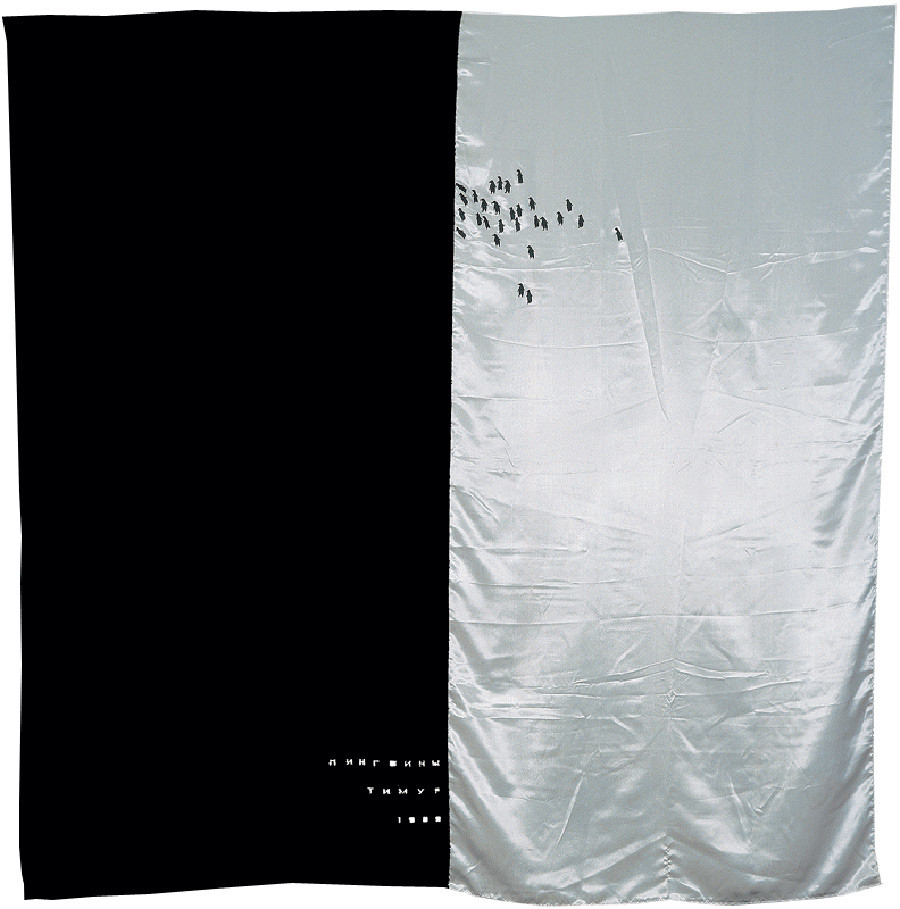
‘Penguins’, 1989
Moscow Museum of Modern ArtHe was credited with continuing the work of the Russian avant-garde in new realities and with new materials. In the late 1990s, he exhibited at Tate in Liverpool, at Stedelijk in Amsterdam, in museums and galleries in Berlin, Hamburg, Paris, New York, Moscow and St. Petersburg.

A classic of Sots Art, in his works Orlov explores the imperial style and the phenomenon of an empire in the broadest sense. His works may depict different historical eras in different cultures, but they all revolve around one topic - the patriarchal system based on the idea of domination.
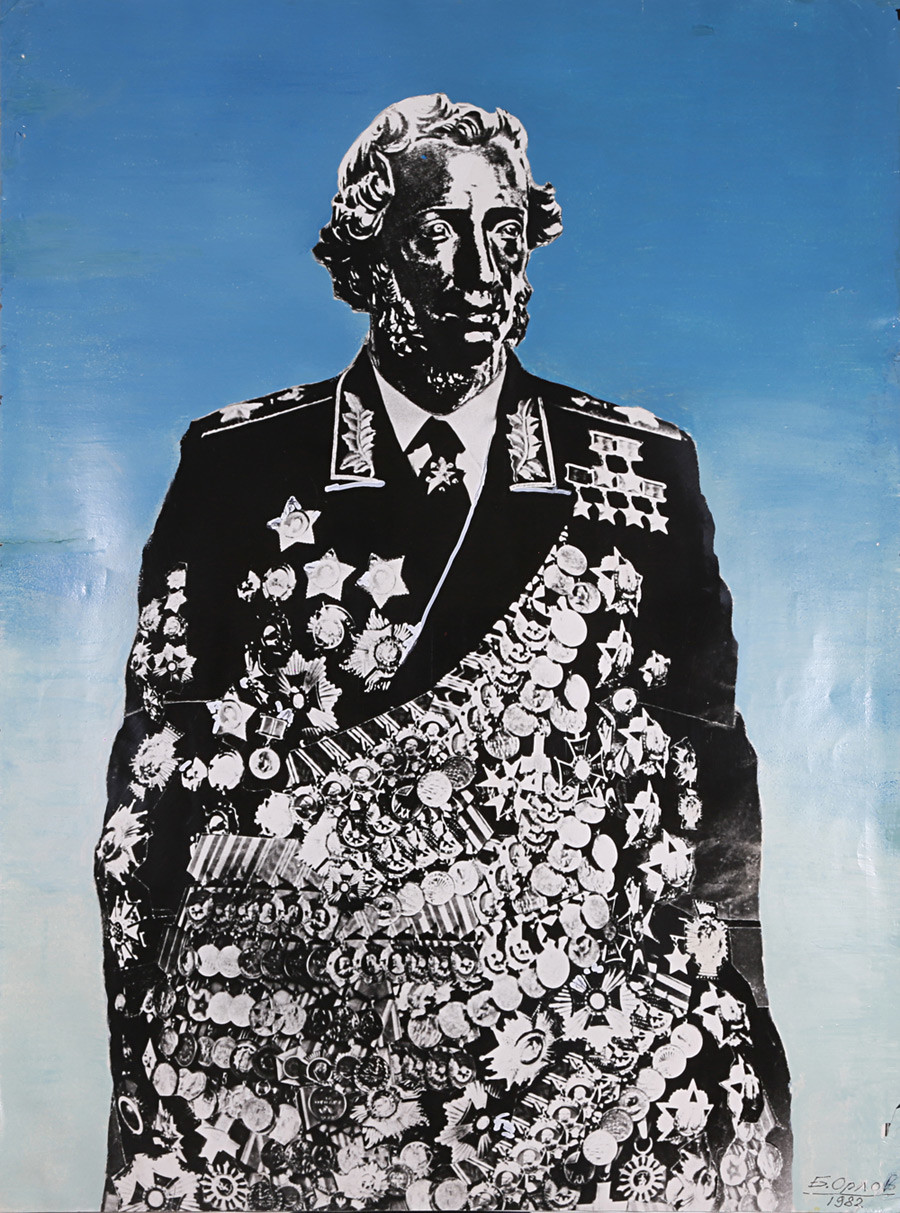
‘National Totem’, 1982
The Vladimir Potanin FoundationOne of his favorite methods is the use of militaristic accessories: "Because an empire usually has a military face. And even a non-military one puts on a uniform."

Osmolovsky is Russia's main activist artist, whose actions, poetry, lectures and even fights amounted to an exciting political statement in the 1990s. He carried a refrigerator with a Lenin bust inside to Red Square; laid out an obscene word on the same square with the bodies of his comrades; smoked on the shoulder of the Mayakovsky statue, and was behind many other actions and happenings.
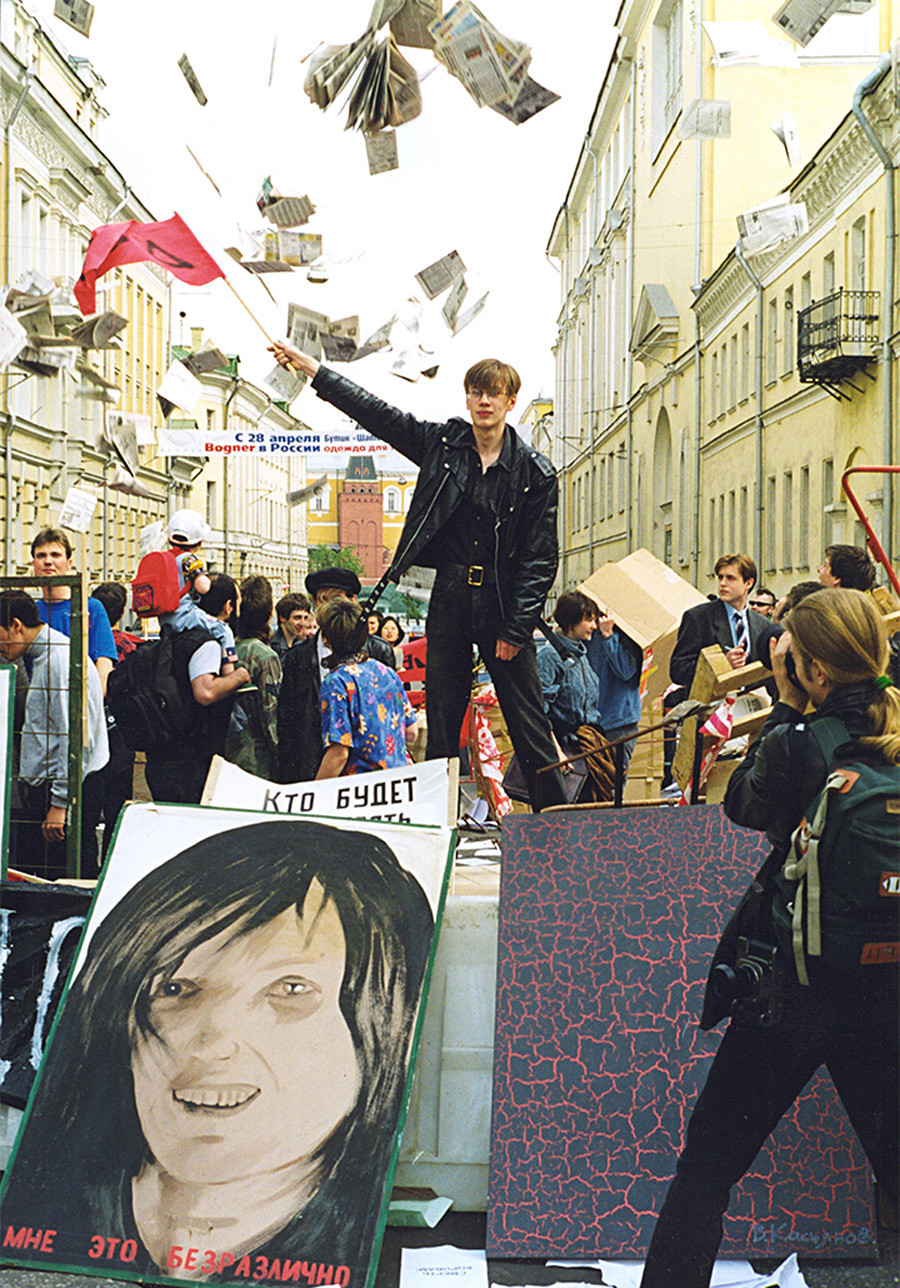
‘Barricades’, 1998
Anatoly OsmolovskyIn 1998, he and 300 other activists for barricaded Bolshaya Nikitskaya Street, which leads to the Kremlin, for three hours, dedicating their action to the 1968 French Revolution. Seven leaders of that procession were subsequently convicted and sentenced to fines.

Many of Perov's paintings provoked heated debates among his contemporaries. The artist painted scenes from the harsh life of ordinary people. ‘Troika…’, depicting children who were brought from the village to town as hired labor, is perhaps his best work on this subject.
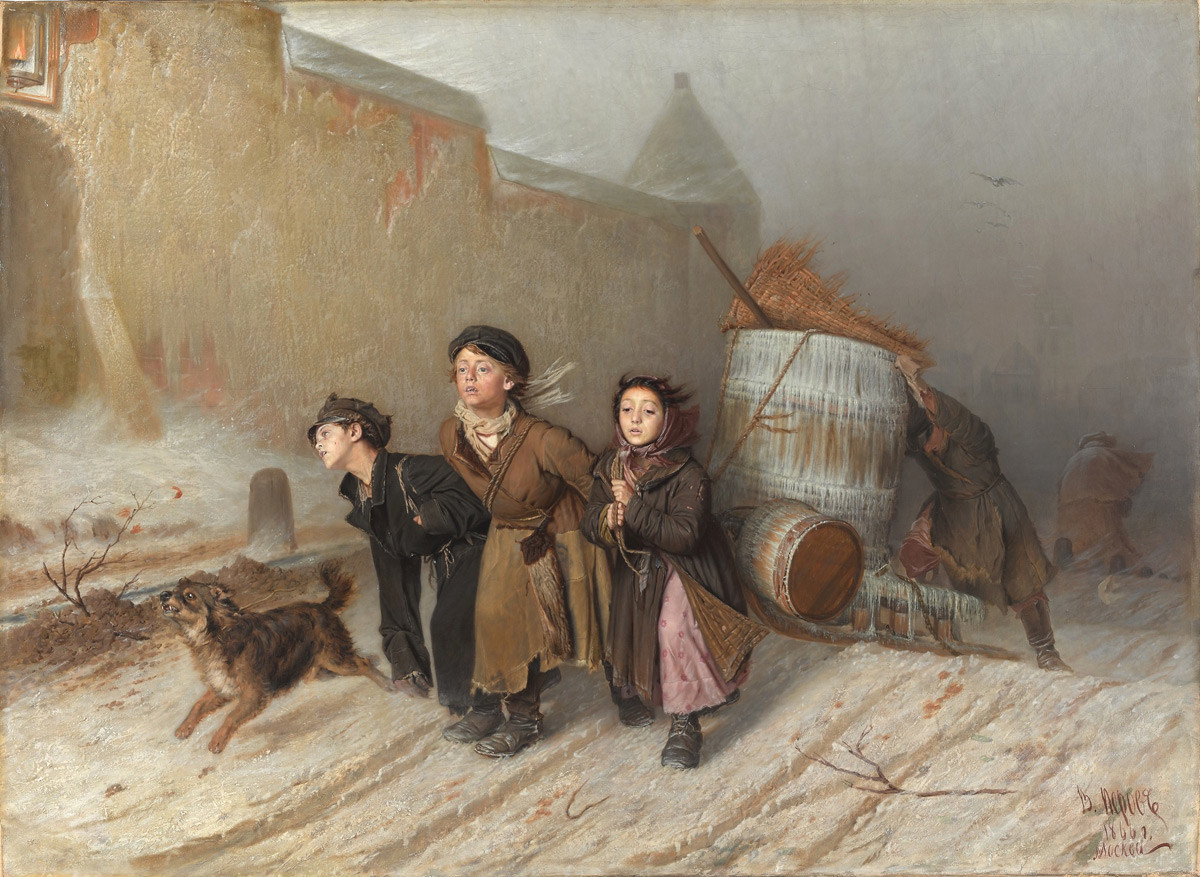
‘Тroika. Apprentice Workmen Carrying Water’, 1866
Tretyakov gallery
Pimenov was a loyal follower of the art policy of the Communist Party. In the darkest times of Stalin’s purges, he painted idyllic scenes of the everyday life of Soviet people and glorified factory and plant workers.
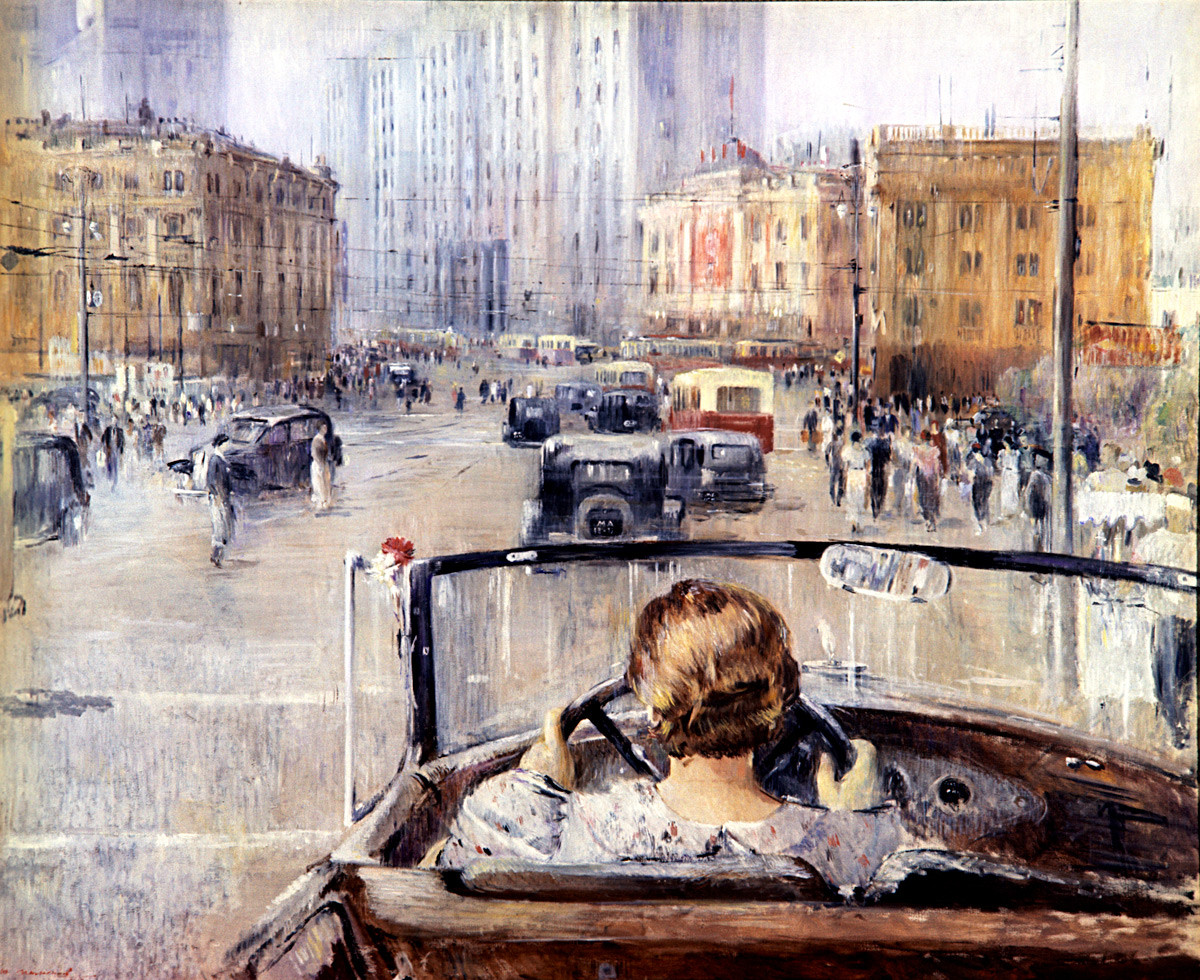
‘New Moscow’, 1937
Tretyakov galleryHis ‘New Moscow’ is one of the best examples of socialist realism: a woman, as a symbol of a new era, is driving through blossoming Moscow. One assumes that her destination is no less bright and beautiful future.

Pepperstein was born and grew up in the circle of Moscow conceptualists (his father is the famous artist Viktor Pivovarov). Perhaps that is why his creative impulse was nourished from the very beginning. Today, Pepperstein is one of the most prolific Russian artists and a famous writer.
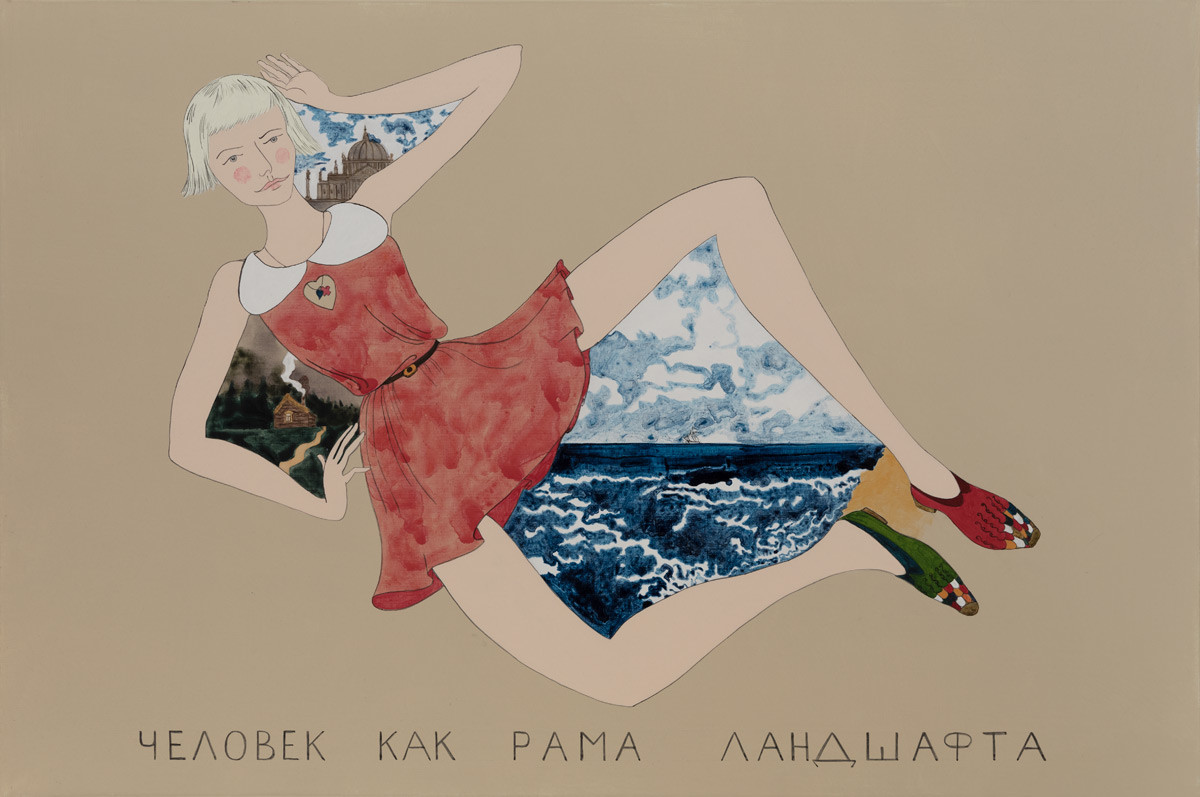
‘The Girl as a Frame for the Landscape’, 2018
Courtesy of the artistIn his works, he creates whole fictional worlds and his own mythology. Which makes him particularly popular among intellectuals.

He was the son of a shoemaker who wanted to paint icons. Although he did not become an icon painter, the artist was made world famous by his image of the Messiah depicted as a young man on a red horse. Created a few years before the Russian Revolution, this painting is considered prophetic and has numerous interpretations. According to one theory, the horse is Russia, which awaited a "red" destiny in the 20th century.

‘Bathing of a Red Horse’, 1912
Tretyakov gallery
By education, Prigov was a sculptor and this is how he made a living during Soviet times, although all his busy creative activity was aimed at becoming a "monument" himself. In the 1970s, he also became known as a poet who turned his recitals into real performances. His so-called ‘Cans’, supposedly containing single words and whole poems, resemble Piero Manzoni's tin cans with "Artist's Shit" written on them. Thus, Prigov equated poems to all the other secretions of the body.
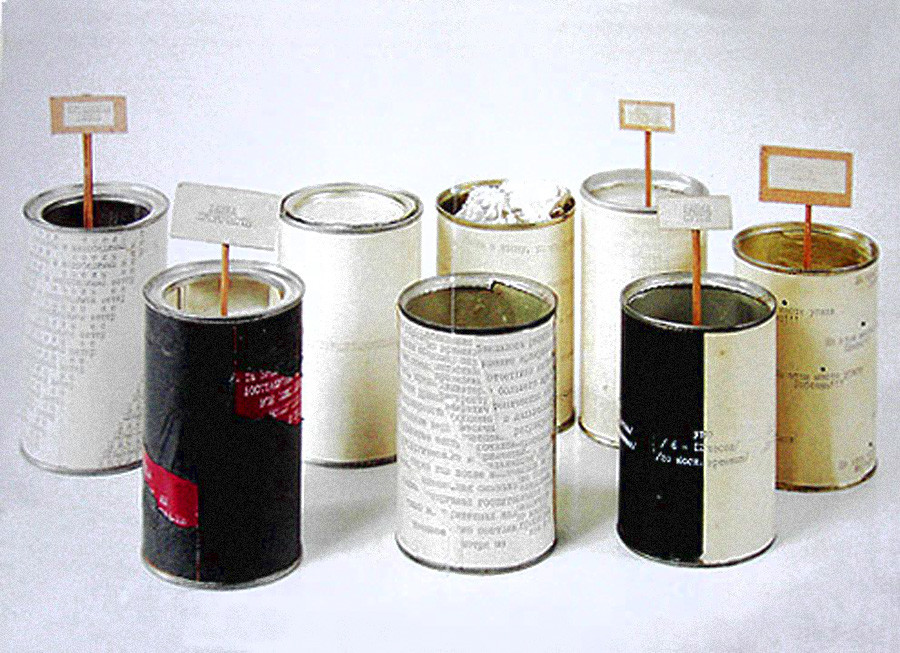
‘Cans’ project, 1975
Dmitri PrigovWith the arrival of perestroika, Prigov moved away from poetic performances to conceptual art: he created graphic art, installations, collages, crossing ideas, words and thoughts, "deciphering the culture genome" and new symbols.

One of the leading religious artists, Polenov wanted to create something as ambitious as Ivanov's ‘The Appearance of Christ before the People’. To this end, he set off on a year-long journey through Constantinople, Palestine, Syria, and Egypt, from where he brought the first sketches to ‘Christ and the Woman Taken in Adultery’, his main work. The journey from the idea to the completion of the canvas based on a scene from the Gospel of John took him as long as 15 years.
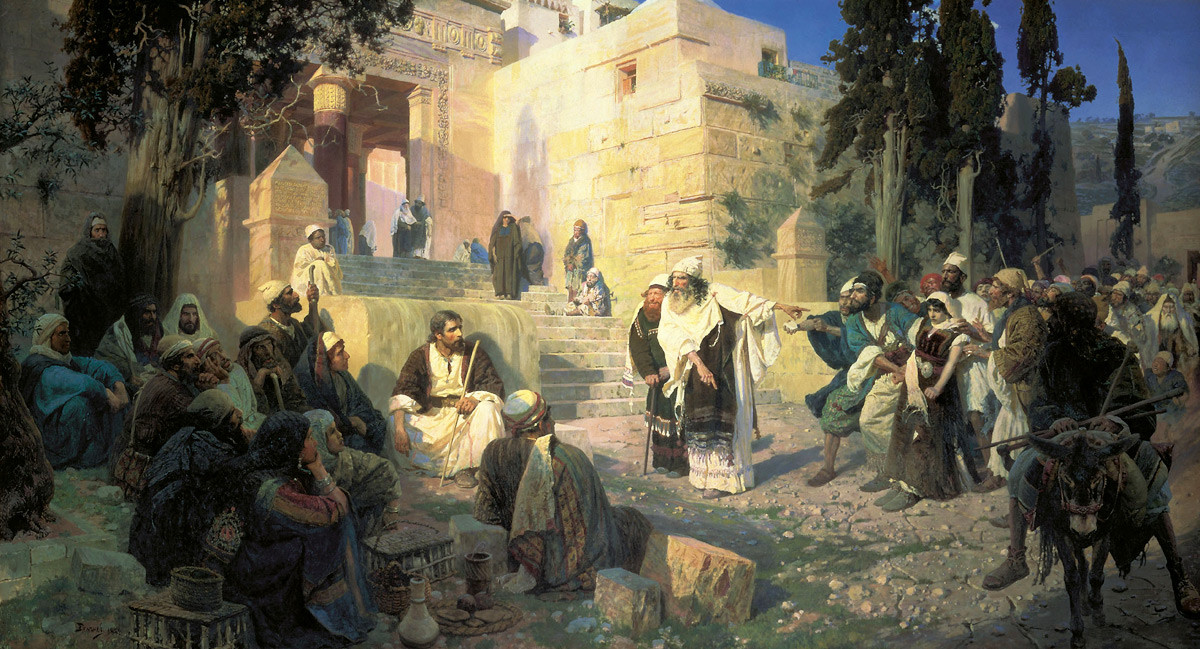
‘Christ and the Woman Taken in Adultery’, 1888
Russian Museum
Despite having died very young (of scarlet fever at the age of 35 together with her son), in her lifetime the artist managed to be a futurist, a student of Malevich, an adept of cubism and, finally, a constructivist. It was in that final capacity that Popova designed working clothes for "revolutionary" professions.
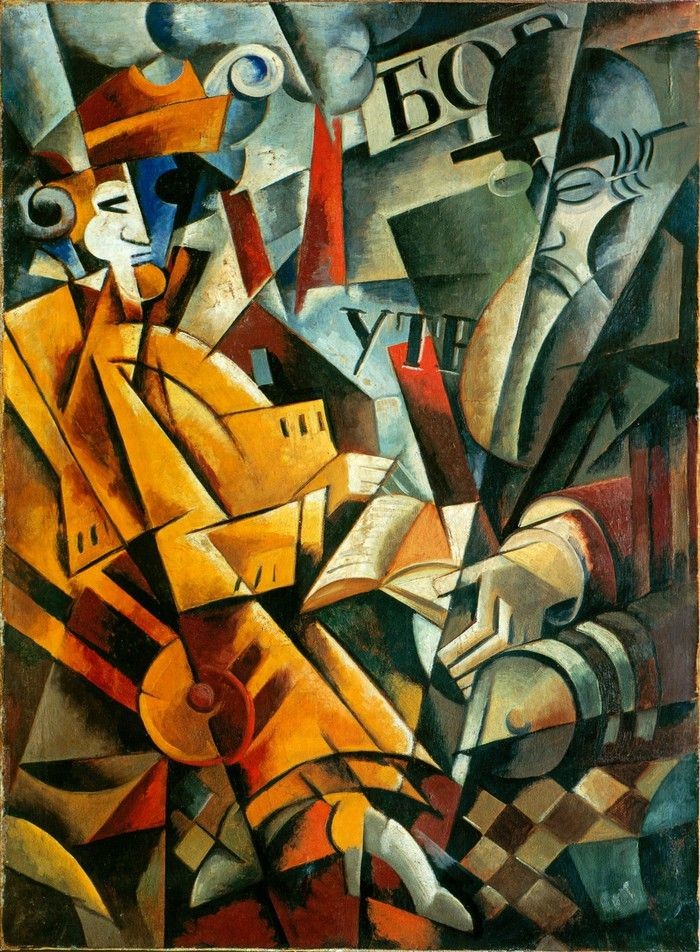
‘Composition with Figures’, 1915
Perm State Art Gallery
Unlike his colleagues, this classic of Moscow Conceptualism largely focused on the "secret life of the human soul". In the words of the artist's son, Pavel Pepperstein, "all his life, Pivovarov has been painting the room of the soul", where all external attributes, like the view from the window, become part of it.
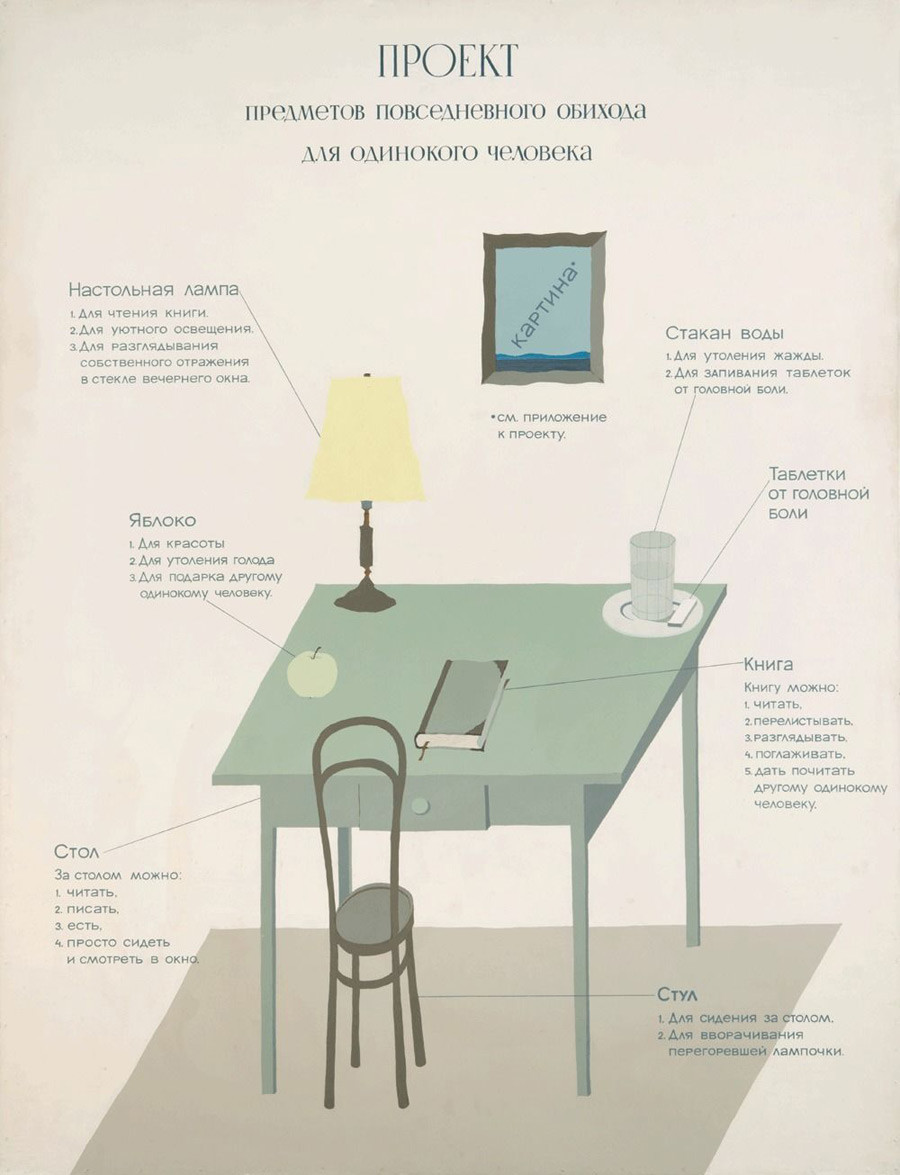
‘Projects for a Lonely Man’, 1975
Viktor PivovarovPivovarov's main "invention" was the genre of a conceptual album. It is in this genre that he created one of his most famous cycles, ‘Projects for a Lonely Man’, painting the daily routine, dreams, interior and even the sky of a hero, who is experiencing extreme loneliness. Incidentally, many viewers recognize themselves in the hero's daily routine. "In principle, it [the daily routine] has not changed much," says the artist.

"Among his fellow artists and students, he left a warm and lasting memory, and in the history of Russian art - a brilliant, albeit a short trace," the artist's contemporaries said in his obituary. Indeed, Pukirev, like a number of his colleagues, became the author of one masterpiece.
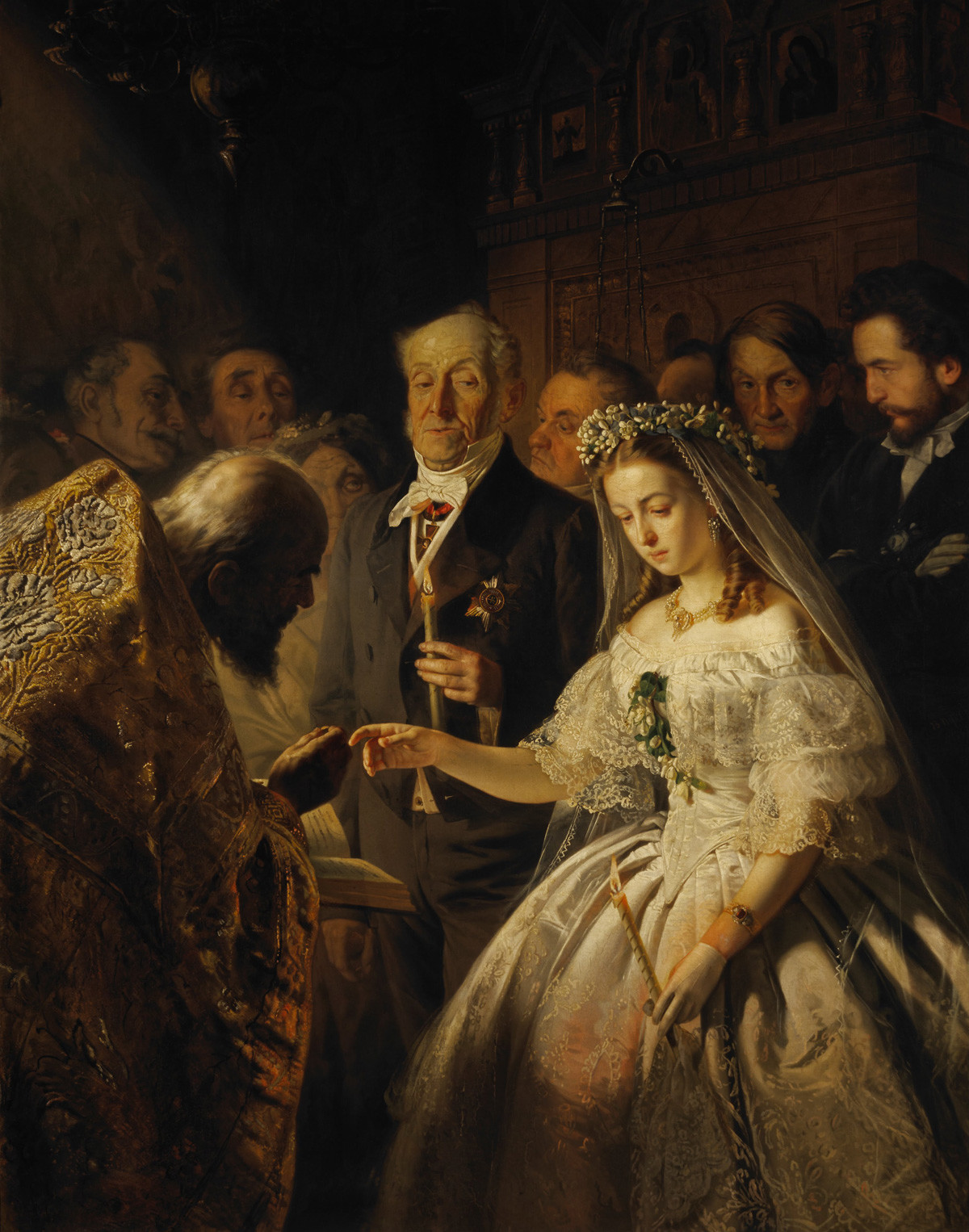
‘The Unequal Marriage’, 1862
Tretyakov gallery‘The Unequal Marriage’ propelled him to the ranks of the leading genre painters of the mid-19th century, but remained Pukirev's only masterpiece.

The art group of Andrey Blokhin and Georgy Kuznetsov from Krasnodar was set up in 2008 and has already exhibited three times at the Venice Biennale with total installations and multimedia projects about augmented reality. All their works, in one way or another, are about the life of a modern person in the era of the Internet and various gadgets.
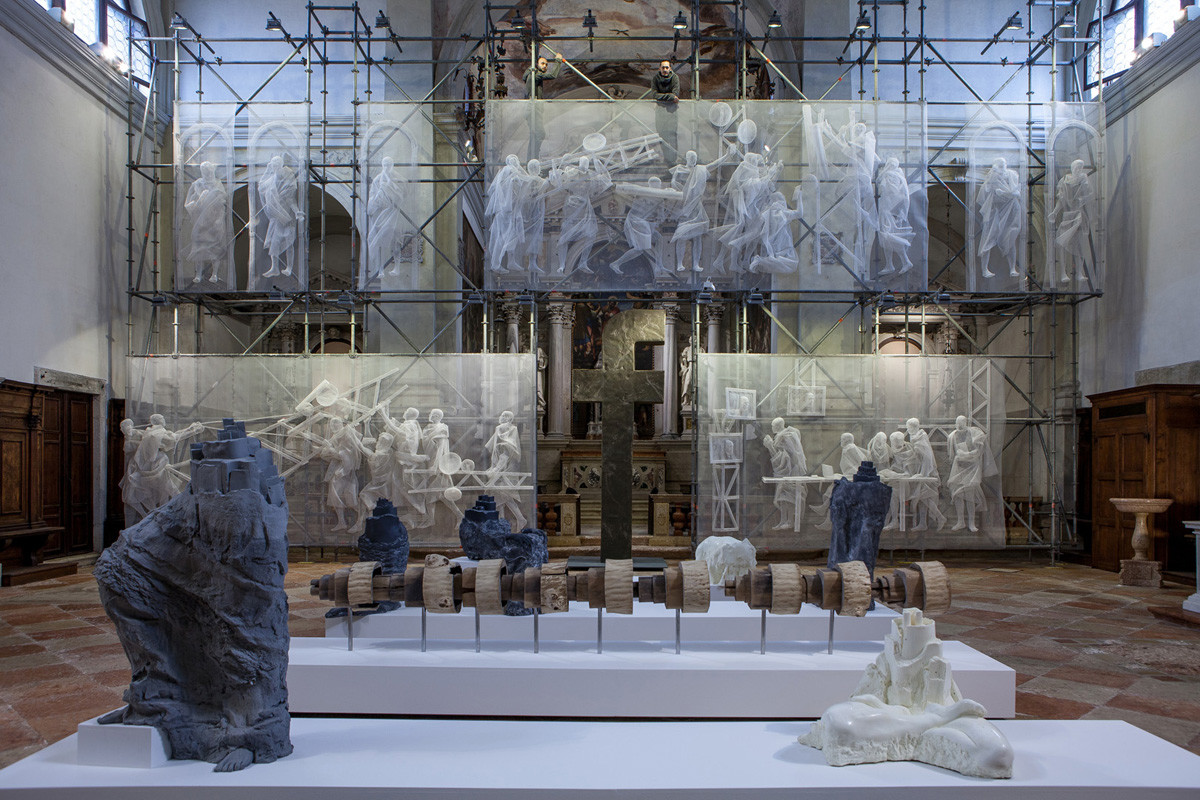
‘Сonversion’, 2015
Recycle art group‘Conversion’ is a huge construction, with sculptures and bas-reliefs depicting "neo-apostles", the carriers of a new religion called "global network".

Rabin is the leader of nonconformism, the unofficial Soviet art of the 1960-1970s. His paintings are full of all that was banned by official Soviet art — barracks, garbage dumps, vodka bottles, and crumpled newspapers. They depict the other, and bigger, side of glossy Soviet reality.
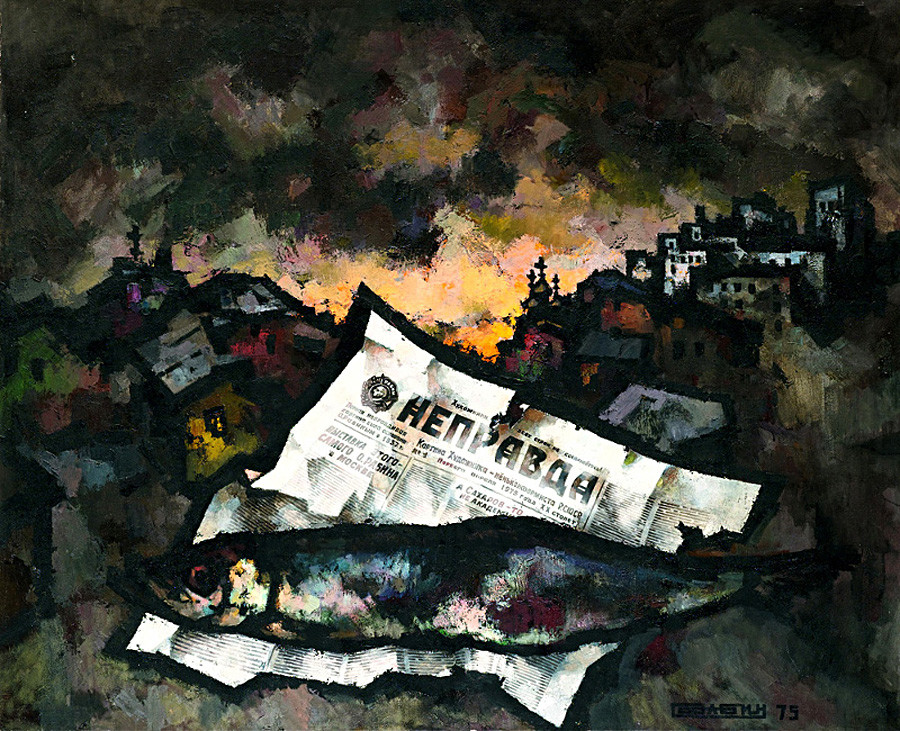
‘Nepravda’, 1975
Tsukanov Family FoundationThe artist said that all that garbage from the suburbs was he himself: "I have been painting one picture all my life - my portrait against the background of the country."

A philosopher, traveler and orientalist artist with an absolutely unique style, Roerich left a legacy consisting of more than 7,000 paintings and sketches, many of which are now kept in the world's best museums. He spent all his life traveling, from which he drew his subjects - from an expedition in the Himalayas and India to Central Asia.
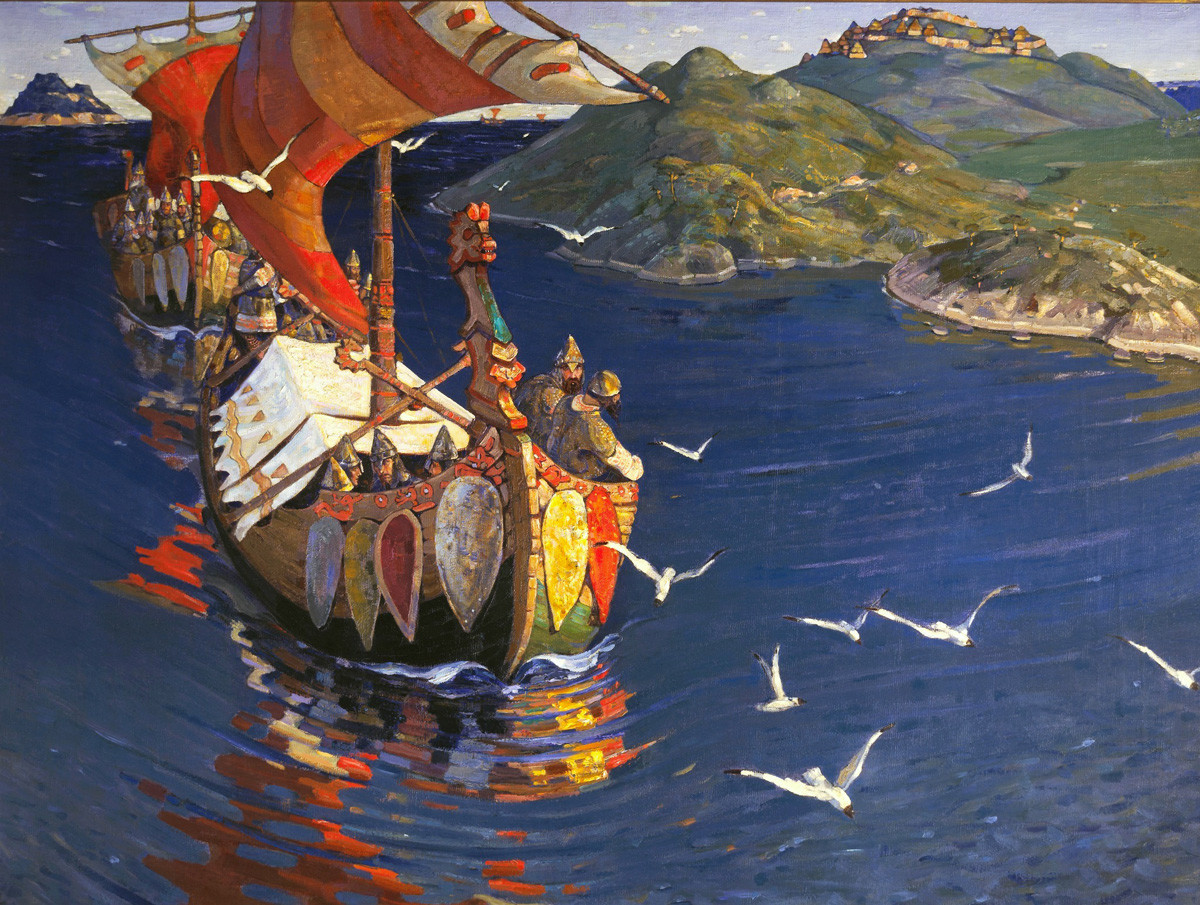
‘Guests from Overseas’, 1902
Tretyakov gallery‘Guests from Overseas’ was painted in Paris and tells of travels in ancient Russia.

Repin was very good at depicting the suffering of the people in the 19th century. The harsh lives of barge haulers and revolutionaries, everyday scenes from the life of the lower classes, people's processions - all these subjects made him a key figure in Russian realism and an artist of social history. Yet, his most controversial painting depicts an episode from another era.
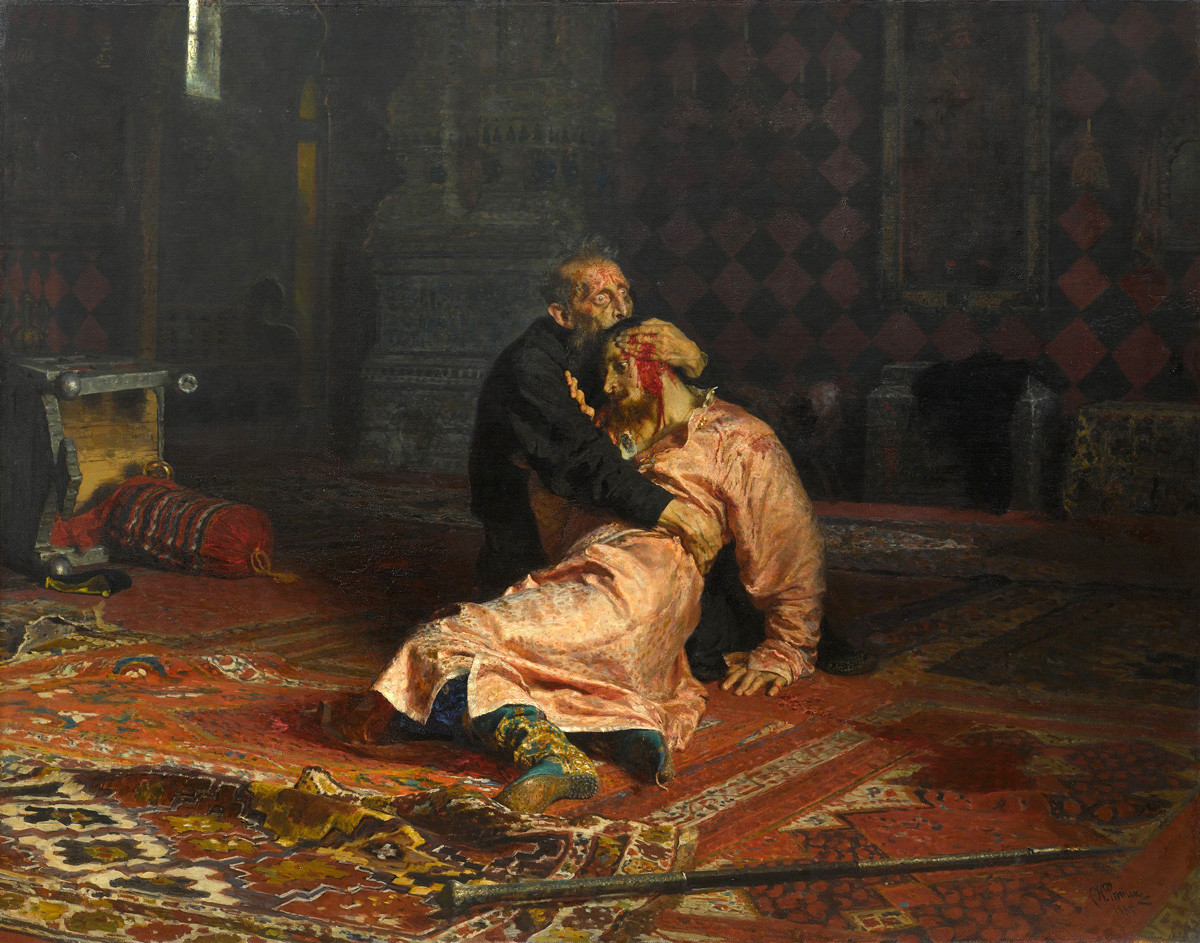
‘Ivan the Terrible and His Son Ivan’, 1885
Tretyakov galleryThe story of Ivan the Terrible killing his own son is so controversial (historians are still arguing whether it really happened or not) that Repin's masterpiece was repeatedly attacked, even during the artist's lifetime. The latest attack took place in 2018, when a drunken vandal splashed the canvas with paint.

Rokotov was one of the most sought-after portrait painters among St. Petersburg nobility of the 18th century, while Alexandra Struyskaya depicted by him was considered one of the most beautiful women of the century.
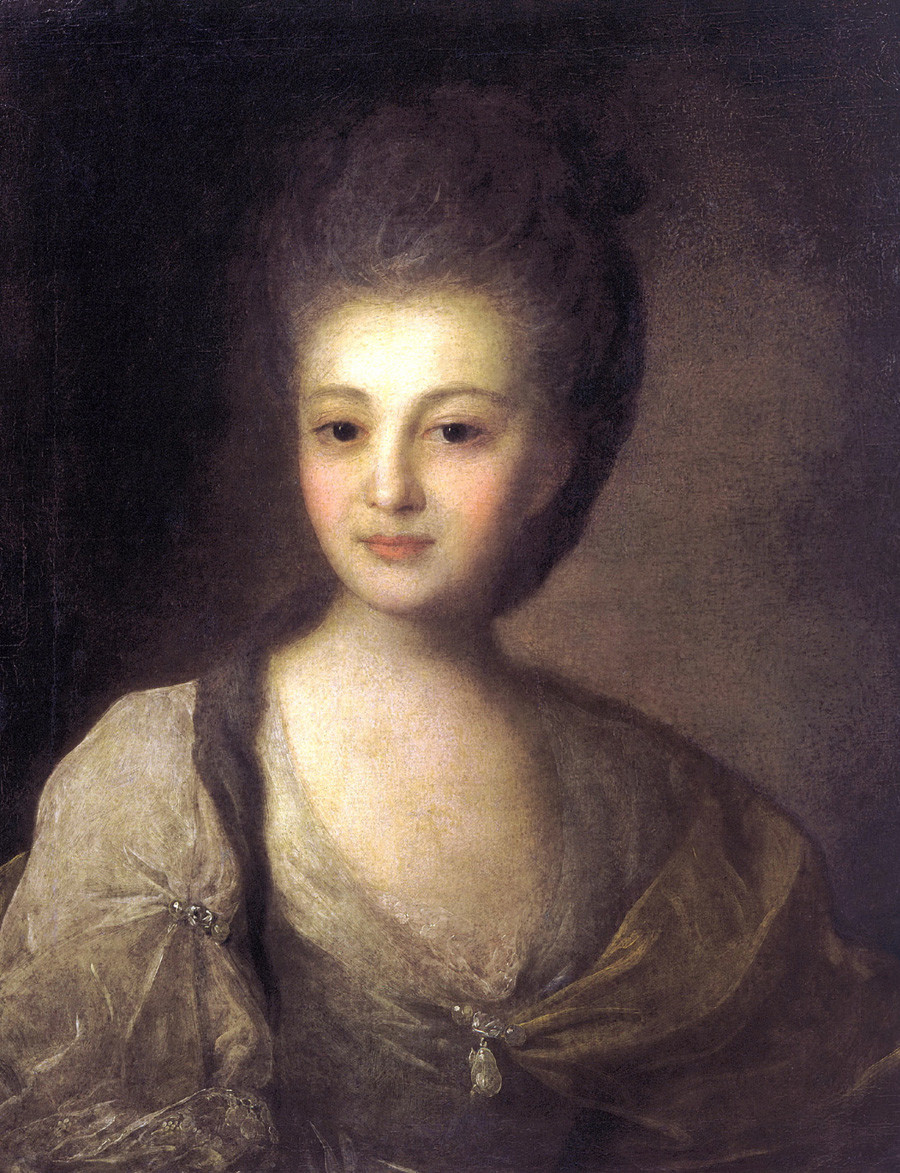
‘Portrait of Alexandra Struyskaya’, 1772
Tretyakov galleryThe artist was so popular that he could have up to 50 unfinished portraits in his apartment at any one time. In 1763, he painted the coronation portrait of Catherine II.
Rodchenko, the "father" of Soviet advertising and design, a constructivist and an avant-garde artist, embraced the Bolshevik Revolution.
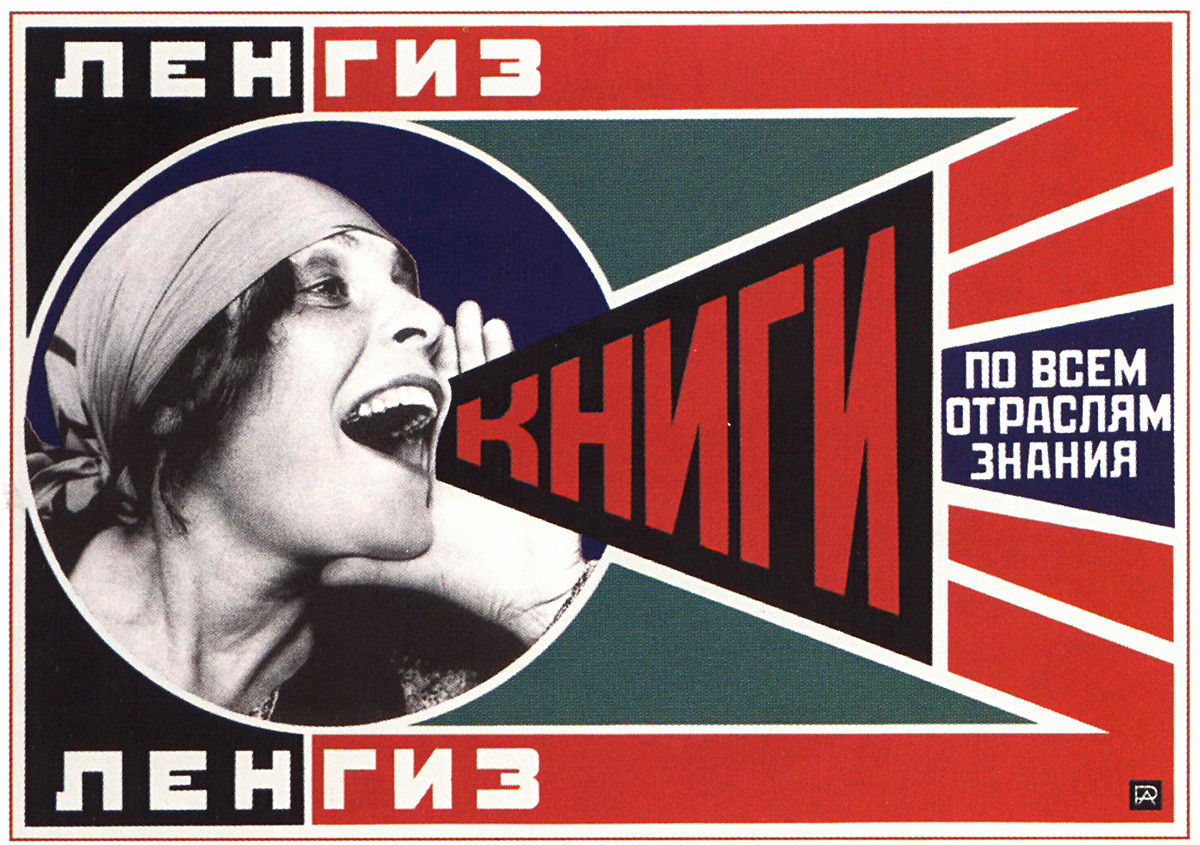
Poster ‘Lengiz. Books on all the branches of knowledge’, 1925
Archive photoHis poster for Lengiz, the main and only official Soviet publishing house, is a striking example of avant-garde advertising, with all its favorite techniques in the form of geometric designs and bright spots. In its center is a photograph of Lilya Brik, "the muse of the Russian avant-garde".

In the history of the Russian avant-garde, her ‘Green Stripe’ is no less significant than Malevich's ‘Black Square’. However, at first, the artist and her best work remained in the shadow of the main suprematist, and later they were almost totally forgotten until their rediscovery in the 1970s.
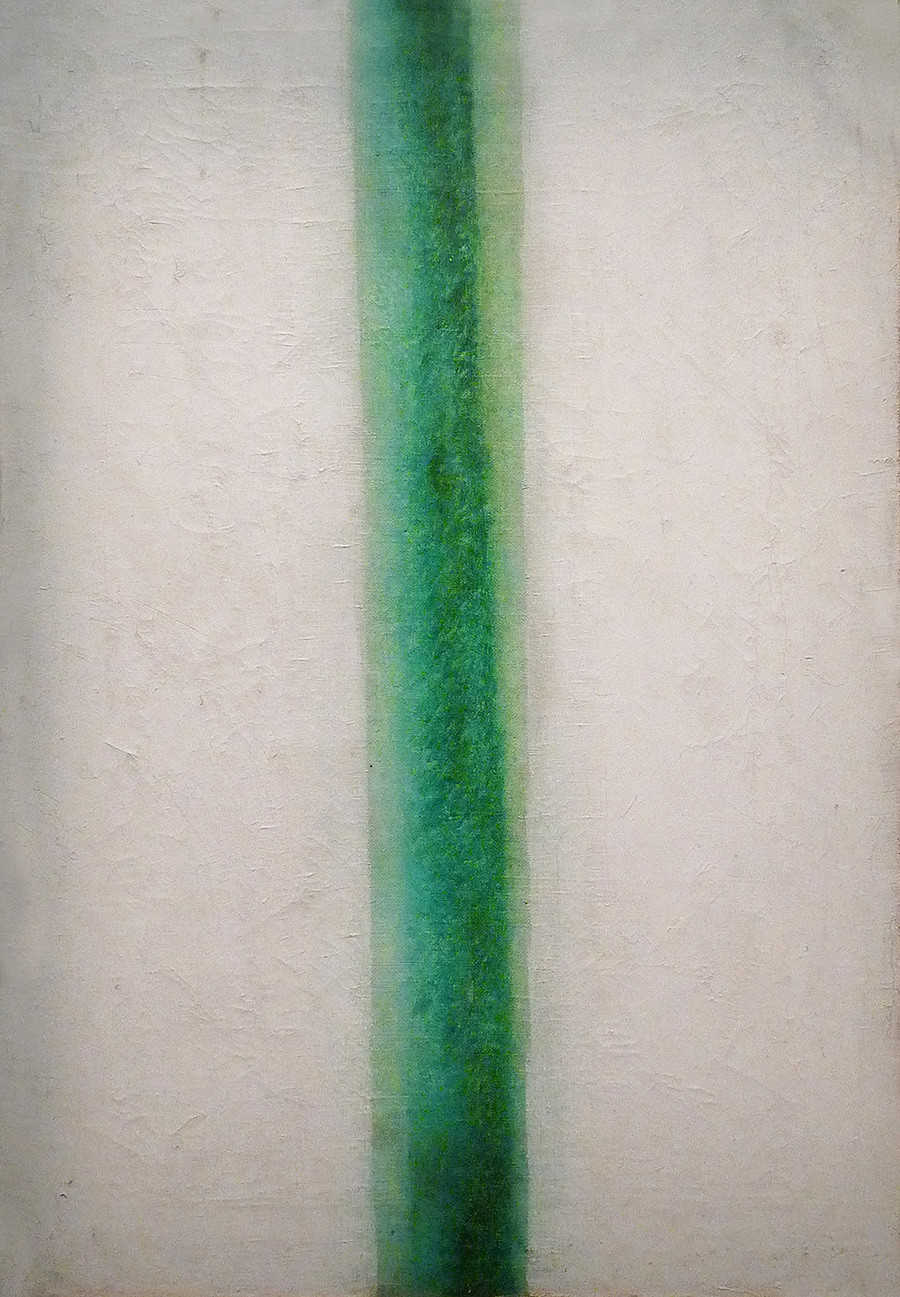
‘Green Stripe’, 1917
Rostov Kremlin Museum-PreserveRozanova achieved even more than Malevich did: she not only put the color above the form, she also successfully resolved the dilemma of the background. Her stripe looks like a projection rather than a figure on the canvas, it seems that it continues beyond the frame. That was the first time in the history of abstract painting that this effect was achieved.

The most famous religious artist in Russian history, Andrei Rublev created a standard of Orthodox icon painting. In the 16th century, his works were recognized as a model to which all icon painters should aspire, while his "Trinity" became the spiritual symbol of all Russian art.
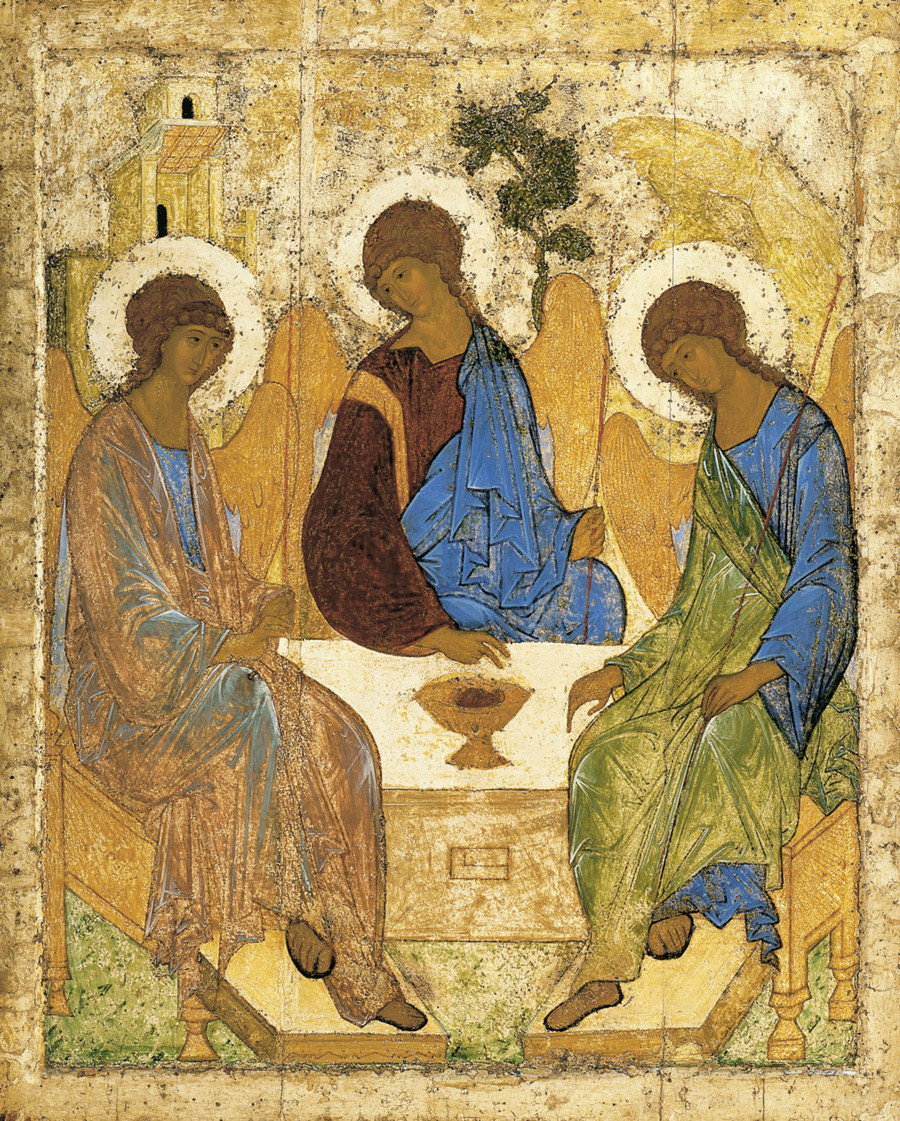
‘Trinity’, 1422-1427
Tretyakov galleryLittle is known about Rublev himself. He was a monk, and devoted all his life to God and painting. In 1988, the Russian Orthodox Church canonized him as a saint.

Many describe Salakhova's art as "feminist" and "political" because it explores the East and the West, the male and the female, in a striking combination of sex and Islam. Marble phallic minarets and black Kaaba vaginas have made her famous and recognizable all over the world.
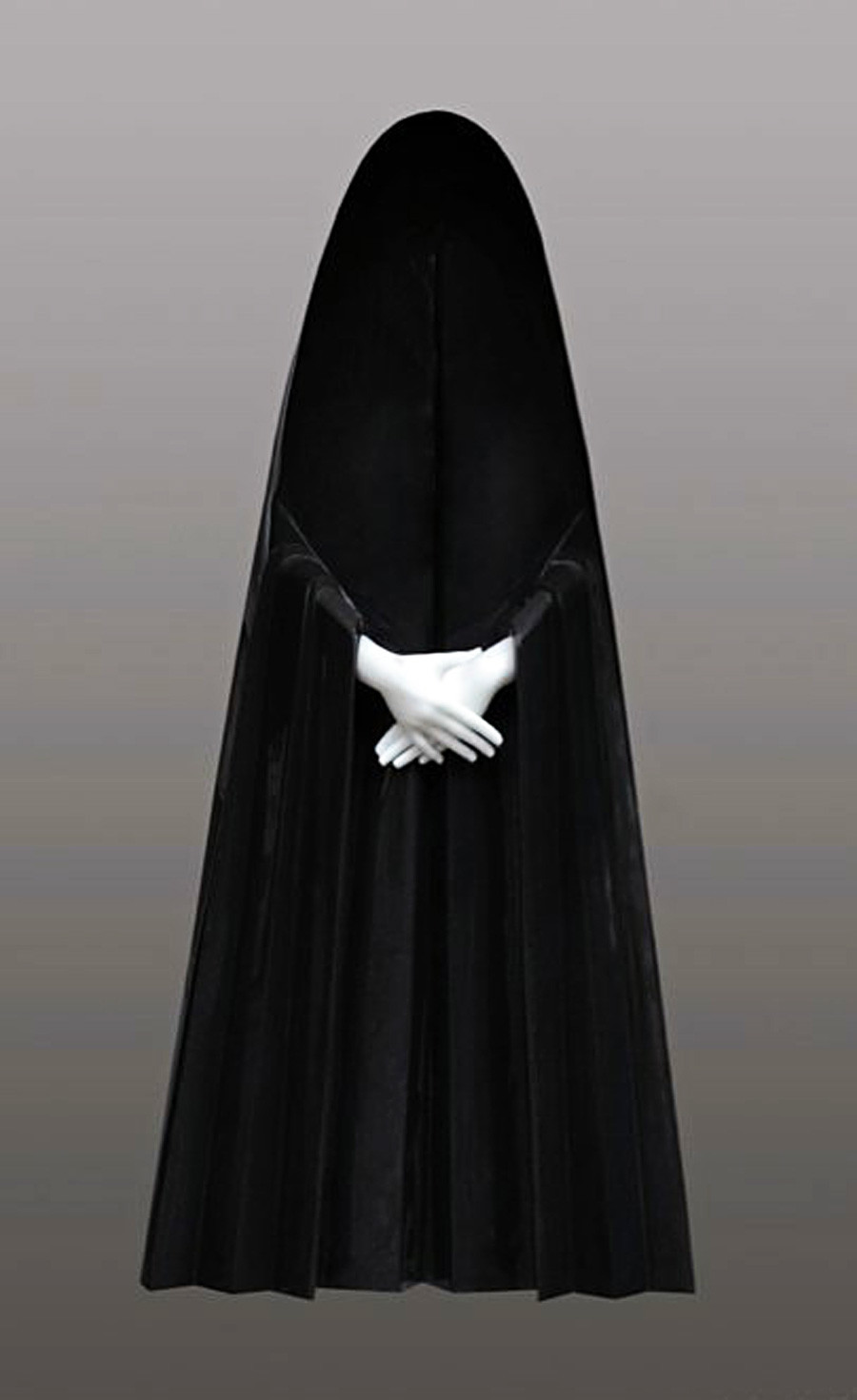
‘Intercession’, 2010-2011
Aidan GalleryAt the 2011 Venice Biennale, her ‘Intercession’, a sculpture of a woman in a niqab, had to be covered with a white sheet after the president of Azerbaijan (‘Intercession’ was displayed in the Azerbaijan pavilion) tried to censor it. Many saw a huge irony in it: the sculpture was covered with a veil because the president did not like it that it depicted a woman in a veil.

Given its status in popular culture, this portrait has perhaps become Serebriakova's main work. For many, its spontaneous and frank nature make it an epitome of femininity.
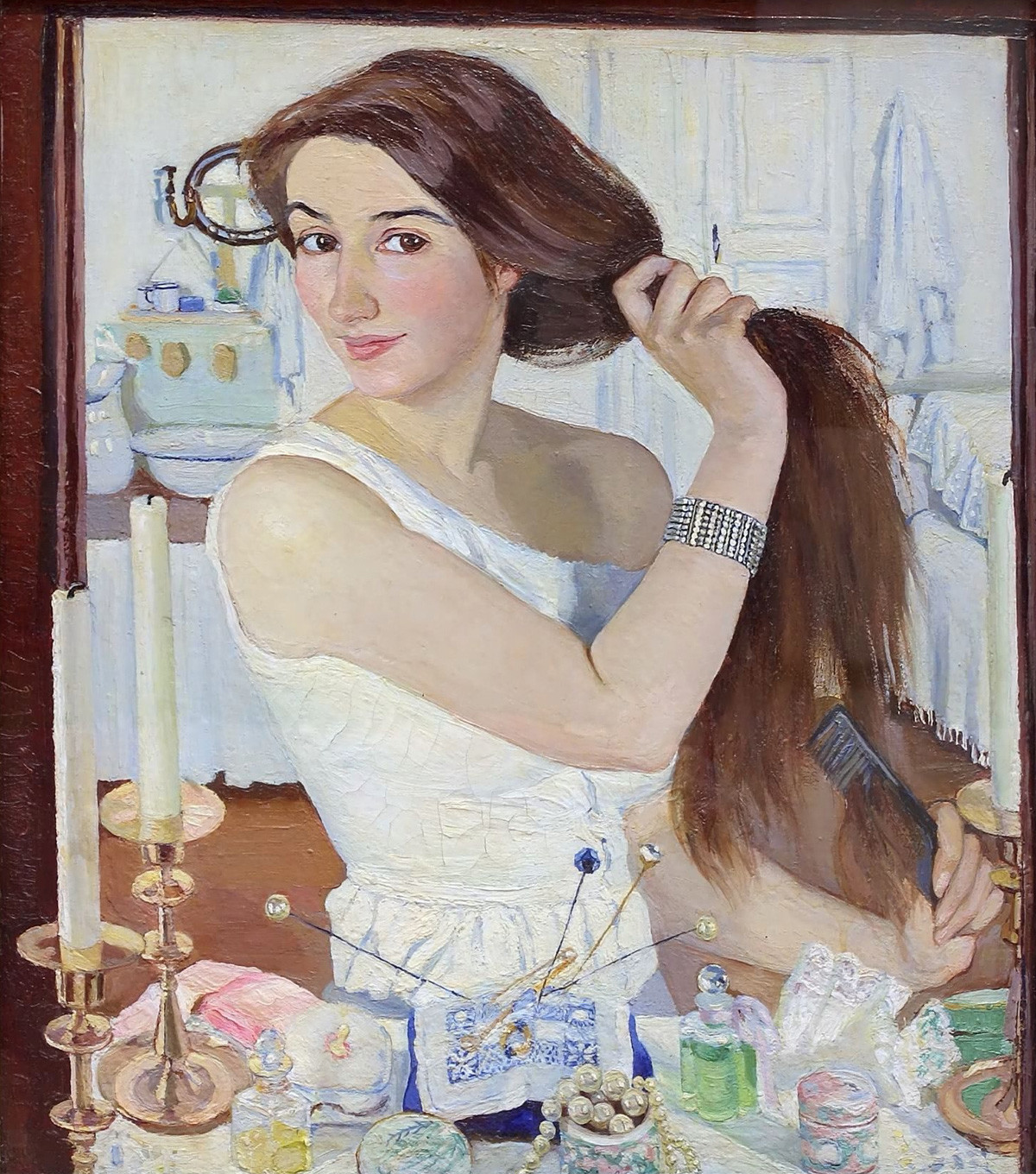
‘At the Dressing-Table. Self-portrait’, 1909
Archive photoWhen the portrait was first presented to the public, the artist Valentin Serov said of it: "A very nice and fresh thing." The picture was immediately bought by the Tretyakov Gallery.

For the Russian elite, sitting for a portrait by Serov was considered an honor. A master of psychological portraits, the Russian impressionist Valentin Serov, painted famous composers, writers, members of the imperial family and Russian princes.
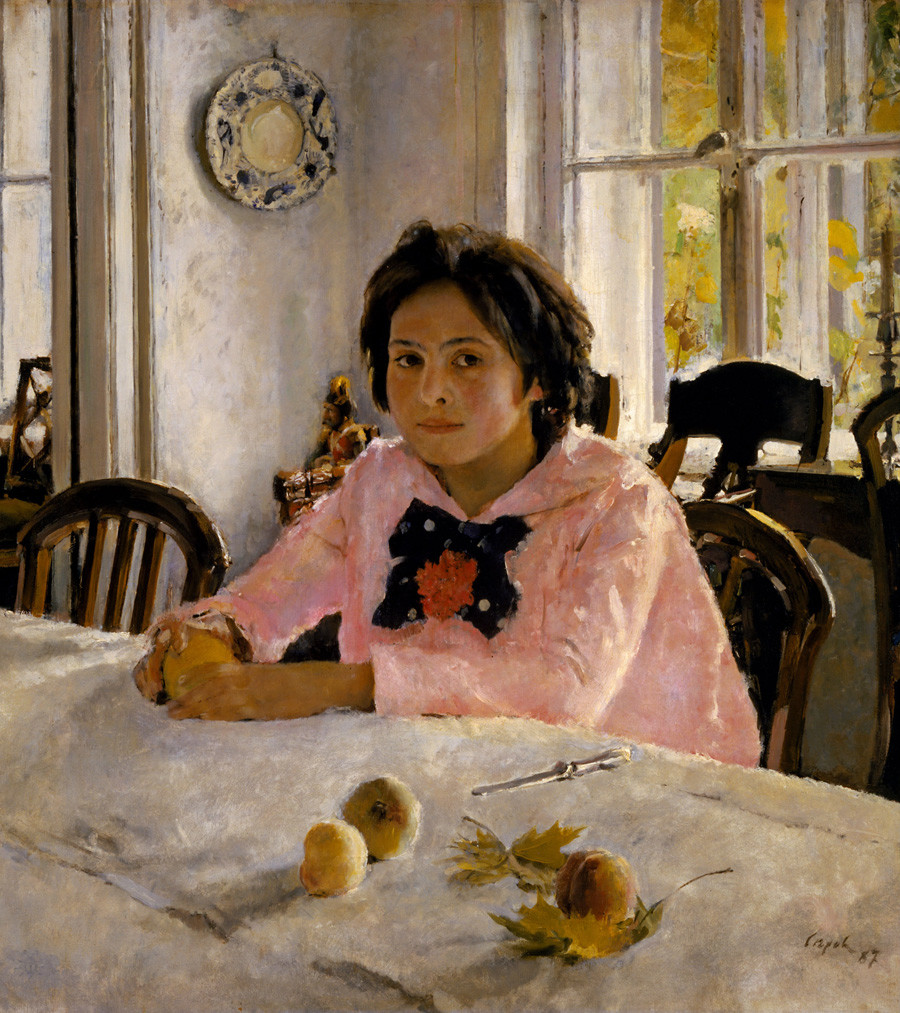
‘Girl with Peaches’, 1887
Tretyakov galleryAnd yet, one of his most significant and famous canvases is the portrait of a 12-year-old girl, Vera Mamontova. She was the daughter of a major entrepreneur and philanthropist, Savva Mamontov, but Serov later removed her name from the picture title. According to the artist, he was painting not the daughter of a famous person but Youth itself.

For nearly 30 years, Siemiradzki lived in Rome. He earned the reputation of one of the most prominent representatives of late European academism, but not straight away and not among everybody. The artist was interested only the ancient world with its myths, festivities, and orgies, for which he got a lot of flak back home, where Peredvizhniki were already in fashion with their depiction of peasants, impoverished orphans and other elements of "the truth of life".
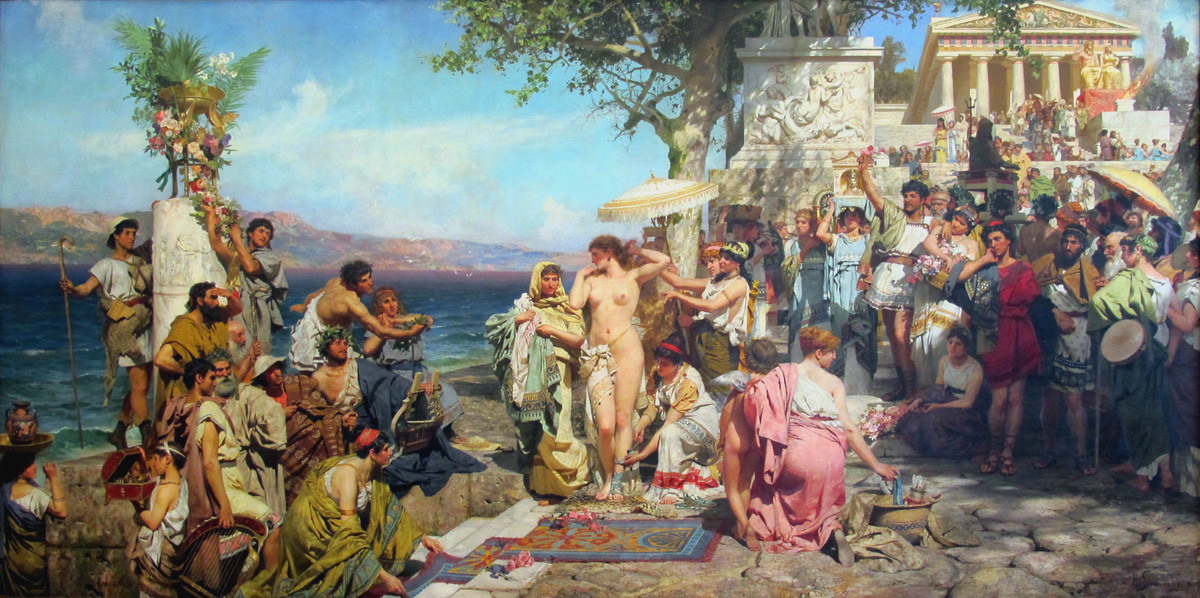
‘Phryne on the Poseidon's celebration in Eleusis’, 1889
Russian MuseumFor example, the most influential art critic of the time, Vladimir Stasov, considered Siemiradzki a hopeless classicist, who "had fallen prey to everything Italian". For his part, Ilya Repin called him a charlatan, while the famous collector Tretyakov refused to buy his works. However, Russian tsars have always been fans of academism: for instance, ‘Phryne’ was bought by Alexander III straight from the exhibition.

An artist of lyrical landscapes, Savrasov quickly earned fame and recognition: at the tender age of 24, he had already become a member of the Academy of Arts. However, down the generations, this realist artist is remembered as a "one-hit wonder": none of his numerous landscapes can compare in popularity to ‘The Rooks…’. Every schoolchild in Russia knows this textbook picture, because they have most likely have had to write an essay on it.
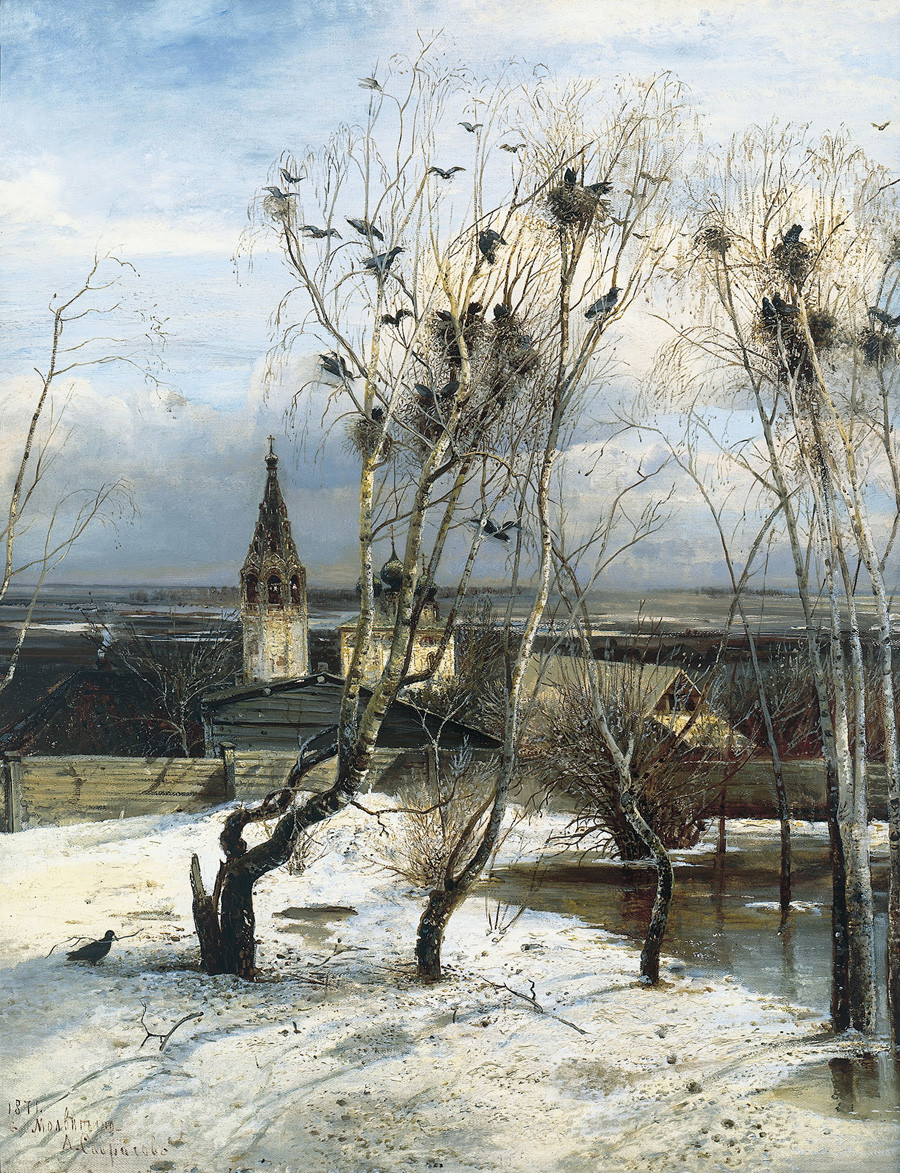
‘The Rooks Have Come Back’, 1871
Tretyakov gallery
If you see a painting of an amazing Russian forest or fields with pine trees on the side of the road, you can be sure that it’s a Shishkin. According to a poll conducted by the All-Russia Public Opinion Research Center, he is the most recognizable artist in Russia.
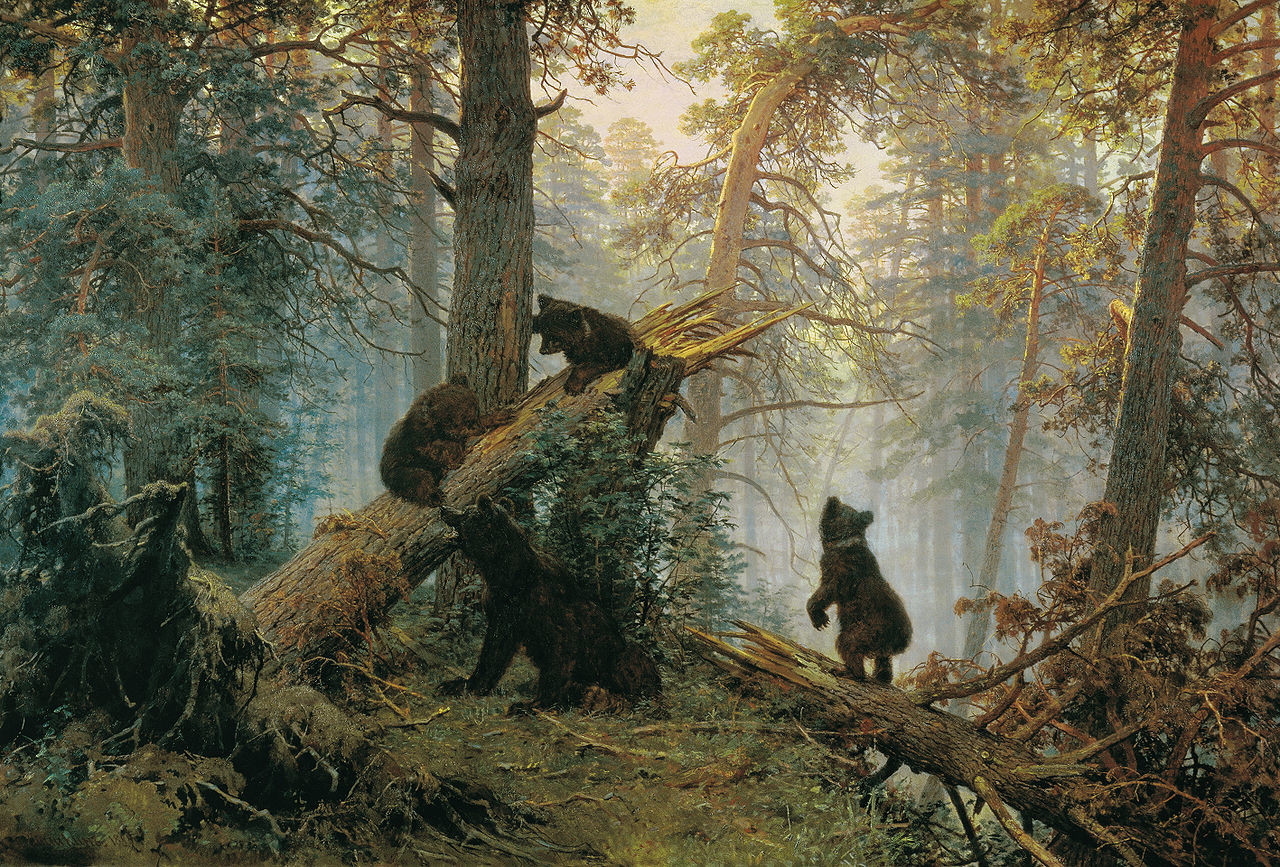
‘Morning in a Pine Forest’, 1889
Tretyakov GalleryWhich may be largely due to the Mishka Kosolapy (clumsy bear) candies, whose wrapper features a fragment of this picture. And yet, no-one painted remote thickets, meadows and fields quite like him, either in terms of quantity or quality. The forest was everything that Shishkin was ever interested in.

Many Russian artists of the 19th century visited the European artistic mecca, Italy, but few made it their creative home. Landscape painter Shchedrin spent practically all his life depicting the beauty of Italy, and in particular Naples. This is where he died too, before reaching 40. He painted his charming ‘Sorrento’ four years before his death.
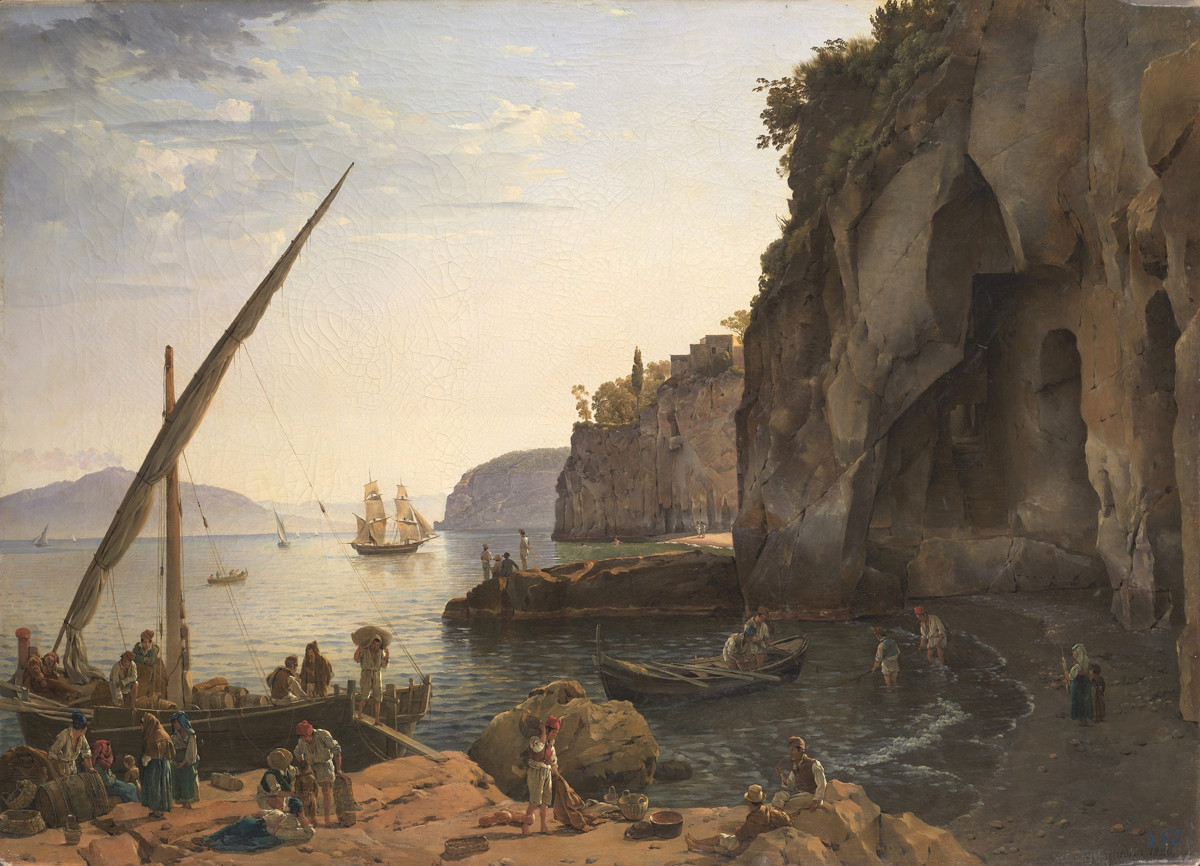
‘Sorrento’, 1826
Tretyakov Gallery
A representative of Sots Art and, as he himself termed it, "folk pop art", for more than 30 years, Sokov worked with the myths, images and symbols of Russian culture, juxtaposing them with Western civilization.
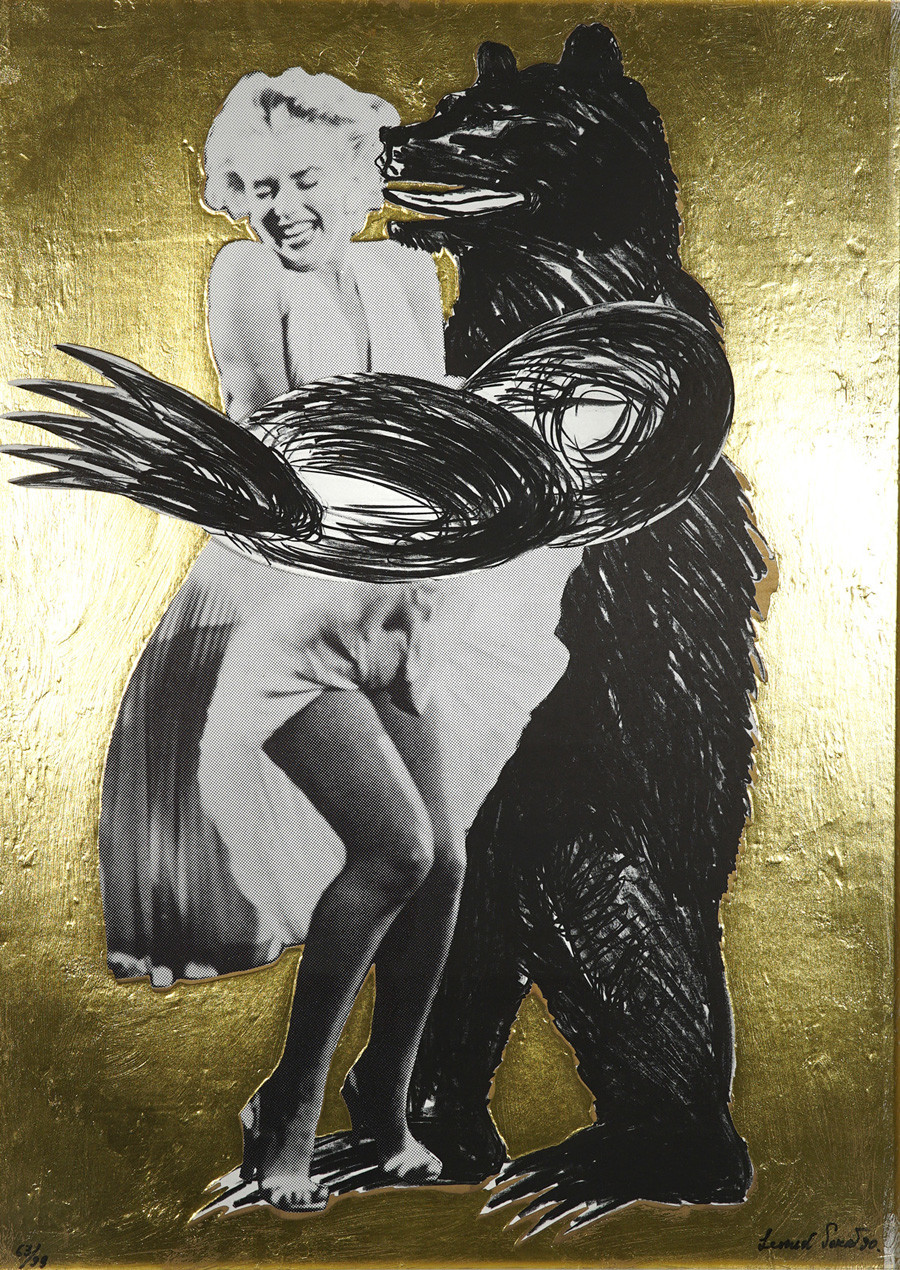
‘Merlin and the Bear’, 1989-1990
Russian MuseumThe artist and sculptor left the USSR for the USA, in order "not to break" under the pressure of the totalitarian system of the state order, which dictated everything to the artist, down to the smallest details: "In which hand Lenin should hold his cap, how long the pioneer's pants should be and which was Marx's pivot foot, " Sokov quipped.

Surikov made a name for himself by depicting various tragic moments in Russian history. For example, ‘Boyarina Morozova’ tells the story of the fierce struggle against Old Believers: Morozova is being carted off to a nunnery (which was equivalent to prison) at the time of the church schism.
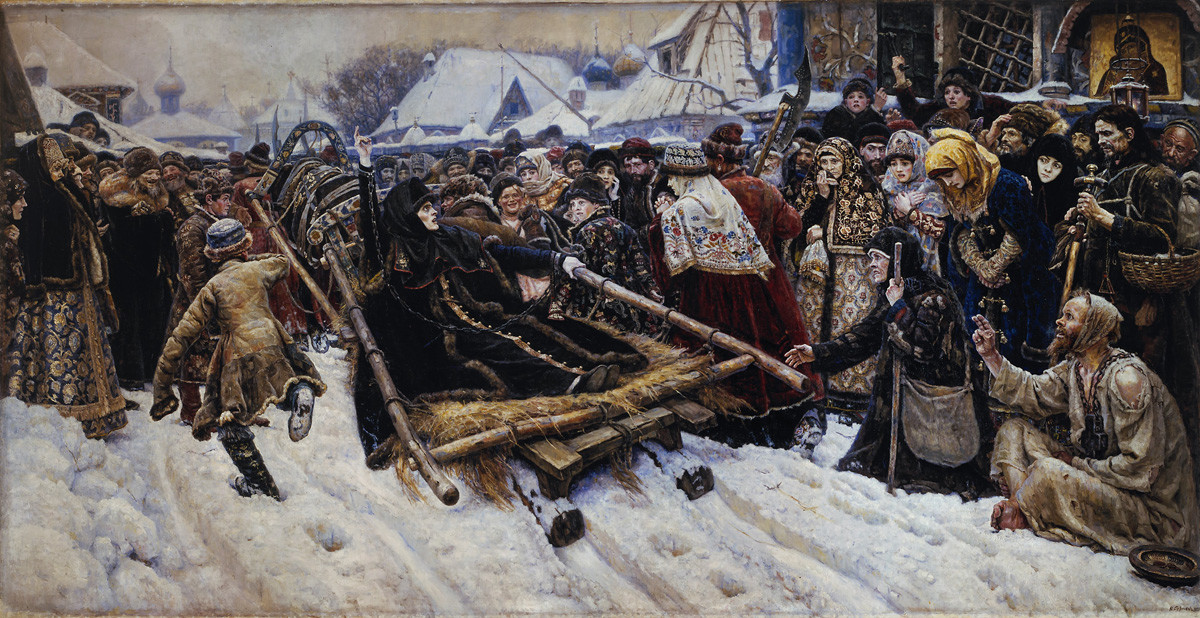
‘Boyarina Morozova’, 1884-1887
Tretyakov gallery
Although the Monument to the Third International, or Tatlin's Tower, was never built, it became the artist's most emblematic brainchild and the hallmark of constructivism all over the world. Tatlin designed his tower as a symbol of the 1917 revolution to be erected in Leningrad (now St. Petersburg).
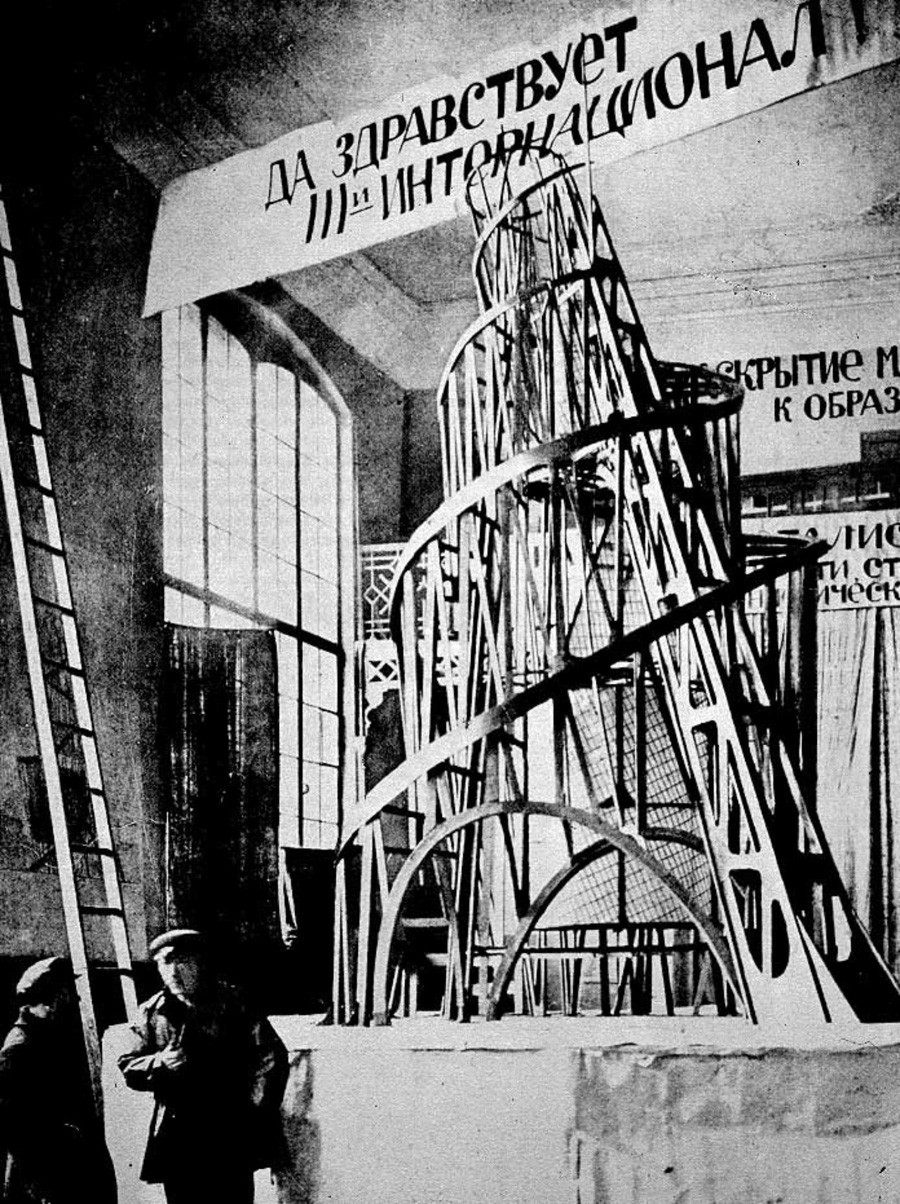
‘Tatlin's Tower’, 1919
Archive photoHowever, by the late 1920s, the Soviet leadership lost interest in avant-garde artists and stopped engaging with them, so the tower was never built.

Throughout his life, this nonconformist artist has been painting practically one and the same character - a deformed human image, a mutant. “This is not a portrait of a specific sitter, but a universal portrait... and a terribly familiar one at that,” explained Tselkov. “I accidentally managed to rip the mask off humanity.”
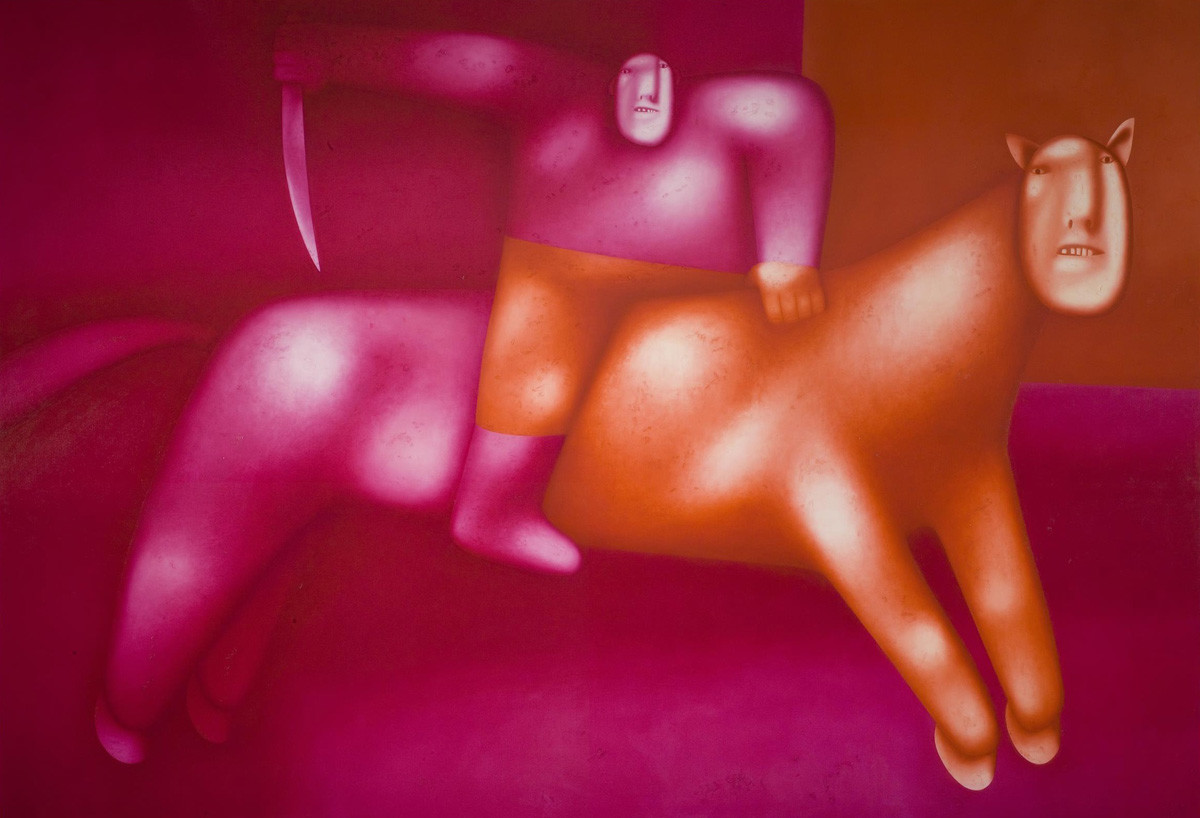
‘Rider’, 1998
HermitageThe Soviet leadership were not particularly fond of this "flip side of a human personality". In 1977, Tselkov was asked to leave the country, and he went to France. It was only in 2015 that he became a Russian citizen again.

This patriarch of mystical surrealism was born in Russia, but spent most of his life in Europe and America, where he developed the technique of his famous anthropomorphic landscapes. Because of the similarity in style, he is often described as "the Russian Dali", except that Tchelitchew was the first to display elements of mystical surrealism in his works: they say, nine years before, Salvador Dali did the same.
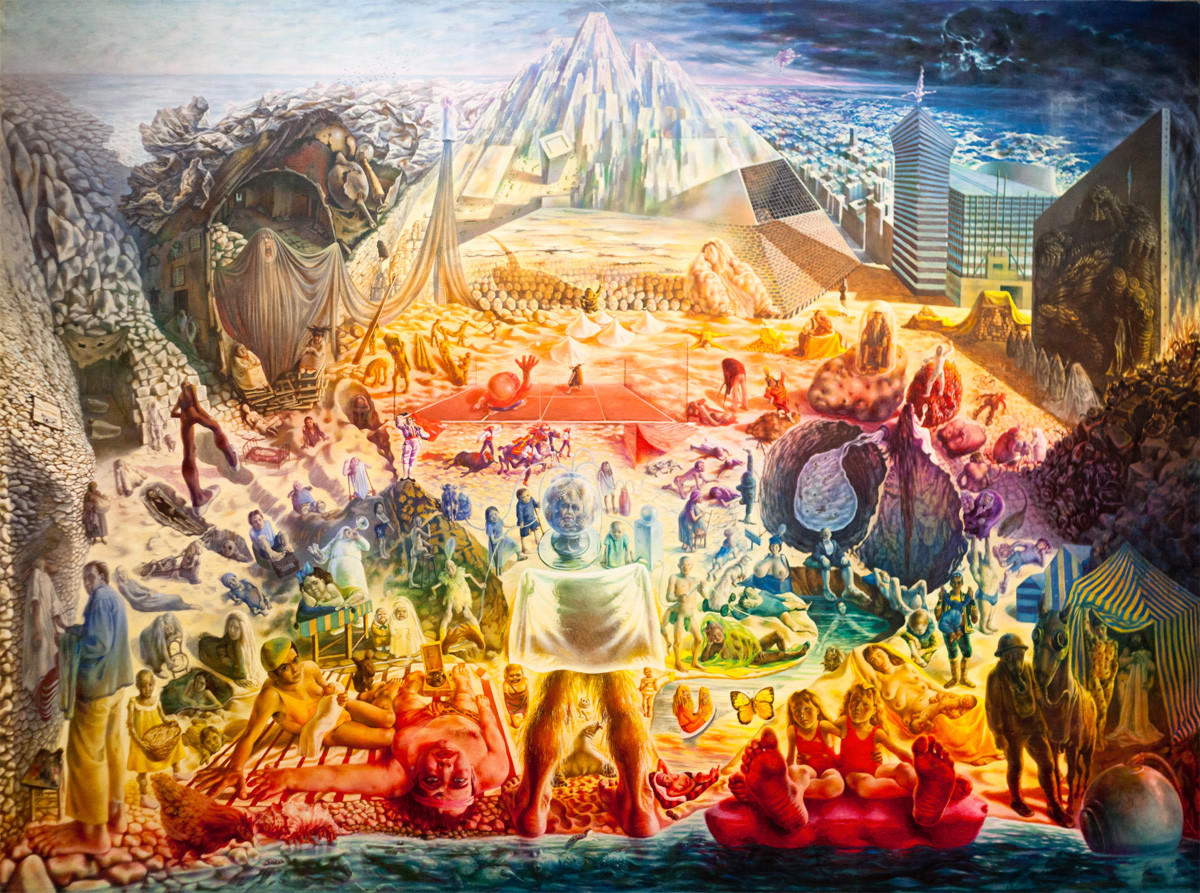
‘Phenomena’, 1936-1938
Tretyakov galleryThese days, his works can be found in major European museums and collections, whereas in Russia, only the Tretyakov Gallery has a single Tchelitchew. ‘Phenomena’ was secretly brought to Russia by a friend of Tchelitchew, choreographer Lincoln Kirstein. He handed it to the Tretyakov Gallery, but until the mid-1990s, it remained in the museum's storerooms.

The Romanovs took the throne in 1613. The dynasty ruled the country for centuries, but at the very beginning, it needed something to confirm its legitimacy. A major role in this was played by the image of the royal family lineage created by the icon painter Ushakov. Art critics call it the first and best justification of the claim that the Romanovs were given their power from above.
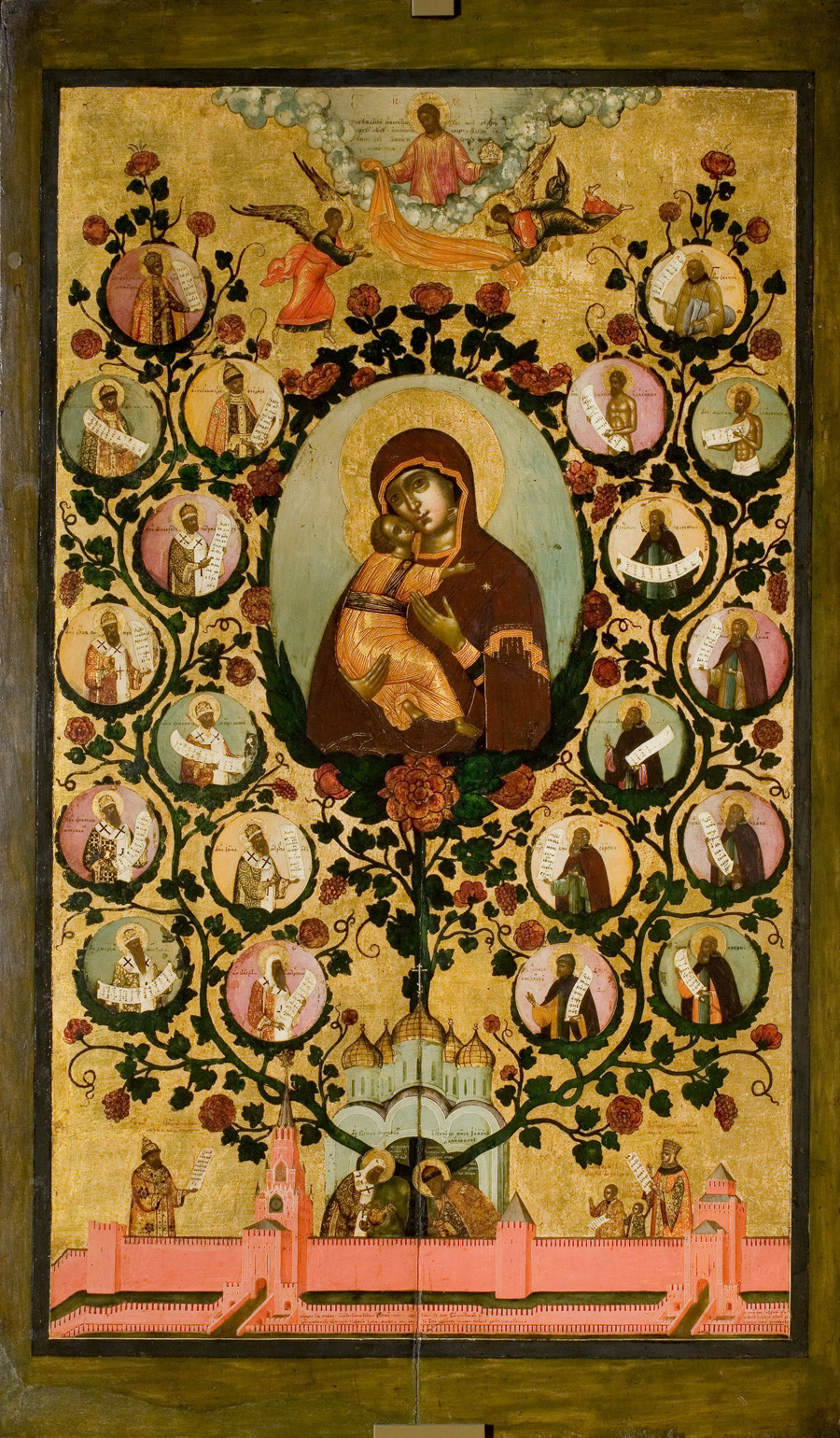
‘The Tree of the Muscovite State’, 1668
Tretyakov galleryThe Romanovs must have agreed with that assessment: they made Ushakov the chief icon painter of the empire and showered him with favors until his death.

Vasnetsov tried himself in different styles and types of work, from painting church frescos (like in the Church of the Savior on the Spilled Blood in St. Petersburg) to creating curving art nouveau embellishments. However, for most Russians, he is associated exclusively with characters from Russian fairy tales. In popular imagination, these characters look very much the way Vasnetsov depicted them.
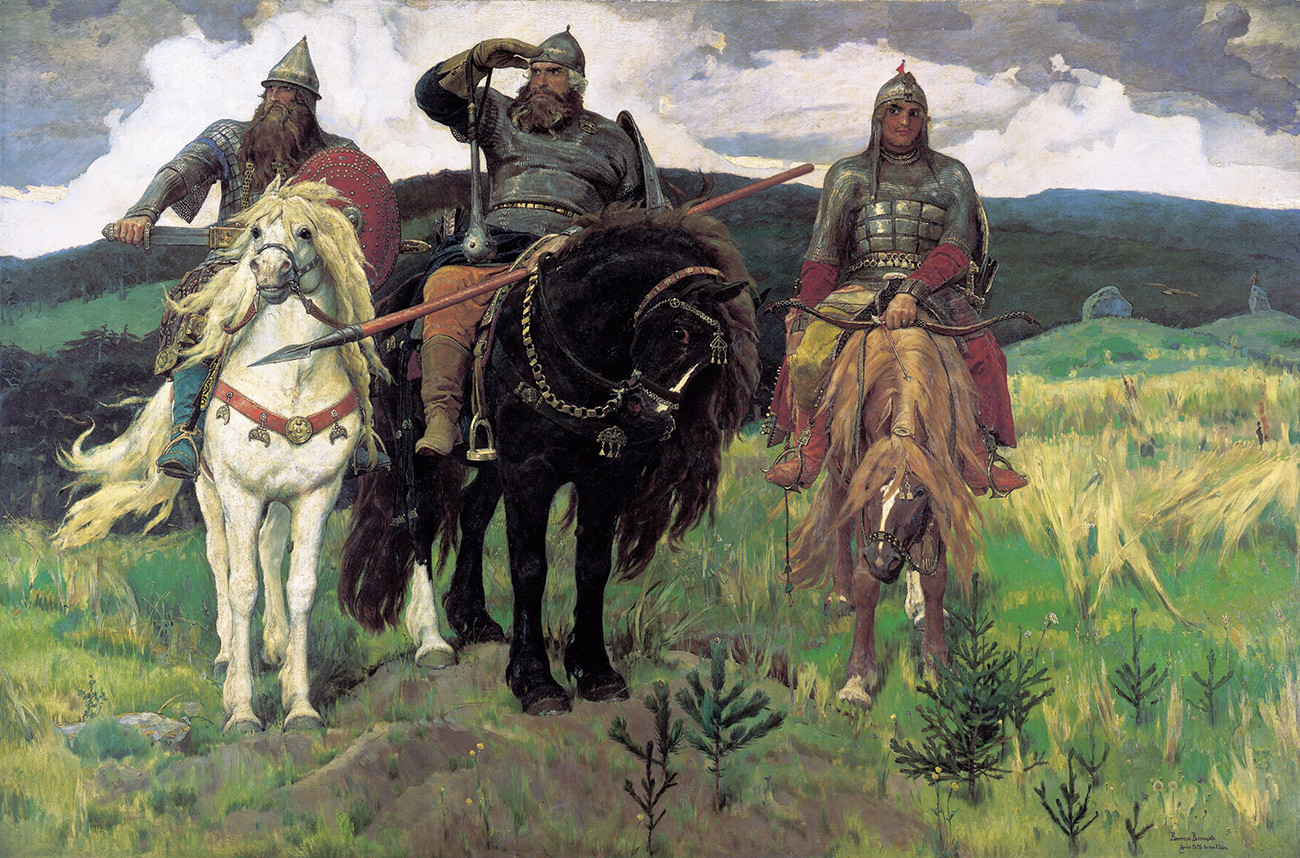
«Bogatyrs», 1881-1898
Viktor Vasnetsov / Tretyakov GalleryThe painting ‘Bogatyrs’, which depicts popular Slavic superheroes Dobrynya Nikitich, Ilya Muromets and Alyosha Popovich, took him nearly 20 years to complete.

Venetsianov was one of the first artists to depict scenes from the life of common people, making a name for himself in "the peasant genre". At the same time, he was not particularly interested in the practicalities of peasants' everyday life.
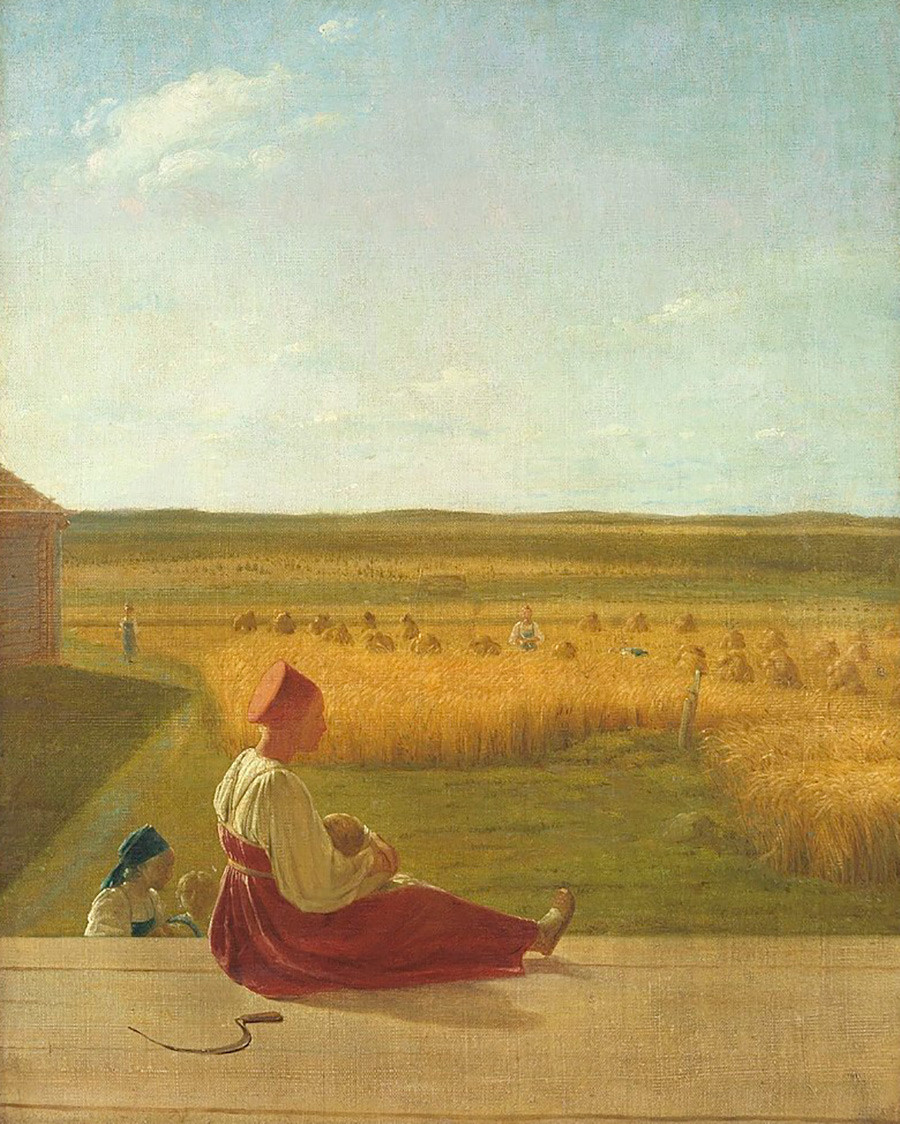
‘Summer. Reaping’, 1830
Alexey Venetsianov / Tretyakov GalleryHis paintings were more about spaciousness, freedom and immensity. Many believe that his ‘Reaping’ painting epitomizes the true Russian landscape.

A painter of battle scenes, Vereshchagin usually painted what he saw with his own eyes. He had been to many wars and had traveled the world from India to Syria. He organized his exhibitions in New York and London himself, often displaying not only his paintings but also trophies from the battlefield.
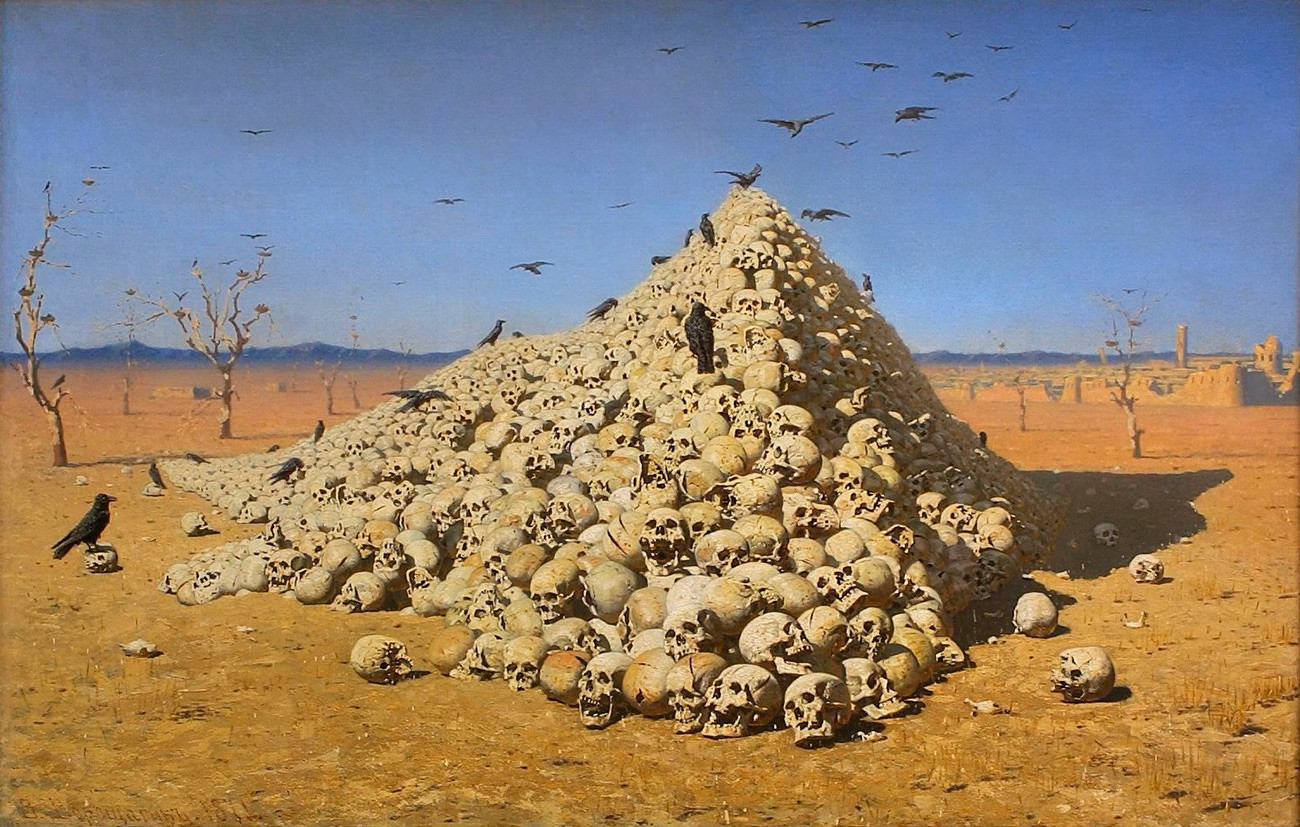
‘The Apotheosis of War’, 1871
Vasily Vereshchagin / Tretyakov GalleryHowever, his ‘Apotheosis of War’ is an exception, in that he painted it not from life, but from an idea in his head. On its frame the artist wrote: "Dedicated to all great conquerors - past, present and future."

Vrubel is primarily associated with the image of a demon, whom he painted repeatedly and obsessively. The image of a fallen angel suffering from his demonic nature had been inspired by Mikhail Lermontov's poem of the same name. Vrubel made some 30 sketches for this painting.
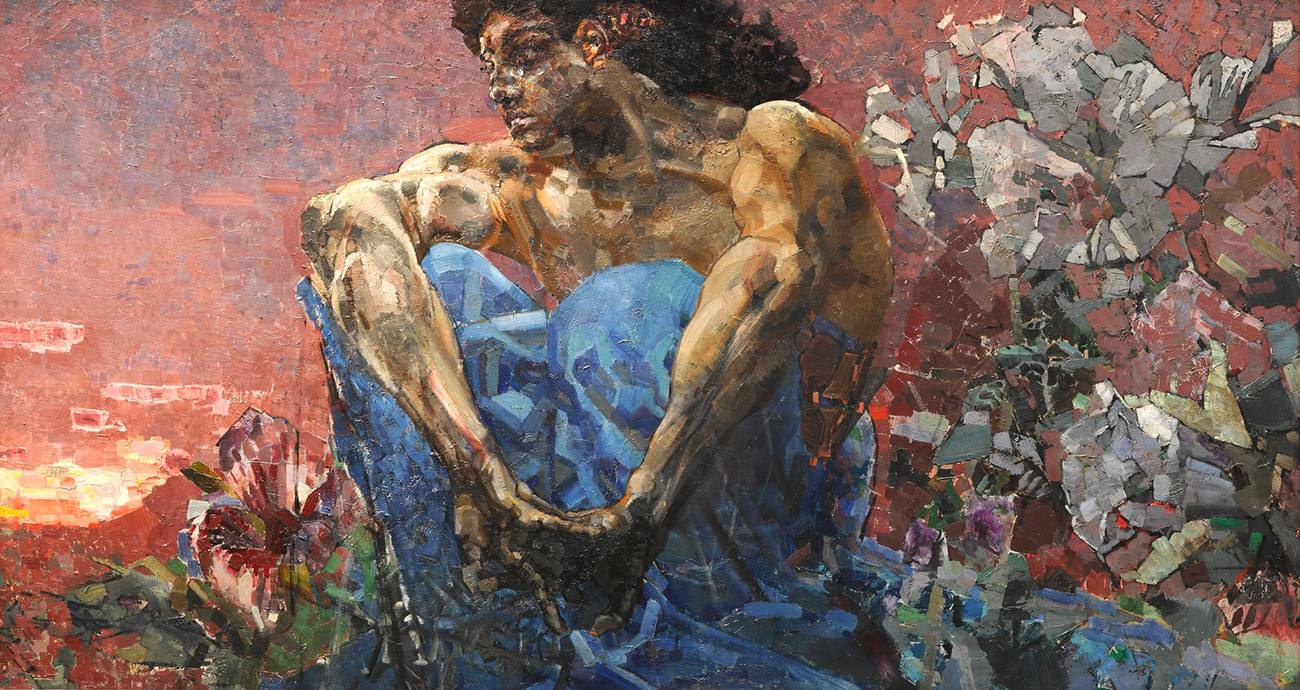
‘Demon Seated’, 1890
Mikhail Vrubel / Tretyakov GalleryVrubel admitted that he had seen a demon in his nightmares too. An acute psychosis, which the artist developed in his later life, combined with his obsession with a single image prompted his contemporaries to conclude that Vrubel had been driven mad by his addiction to demonism.

Weisberg stands apart in the context of Russian art: he belongs neither to official art, nor to nonconformists. His trademark style is so-called "white painting", pictures that appear to have been painted with white paint on a white background. According to Weisberg himself, he tried to achieve "invisible art".

‘Portrait of the Artist's Wife’, 1976
Vladimir Weisberg / Radishchev Art MuseumIn actual fact, he hardly ever used white pigment. His paintings are an intricate combination of small multi-colored particles. "A picture should turn white if all, literally all, its colors, fit in," he used to say.

A pioneer of the Moscow "unofficial art" and a perennial loner, Yankilevsky did not fit into any artistic association and always was on the sidelines, as it were. Many simply did not understand his existential works: all his life he painted a metaphysical "Man opposed to Eternity".
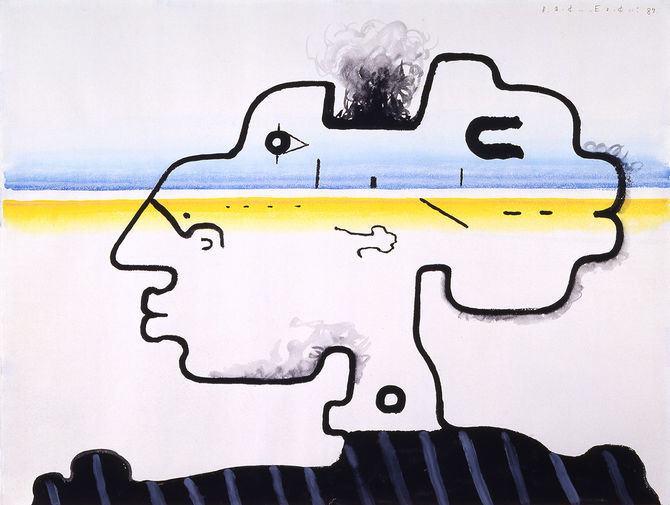
‘Loneliness in the Universe’, 2013
MAMMThe idea of people in boxes came to him under the influence of existentialism. These "existential boxes" became a metaphor for a person whose aspirations and dreams always come up against the walls of a social environment. It must be said that life in the USSR was very much conducive to this perception of reality.

In the 1970s, Zakharov joined the circle of Moscow Conceptualists, starting with absurdist actions and leading to painting. "Between 1985 and 1989, I created a lot of huge paintings, after which I did not paint a single one with the exception of just a few made in charcoal, and now to go back to canvas and oil is a torture for me," he said. In 1989, he moved to Cologne, where a new stage in his artistic career began - installations.
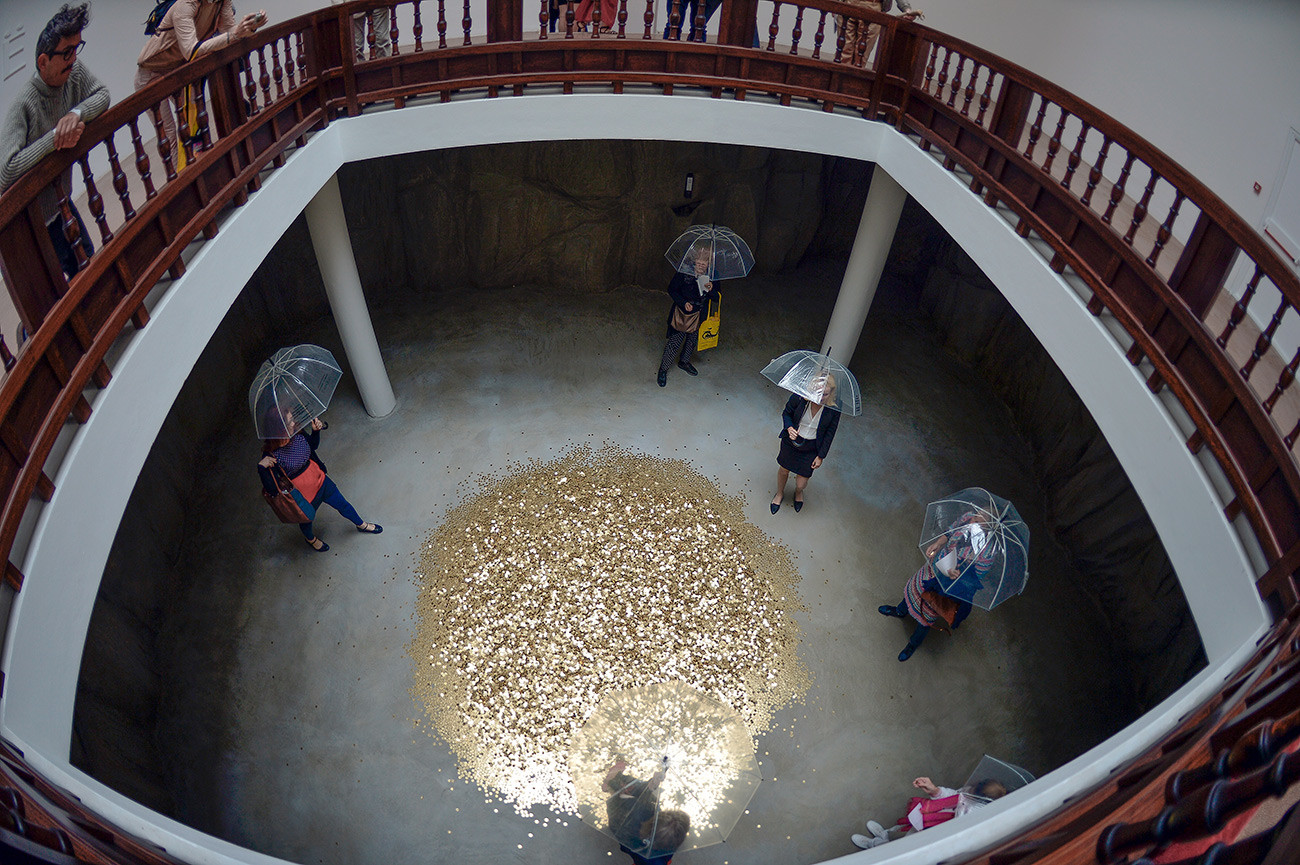
‘Danae’, 2013
AFPHis project "Danae" became a sensation at the Venice Biennale. In the first hour after its opening, a queue lined up to the Russian pavilion to look at the unique process of a famous Ancient Greek myth materializing through a golden shower of coins with the words trust, freedom, love, and unity written on them pouring down from a room where only male viewers were allowed, to "the womb", where only female viewers were allowed.

He is the Russian king of kitsch, without whom no major exhibition of contemporary art can do. Zvezdochetov belongs to the generation of Soviet artists who were the first to enter the international art scene and became known as "contemporary Russian art".
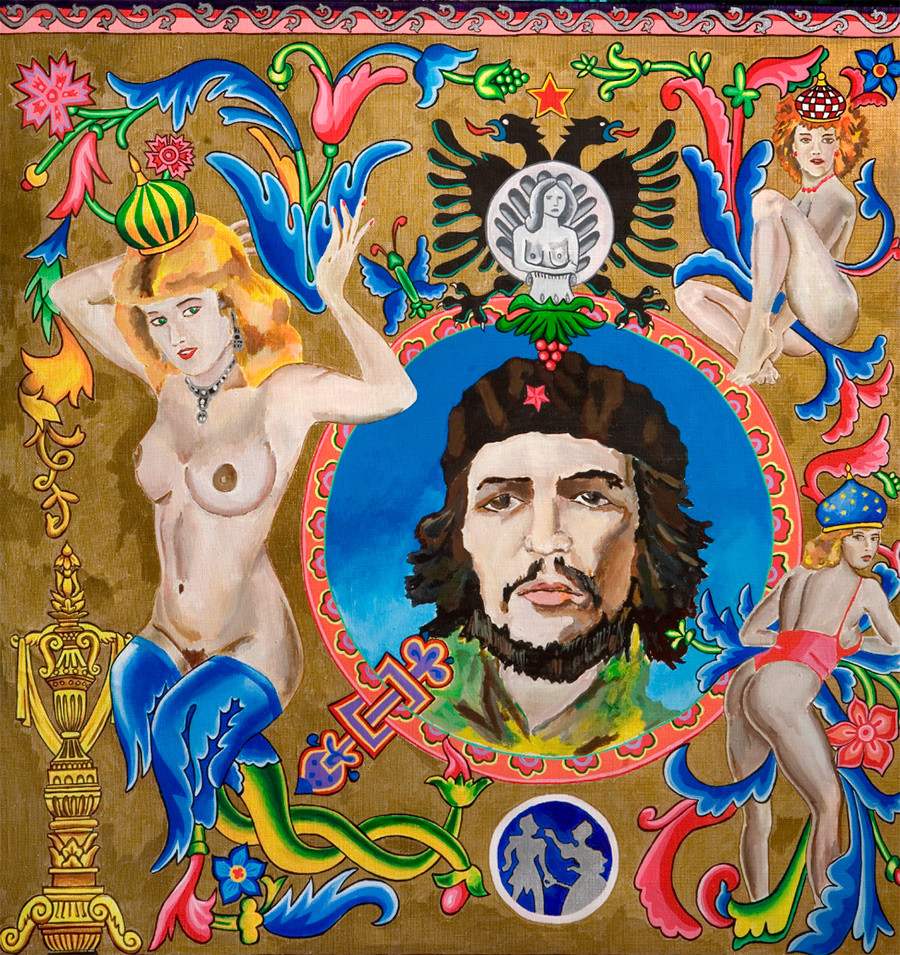
‘Che Guevara’, 2000
vladey.netThere was a time when he was offended to be called an “artist”. He said, "I am a person who offers interpretations... All I do are quotations and compilations."

He is often referred to as "the Russian Van Gogh". Robert Falk said of him: "Every touch of his brush is priceless", while Picasso himself echoed him. A decorator by trade, Zverev entered the art scene in the late 1950s, and in 1965, his first international exhibition was held in Motte in Paris, although he himself never went abroad.
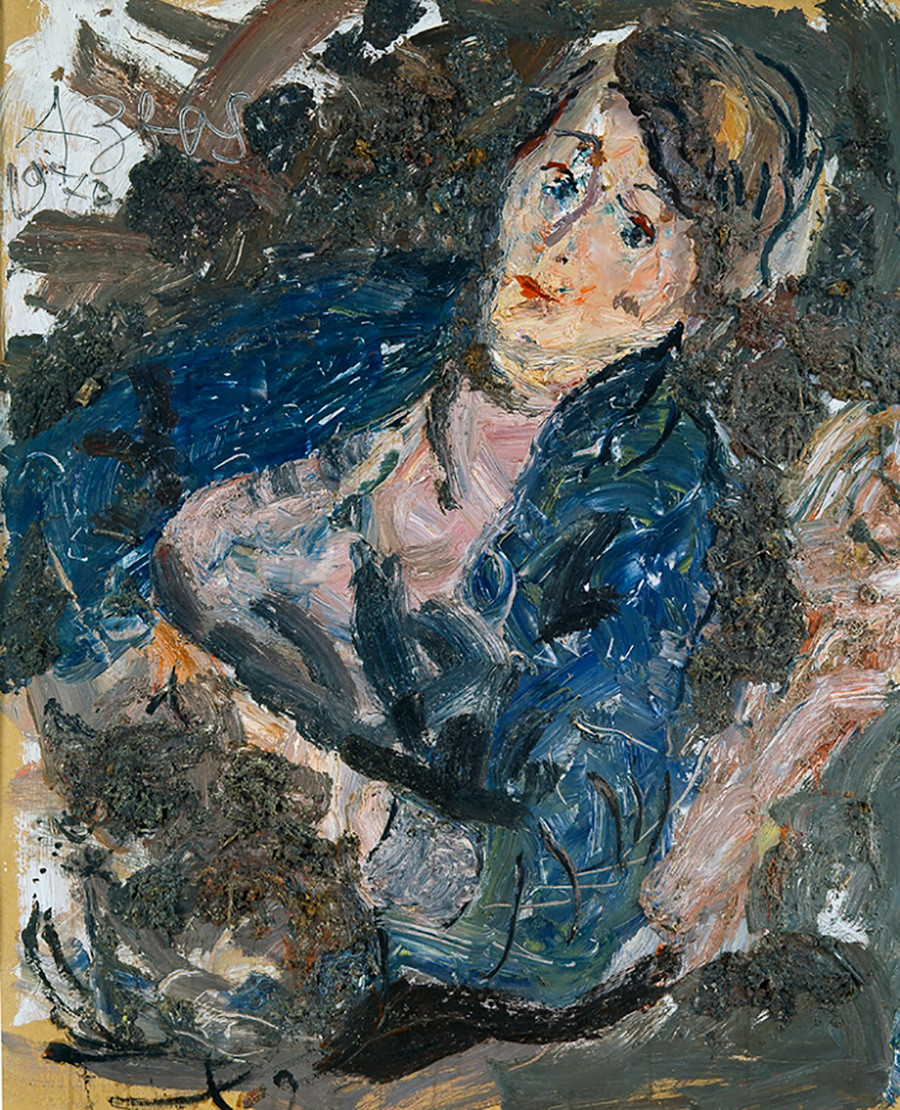
‘Portrait of K.M. Aseeva’, 1969
МОММАThe Soviet system did not like Zverev. The police were after him to arrest him for "parasitism" (which was a criminal offence in the USSR), while he lived solely for his art and for his only love and muse, the widow of the poet Nikolai Aseev, Ksenia Aseeva, who was 39 years his senior.
If using any of Russia Beyond's content, partly or in full, always provide an active hyperlink to the original material.
Subscribe
to our newsletter!
Get the week's best stories straight to your inbox